
europeanbusinessmagazine.com spring edition | 2024
AI Revolution in Business NAVIGATING THE FUTURE OF AUTOMATION Securing the Future: The Vision for a Cyber-Resilient World featuring BreachLock Founder & CEO, Seemant Sehgal
The
Bartosz Skwarczek- Founder of G2A.COM
Excuses, excuses 4 REASONS WHY CEOS FAIL TO PRIORITISE SUSTAINABLE GROWTH
THE VISIONARY LEADER WITHIN THE GLOBAL GAMING MARKETPLACE





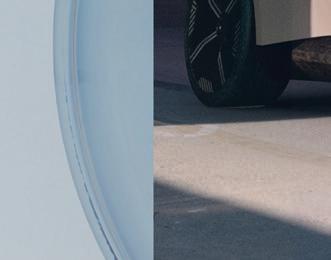



















IMAGINE TODAY. RE: THINK, RE: DUCE, RE: USE, RE: CYCLE. DISCOVER THE BMW iVISION CIRCULAR CONCEPT CAR. RE: THINK RE: DUCE RE:USE RE : C Y C L E ERKNIHT: ECUD:ER :ER ESU ELCYC:ER ER : HT I N K R E : DUCE RE:USE
RE:









7 Dr. Thomas Becker
12 Making the most of your eSaaS environment through experience-led adoption
14 Empowering Success with Payment Partners
16 Ben Owen, Cloud Director at Cloudera
21 Maximising Profit Margins: How Duty Reclaim Can Bolster Your Bottom Line
22 Bartosz Skwarczek
26 AI Governance Alliance Calls for Inclusive Access to Advanced Artificial Intelligence
28 The challenges today for tomorrow’s currency
30 Mark Zuckerberg’s companies fined $2.8 billion for wrongful user data processing – GDPR report
32 A Glimpse into the Future of Efficient Supply Chain
36 New Report Measures Quality of Growth for New Economic Era
39 Industrial control and factory automation is creating huge opportunity in the market
42 Seemant Sehgal
48 3 Ways Intelligent Automation Delivers Competitive Advantage to Wealth Managers
51 Green Data Center Market WORTH OVER USD 975 billion by 2036
52 How businesses can prevent digital transformation failure
56 Coll & ElSherbini to Headline Inaugural GillenMarkets London Squash Classic 2024
59 From Silicon to Supremacy in the AI Era
62 Stripe’s Valuation Rebounds to $65 Billion as Payments Giant Shrugs Off Pandemic Slump
64
66
europeanbusinessmagazine.com
MAGAZINE EUROPEAN BUSINESS
Publisher
Nick Staunton
Editor
Patricia Cullen
Deputy Editor
Anthony Gill
Associate Publisher
Brad Adams
Features Editor
Katie Winearls
Head of Production
Paul Rogers
Head of Design
Vladimir Mladenovski
Subscriptions Manager
Rebecca Hill
Head of Business Development
Paul Matthews
Advertising Sales
Brad Adams
Tara Duckworth
Advertising Sales
Tara Duckworth, Mike Ray, Andy Ellis, Mark Holburn
Contributing writers
Patricia Cullen, Richard Fitzpatrick, Bala Murali Krishna, Shilpa Meen, Argee Laraya, Aimee Ni Mhaolcraibhe, Gordana Ristic, Jonathan Hooker, Jose Ignacio Latorre
Head of Digital
Stephen Scott
Photographer
Ben Fisher
NST Publishing Ltd, 19 Leamington Spa (studio 1) Leamington Spa,Cv324tf, UK
The information contained has been contained from sources the proprietor believes to be wholly correct however no legal liability can be accepted for any errors. No part of this publication can be reproduced without consent of the publisher.
europeanbusinessmagazine.com
5
Table of Contents
Kraken Sets Sights on Institutional Investors with New Crypto Trading Arm
How to mitigate business risks and address the triple planetary crisis 68 Global Business Vanguards Aligning with 2045 Net Zero Goals 70 An Unsustainable Practice for the World’s Biggest Brands 72 Sustainability growing influence on financial due diligence process 74 Redefining Industries and Reshaping the Future 78 Business and Innovation Driving the European Gaming Industry 82 Gerry Zack
4 reasons why CEOs fail to prioritise sustainable growth 88 Clash of the AI Domain with Musk vs OpenAI 90 Getting ahead of APP fraud in the legal sector 92 How ecommerce is transforming international express courier services 94 Going beyond manual processes! The transformative impact of automation on your business operations 96 Demystifying the Governance of EHS and ESG 98 Navigating the Intricate Network of Trade Compliance Obligations 100 Preparing Your Organisation for the Future of AI
86
ELECTRIC. DIGITAL. CIRCULAR.
A NEW ERA OF MOBILITY.

DISCOVER THE BMW VISION NEUE KLASSE CONCEPT CAR.
WITH Dr. Thomas Becker
Vice President Sustainability and Mobility Strategy BMW Group

Decarbonization Strategy: “Can you share insights into BMW Group’s decarbonization journey in the transport industry? How has the company approached this transformation, and what key milestones have been achieved so far?”
BMW Group is part of the Business Ambition for 1.5°C and the United Nations’ Race to Zero, ensuring we’re responsible for our part in meeting the commitments set out in the Paris Agreement. Sustainability is at the centre of our strategic direction.
To give you a sense of where we are in our decarbonization journey – by 2030, we will reduce CO2 emissions per car per kilometre driven by half from 2019 levels, with at least half of all cars we sell worldwide being fully electric in the same timeframe. We also look at the whole lifecycle of our vehicles. Our target is to reduce CO2 emissions per vehicle by 40% across the range and throughout the entire lifecycle, from the supply chain through production to the end of the use phase.
Technological innovation has been a significant part of our transformation and decarbonization. In 2025 we will introduce our NEUE KLASSE to the market, with a new generation of batteries that use more secondary material and have higher energy density, charging speed and range, as well as generating less CO2 in their production than today’s batteries.
Our focus on circularity and closedloop systems has already reduced our need for raw materials and the associated emissions. Our ‘Secondary First’ approach aims to successively increase this figure to 50 per cent. In our manufacturing plants, we’re striving to replace natural gas as fast as possible with renewable energies. And we’re making progress with our supply partners towards delivering on our ambitious decarbonization targets.
We don’t yet have all the answers and there’s no doubt that decarbonizing in the urgent time frame required is a major task, but we’re hungry to get there and to keep developing new and pioneering ways to reduce our carbon footprint – from EVs, to hydrogen to recycled materials.

EV Technological Innovations:
“Given the rapid evolution of electric vehicle (EV) technology, how is BMW Group innovating to stay at the forefront? Could you discuss any specific technological advancements or features that set BMW’s electric vehicles apart, emphasizing transparency in communicating these innovations to consumers?”
From 2025 onwards, our NEUE KLASSE range of cars will have a new generation of battery and a trailblazing approach to both the use of recycled parts and ultimate vehicle recyclability. It will include a new concept that will allow us to tailor-make batteries to fit any model, as well as recently developed component recycling techniques. This year, around two-thirds of our investments will flow into future technologies such as electromobility, including hydrogen. For us, the next technical step is a second generation of the hydrogen fuel cell drive train for our BMW iX5 Hydrogen model (based on our BMW X5 model) that was first produced in 2022. Our pilot fleet of iX5 hydrogen cars is currently being tested all around the world, and we’re investigating the possibility of launching a mass production hydrogen car before the end of this decade. As a premium manufacturer, it’s important we’re clear in communicating these innovations with our customers. We want to take them on our decarbonization journey with us because we believe premium and sustainability will be inseparable in the future. Transparency is key here, especially when it comes to explaining how these innovations will help us with our targets and net zero commitments.
europeanbusinessmagazine.com 7
LEADERSHIP INTERVIEW
WRITTEN

Hydrogen’s Potential: “Hydrogen is gaining attention as a potential green energy source. How does BMW Group view the role of hydrogen in the decarbonization of the transport industry, and what implications might this have for EU markets in the coming years?”
With bold emissions targets on the horizon, we can’t leave hydrogen behind. It’s important that we pursue all available avenues in the green transition and the opportunities presented by hydrogen – together with EVs – are huge.
We believe it will play a role as a fuel in EU markets in the future – and that hydrogen will create more zero and low emission choices for consumers and play a critical role in road transport decarbonisation.
Hydrogen fuel cell technology could become a key pillar in the BMW Group’s portfolio of drive trains –the group of components that deliver
mechanical power. The reduced charging time and increased range offer a practical solution for vehicles – both HGVs and passenger vehicles –where electric batteries don’t support all the mobility needs of users. And with over 40 years of experience in hydrogen technology and more than 20 years in hydrogen fuel cell technology, we’re in a strong position to share what we’ve learnt to drive wider positive change.
Technology Openness: “In the pursuit of decarbonization, collaboration and openness to new technologies are crucial. How is BMW Group fostering collaboration and embracing technological openness, both within the company and through external partnerships, to drive sustainable solutions in the transport sector?”
At BMW Group, we take an open technology and innovation approach to deliver new mobility solutions. This means we unlock the innovation
potential of startups, cross industry technologies and entrepreneurs. This is essential not just for finding new solutions but keeping on the path to meeting our decarbonisation and circularity commitments.
Another key element to our open technology approach is the use of different drive trains. Electrification is very much the focus for the next few years, not least as it will help ensure carbon reduction targets for 2030 are met, but we expect hydrogen to have a role in the future too, particularly with haulage, longer distance and for locations where the electric charging infrastructure is less developed.
The upcoming NEUE KLASSE will be a major technological leap forward for the BMW Group in electric drive systems. It is the clear focal point of our investments for the future and integrates the next-generation electric drive train, as well as the electrical system/electronics infrastructure, demonstrating technology’s role in new mobility solutions.
europeanbusinessmagazine.com 8
Challenges and Opportunities:
“As the transport industry undergoes a significant transformation, what challenges and opportunities does BMW Group foresee in the decarbonization journey? How is the company navigating potential obstacles and leveraging opportunities to drive positive change?”
The new technologies we’re developing are just one piece of the decarbonization puzzle. The other pieces are mileage. Data shows that at the moment that in markets like Europe, the average age of the car on the road is going up and not down.
This means that policies that accelerate the migration to newer technologies are highly important, alongside finding ways to lower the CO2 footprint of the fuels that will still be going into combustion engine cars for a long time to come. It’s not an either / or situation. We need all of it combined. We have to work in partnership. Just to give one crucial example, infrastructure. If you look at the pace of electrification in different markets, you find a direct relationship with availability of public charging infrastructure. Through our IONITY joint venture together with other car makers, we’re helping to take fast, high-powered charging to the main motorways. But we can’t bring it to the roadside in inner cities, for example. So here we need other players to take responsibilities too.
The need for government and business to work more closely together to develop infrastructure is urgent. In the EU, we have a big difference in EV uptake between countries. We need a stronger collaboration in those markets that aren’t as fast as they could be, to make it clear that electric driving is a choice that’s supported, not just in terms of financial incentives but also in terms of certainty that you can use it on a day to day basis.
Consumer Adoption and Education: “Consumer awareness and education play a crucial role in the widespread adoption of electric vehicles. How is BMW Group working to educate consumers about the benefits of electric mobility, and what initiatives are in place to encourage broader acceptance and understanding?”


From 2021 to 2022, BMW Group increased sales of fully electric vehicles as a percentage of total sales by +107.8%. By 2030, 50% of all the cars we sell will be electric.
In our efforts to increase take up of EVs, we’re working across the lifecycle of our vehicles to improve efficiencies in production and the supply chain to help bring the cost of EVs down. We’re investing in charging infrastructure across the world. And we’re offering higher discounts for employees when choosing EVs, and boosting company travel for employees, including an electric shuttle bus service at our plants.
BMW Group is also assuring it will not lose a single employee in the transition from combustion engines to electric models. And we’re investing heavily in our communities and people across the world. In 2021, the BMW Group invested around €389 million in training and development for its employees. More than 75,000 attendees developed skills in fields related to sustainability, empowering them to help shape our green transformation. We view the green transition as an opportunity to provide existing employees with new skills and the chance to learn new trades, and to create jobs that give young people opportunities to develop in an evolving sector.
europeanbusinessmagazine.com 9
FIRST UK CROSS-BORDER TRANSMISSION
AGREEMENT ON LARGE-SCALE
DECARBONISED GAS NETWORKS MARKS
25 YEARS OF NORTH SEA INTERCONNECTION
The British and Belgian gas transmission networks have signed a pioneering agreement today which enables collaboration on decarbonising gas infrastructure, developing carbon capture usage and storage (CCUS) and harnessing North Sea energy resources such as offshore wind and hydrogen production.
Celebrating 25 years of operation of the gas Interconnector between the UK and Belgium at the UK embassy in Brussels in the presence of UK Energy Minister Andrew Bowie and Belgian Minister for Energy Tinne Van der Straeten, the British and Belgian gas infrastructure partners National Gas and Fluxys Belgium signed a Memorandum of Understanding to step up their cooperation on decarbonisation infrastructure and supporting CCUS.
The Memorandum of Understanding between National Gas and Fluxys helps to put flesh on the bones of April’s Ostend declaration at the North Sea Summit between transmission system operators from northwest European countries. National Gas and Fluxys Belgium have already worked in harness to secure energy resilience via the gas Interconnector between Norfolk and Zeebrugge, which is marking 25 years of operation during an event at the UK Embassy in Brussels today.
Looking to the future, Fluxys Belgium is developing large-scale hydrogen and CO 2 corridors for transport in and through Belgium. Meanwhile in Great Britain, National Gas has initiated Project Union to connect hydrogen production sources to end users across power and industrial sectors. It is also involved in the Scottish Cluster, a collection of industrial carbon capture and CO2 transportation and storage infrastructure projects.
As supported by the recent UK National Infrastructure Assessment, hydrogen will also be essential to the resilience of future power generation and storage in Britain - and will be instrumental in decarbonising industry on both sides of the North Sea.
In accordance with the Memorandum of Understanding, Fluxys Belgium and National Gas will explore the benefits of a hydrogen link between their respective infrastructures, unlocking North Sea hydrogen for mainland Europe.
Based on their existing strong relationship and sharing the same strategy to play a key role in decarbonisation of industry and society, both partners will combine their complementarities, expertise, and common vision to develop large-scale, long-distance hydrogen transport. They will also explore the possibility to extend their collaboration to CCU (carbon capture and utilization) and CCS (carbon capture and storage).
UK Energy Minister
Andrew Bowie said:
“Today the UK cemented its position as a world-leader in green hydrogen production, backing new projects from the South West of England to the Scottish Highlands.
“This agreement between the British and Belgian national gas transmission networks will provide the essential infrastructure for transporting hydrogen and build on 25 years of collaboration to bolster the UK and Europe’s energy security for the coming decades.”
Belgian Minister for Energy Tinne Vander Straeten said:
“Today we celebrate a significant milestone in Belgian-UK relations. A silver jubilee marking 25 years of collaboration through the Interconnector and a 5 year celebration for Nemo Link, the first submarine power cable between

our two countries. It is a reflection on the past but also a testament to the forward-looking cooperation that will shape the next chapters of our energy ties. And the future looks promising. Today’s agreement between Fluxys Belgium and National Gas marks a significant stride forward in crucial hydrogen and CO2 infrastructure. It fosters a collaborative synergy that transcends national borders and
europeanbusinessmagazine.com 10

integrates the unique strengths of the UK and Belgium.”
Jon Butterworth, CEO of National Gas, said: “For the critical British businesses that we serve, this agreement with Fluxys will help to secure their future and fuel growth and innovation. We have all the components of a world-leading hydrogen industry,
and through Project Union we have the capability to connect hydrogen production and storage with end users through a hydrogen network of up to 2,000km - equivalent to 25% of Britain’s current methane transmission network.”
Pascal de Buck, CEO and Managing Director of Fluxys Belgium, said:
“Multiple strong partnerships are essential in our focus area of developing open-access infrastructure. We see an array of opportunities in pushing up our cooperation with National Gas for the development of infrastructure to further connect both markets in a decarbonised world, creating a hydrogen link between our systems and possibly other options for achieving large-scale decarbonisation.”
europeanbusinessmagazine.com 11
Making the most of your eSaaS environment through experience-led adoption
by Manish Tandon, CEO & MD, Zensar Technologies

Companies buy software platforms to solve specific problems, but do they really understand how each tool is best utilised across their enterprise software as a service (eSaaS) environment? The sprawling nature of a typical IT estate leads to a plethora of inefficiencies, which complicates a company’s ability to integrate, adopt, and maximise its investment when procuring additional licences or technologies.
The key to bridging these inefficiencies lies in the interplay between eSaaS applications and the associated skills employees use to leverage them. Companies who succeed in harnessing the power of technology through a skilled, adaptable, and informed workforce are positioned to fundamentally change the business landscape. By embracing the synergies of the technology-employee relationship, companies can stay agile,
meet evolving customer demands, and forge clear paths to competitive advantage.
Embrace an experience-led approach
To have a measurable impact, any enterprise tool or system must be developed and evangelised with employees in mind. That is, design, implementation, and adoption must be experience-led. If adoption never takes off or rapidly dwindles, you have a problem somewhere in the technology-employee relationship.
Employees are discerning customers who demand direct relevance between their technology and their daily lives, whether at work or home. Convincing them that an enterprise product, service, or tool is worthwhile is an experience design issue, even if
under the auspices of the CIO or technology leadership.
Of course, to optimise your eSaaS environment, you need to perform due diligence activities like rationalising maturity in terms of use, spend, adoption, and team structure. But to supercharge success, you must also lean into the principles of marketing, psychology, and human insight to help prioritise the jobs to be done in your digital estate. This connected way of thinking–coupling technology and experience to drive engagement–is the only way to influence return consistently.
Think like a retailer
The potential of eSaaS platforms is enormous, as are the complexities of rapid scale, changing customer demands, and new innovations. Often, costly tools are underutilised
europeanbusinessmagazine.com 12
or duplicated, and infrastructure grows unwieldy to accommodate short-lived, bespoke functionality.
To help unravel these complexities, focus on employee adoption. Get your employees on your side by marketing the technology to them; keep them engaged by evolving the systems to be as usable and engaging as possible without breaking the bank.
This means treating your employees like customers, orienting your eSaaS suite as if it were a range of products on the digital or physical shelves of the world’s best retailer. You need to run campaigns, diversify your communications, and strive to be both accurate and compelling.
Let insight lead the way
Using employee insight to guide the technology-employee relationship ensures the right tools are being deployed at the right time, helping to maximise return on investment. This requires taking an outside-in approach to gain a full understanding not only of what the technology can do but also of how your employees will use it. Start by creating internal research teams who know the intricacies of your eSaaS systems and who can spend time with employee user groups to uncover their existing pain points and workarounds, as well as their desired experience.
To drive effective adoption, research teams need to interact with employees both broadly and deeply. Communications should engage employees from across the organisation and keep them informed as the research unfolds. User groups should delve into the depths of a technology’s functionality to discover efficiencies that will lead to wide, ongoing engagement. Emphasising employee insight in your implementation and adoption plans allows you to decisively strengthen your enterprise systems while also enhancing your employees’ experience of them.
Train your teams
Targeted, tangible training brings all your rationalisation activities, user group research, and employee insight
to life. Because training is often your employees’ first hands-on interaction with a new tool or product, it is essential for making the most of your digital spend. This is particularly true for those trickier-to-grasp platforms and specialised processes that may be required for your operating model.
Exceptional training materials will speak to real pain points with existing systems, clearly articulate how new functionality will alleviate such issues, and demonstrate ease of use. Whether immersive walkthroughs or quick reference documents, these materials need to reflect the same approach and follow-through you have already established.
Call on additional support
Aligning eSaaS systems, employee experience, and ongoing engagement is a powerful force for experi ence-led adoption, but it does not stand alone. To complement a strong technology-employee relationship, consider investing in your busi ness process engineer ing teams. These people act as architects of suc cess by bringing together
technologies, various stakeholder groups, and financial decision-makers to promote optimisation.
These teams undertake regular and robust audits of your ever-expanding technology stack to ensure platform suites are being used to their full potential. With a focus on the needs of both the company and its employees, business process engineers lead the careful consolidation of technologies that are not working due to lack of engagement, poor usability, high cost, or redundancy.
Your employees mirror your customers

europeanbusinessmagazine.com 13
FACING M&A CASH FLOW CHALLENGES: Empowering Success with Payment Partners
By Andrew Hawkins, CEO, UK & Europe of Shieldpay

In the fast-paced world of mergers and acquisitions (M&A), the financial landscape is riddled with complexities. Multiple payments, varying currencies, and staggered or deferred payment schedules can turn a strategic business move into a financial labyrinth. The era in which in-house finance teams could bear this responsibility independently has come to an end.
M&A deals have typically proven to be a long and painful process to close. According to a Gartner report, the average time to close a deal is now 38 days, up 30% from 10 years ago However, specialised payment partners are now emerging as the unsung heroes of the M&A landscape, armed with unmatched expertise to simplify cash flow management and allow M&A lawyers to focus on the critical aspects of the deal. But what exactly does this look like?
Cash Flow Simplified
One of the most significant challenges in M&A transactions is managing cash flow effectively. With payments coming from various sources, in different currencies, and often following complex schedules, traditional financial management methods fall short. This is where specialised payment partners step in, armed with cutting-edge technology that can address the complexities of cash flow in M&A transactions.
That said, digital escrow services are a game-changer for M&A deals. These services act as intermediaries, holding funds in a secure account until specific conditions are met, ensuring that all parties involved in the transaction are protected. This not only streamlines the payment process and enhances efficiency but also adds a layer of indemnity, safeguarding against potential mistakes and offering a level

of security and transparency that traditional methods currently lack. Paying agent technology complements digital escrow services by facilitating the disbursement of funds in multiple currencies to various stakeholders. These technologies can automatically convert and distribute payments according to predefined rules, thereby not only eliminating the need for manual intervention, but also reducing the risk of errors.
Reducing Deal Time
With M&A deals, time is money, and as touched on earlier, the average deal time has been steadily climbing in recent years. This deal drag can be attributed to the increasing complexity of transactions, including regulatory hurdles and due diligence processes. WTW’s recent Q1 2023 report found that the median time to close deals
europeanbusinessmagazine.com 14

in this quarter has been the slowest since 2008, with 71% of all deals taking at least 70 days to complete. Legal teams find themselves bogged down by administrative tasks, leaving less time for strategic planning and negotiations. With digital escrow services and paying agent technology, legal teams can automate and streamline many of the time-consuming tasks associated with M&A transactions. For instance, escrow services can hold funds until key milestones are reached and regulatory approvals are secured, enabling the deal to progress seamlessly without the need for manual execution at each payment milestone.
These technologies provide real-time visibility into payment status and transaction progress, enabling legal teams to track the deal’s status more effectively. This allows for better decision-making and more efficient allocation of resources, which in turn contributes to a shorter deal timeline.
Simplifying Compliance
Due diligence is one of the most critical aspects of any M&A deal, ensuring that both parties have a clear understanding of the transaction’s risks and rewards, though it’s also one of the most complex and time-consuming parts of the process. Our research report highlighted that 42% of law professionals say the most time-intensive aspect of handling client funds and managing payments is due diligence (KYC/KYB)
checks
Both digital payment agents and escrow services shoulder the responsibility of conducting due diligence, tracking, and organising KYC information. The utilisation of automation tools ensures the efficient processing of these checks, while the prevalence of open banking facilitates swift verification of bank details.
As well as saving time, this process will also add a layer of security that
protects all parties and gives them peace of mind by having access to a centralised platform for managing and overseeing the funds flow.
Moving Forward with Payment Partners
The complexities of cash flow management in M&A transactions are undeniable. However, specialised payment partners armed with digital escrow services and paying agent technology are transforming the landscape.
As more organisations use payment partners, they will gain a competitive edge to optimise their process and close M&A deals faster. The M&A landscape continues to evolve, and embracing these technological innovations will become increasingly critical for success in this competitive arena.
europeanbusinessmagazine.com 15
INTERVIEW WITH Ben Owen, Cloud Director at Cloudera
European Business Magazine (EBM) caught up with Ben Owen (Pictured), Cloud Director at Cloudera spearheading Public Cloud business throughout the EMEA region (Europe, Middle East, and Africa). With a strategic focus on championing the advantages of cloud technology through the lens of trusted data, Ben plays a pivotal role in harnessing the power of Generative AI.
Tell me about the recent study Cloudera published?
We surveyed 850 IT decision-makers across the EMEA region, uncovering surprising insights about cloud which helps to lead to Generative AI adoption.
• Finding 1: 92% plan to increase their cloud data in 1-3 years, yet 76% are considering moving some data back on-premises.
• Finding 2: This dichotomy arises from concerns around data governance, fears around cloud lock-in, cybersecurity, performance, and costs. Interestingly, cost is the fifth most significant factor.
• Finding 3: The motives for cloud adoption include improved data accessibility, optimized storage and backup, cost reduction, faster innovation, and sustainability.
The two strategies of cloud migration and data repatriation complement each other. Migrating the right workloads to the cloud can be cost-effective, secure, and compliant, avoiding vendor lock-in. While at the same time taking advantage of the benefits of cloud such as flexibility, scalability, and agility. However, simply transferring existing applications to the cloud without optimization can be counterproductive due to the inefficiencies of legacy code not designed for modern cloud technologies. If unmanaged or, for example, not effectively secured, running in the cloud can actually be more costly and disruptive. So cloud first is not always the right answer, and organizations should instead focus on the workload first when determining where data sits. Having the capability to work both in the cloud (or multiple
clouds) and on-premise with the same optimized tooling is critical to a long term data, Advanced Analytics, and Generative AI strategy.
What are the primary challenges for businesses trying to adopt Generative AI?
When I meet with our customers and partners, the two main challenges to Generative AI adoption that stick out are a lack of trusted data, and cost - both the operational control that comes with Generative AI, and the high costs of entry.
The Need for Trusted Data: Quality data is essential for driving impactful insight from Generative AI. Many enterprises are still in the early stages of establishing control, security, and governance over their data. And data is often isolated in silos across an organization, hindering the ability to make informed decisions without costly integration. Utilizing unmanaged or irrelevant data not only risks inaccurate results (or “hallucinations“) but also fails to deliver value from business queries. Leveraging quality data helps to reduce hallucinations, but more

importantly provides the organizational context and information to add value. The main reason for trusted data comes down to the following three pillars; Relevance and Accuracy, Trust and Safety, and Risk and Compliance.
Implementing Generative AI in-house incurs substantial costs. Outsourcing this process can introduce risks and compliance issues. For perspective, consider the cost of cutting-edge GPUs like the Nvidia H100, essential for running large language models.

europeanbusinessmagazine.com 16

A single unit costs around $30,000, and training a model with 175 billion parameters might require over 2000 of these GPUs, amounting to tens of millions in investment. Of course this is a more extreme example as training a model requires substantially more horsepower than running a pre-built one. However having the capacity to run a farm of GPU resources can be an expensive investment.
The solution lies in leveraging cloud services. Cloud providers, with their vast GPU resources, offer a flexible and secure environment for businesses to experiment and run Generative AI. This approach enables companies to scale their use of resources and only pay for what they use, without committing to large upfront investments. As a business grows, it may choose to move some operations back in-house for cost efficiency, but the key is maintaining an open strategy with the ability to adapt as needed.
How can customers best adopt Generative AI assuming they are starting from scratch, is there a roadmap?
In the journey to adopt Generative AI effectively, businesses can follow the BRIESO model, which stands for Build, Refine, Identify, Experiment, Scale, and Optimize.
Build: The first step should be to construct a modern data architecture and create a universal enterprise data mesh. This enables organizations to gain control and effectively manage
their data, whether on-premises or in the cloud, establishing a unified ontology and strategy for mapping, securing, and ensuring compliance across all data silos. Choose tools that meet current needs and accommodate future growth, with a preference for opensource solutions for greater flexibility.
Refine: Next, refine and optimize data sets according to current business needs, while anticipating future requirements as accurately as possible. This is important as companies do not want to migrate useless data which will later increase costs.
Identify: Identify opportunities to leverage the cloud based technologies on specific workloads. Perform a workload analysis to determine where the most value can be derived. Connect data across locations, whether on-premises or in a multi-cloud environment, and consider potential use cases for development.
Experiment: Try out pre-built Generative AI frameworks offered by major cloud providers, like AWS’s Bedrock (Hugging Face), Azure’s OpenAI (ChatGPT), or GCP’s AI Platform (Vertex), among others. The key is not to commit to one platform prematurely; instead, find the one that aligns with your business needs. Ensure integration with trusted data, as the real value lies there, not just in the Generative AI model.
Scale and Optimize: Once a suitable platform is identified, pick one or two use cases to scale into a production model. Continuously optimize the process, whilst remaining mindful of the costs associated with GPU usage.
His responsibilities include fostering collaboration with industry giants such as Amazon Web Services, Microsoft Azure, and Google Cloud Platform, with the ultimate goal of optimizing clients’ investments in the cloud. Join us as we delve into Ben’s insights on the intersection of cloud innovation, trusted data, and the transformative potential of Generative AI for businesses across the EMEA landscape.
As companies expand their Generative AI capabilities, look for opportunities for economical optimization. Flexibility in their chosen platform is crucial for long-term success.
You attended AWS Re:Invent in 2023. What were your key takeaways?
At AWS re:Invent 2023, the spotlight was unmistakably on Generative AI. Everywhere you looked, from the conference center to the Las Vegas Strip, Generative AI was a pervasive theme. However, it became clear that despite the widespread buzz, actual deployment of Generative AI in production remains limited. Many Independent Software Vendors (ISVs) were discussing future plans, showcasing prototypes, or conducting Proof of Concept (POC) projects. In contrast, Cloudera stands out as we already have clients successfully running Generative AI at scale, handling millions of transactions daily in real-world applications. This signifies a shift from mere potential to tangible, operational implementations of GenAI. The industry, as a whole, needs to pivot from the hype surrounding Generative AI to solving concrete business challenges. Another significant highlight from the event was the acknowledgment
Think of it like this: 25 exabytes is a really staggering amount of data. It’s as if you take every single cell in a person’s body - about 33 trillion cellsand then multiply that by the number of people living in a big city like Frankfurt or Amsterdam.
europeanbusinessmagazine.com 17

My professional journey encompasses diverse leadership experiences, from executive roles at SAP to the launch of a startup SaaS product, and an immersive exploration of the hyperscale domain during my tenure at AWS. Currently, at Cloudera, I find myself at the forefront of the upcoming IT transformation, with a distinct emphasis on harnessing trusted data to propel Generative AI. Despite my American roots, I’ve been based in Europe for nearly 19 years, including a period where I commuted to the Middle East for a year or two.”
This aids clients in reducing costs and risks, enhancing productive of Cloudera in AWS’s announcement of the new Amazon S3 Express One Zone service. This is testimony to our relationship with AWS, symbolizing the synergy and alignment between our teams. The S3 Express service enhances performance for our clients managing large data sets in the cloud. This announcement by AWS, coupled with our strategic collaboration agreement signed earlier in the year, is a testament to our growing partnerships not just with AWS but across the hyperscale landscape, including Microsoft Azure and Google Cloud Platform. This collaboration is the cornerstone of our go-to-market strategy and product development in the coming years, demonstrating the strength and depth of our industry alliances.
How is your company approaching generative AI?
Cloudera’s approach to Generative AI mirrors the role of merchants “selling the shovels” during the historic gold rushes: providing the crucial tools
and knowledge needed for success. As a pioneer in the open source data movement, Cloudera’s ethos revolves around enabling data access everywhere and integration anywhere. This has given us a head start on the Generative AI revolution as we truly believe with your own trusted data enables trust in your Generative AI. This approach ensures future-proof solutions, allowing customers the flexibility to switch processing engines, AI models, or cloud environments without losing control of their data.
The focus areas for Cloudera in the realm of Generative AI include addressing scale, costs, and security – key concerns for our customers.
• Scale: In the vast landscape of data, size and scope are paramount. Cloudera adeptly manages over 25 exabytes of data, equivalent to more than 25,000 peta bytes, showcasing our capability to handle data at an extraordinary scale. We have more data under management than many hosting providers.
• Costs: Balancing cost-efficiency with the need for innovation is a common challenge. Cloudera’s integrated
data services range from streaming to data cleansing, enabling clients to concentrate on business outcomes rather than the intricacies of technology.
• Security: In today’s data-driven world, security is a top priority. Cloudera stands out by offering comprehensive security and control over a wide array of data types, both on-premises and in AWS environments, through our open data lake house model. At its core, Cloudera empowers organizations to transform their data into trusted enterprise AI. This aids clients in reducing costs and risks, enhancing productivity, and expediting business performance. With Cloudera, companies can trust their data and the AI systems they deploy, paving the way for reliable and innovative solutions.
How are European companies adopting the cloud overall?
From what we see and according to the EC Statistics agency more than 42.5% of EU companies adopted some form of Cloud in 2023. This is up more than 4% since 2023 which is a large increase. For comparison American companies have just a slightly higher rate of adoption of 48%. So, the gap is closing rapidly. Our own data also shows a much larger percentage here in EMEA, as 92% plan to migrate some data to the public cloud within the next three years. Our customers typically lean towards the large enterprises as they have large data estates to manage, but regardless the growth is outstanding.
What are some example business outcomes your customers are getting from their data on Cloudera?
Cloudera’s customers are truly out in front of AI. We don’t just talk about the Generative AI – our customers are deploying it daily!
We also have a number of other benefits:
Speed of Innovation – Enabling Developers: One of our financial services customers has boosted developer
europeanbusinessmagazine.com 18

productivity by 20% by standardized code quality leading to faster innovation.
Productivity Improvements that Save Lives: In healthcare, we have customers like BeTheMatch (USA), which is able to speed up the complex process of searching for suitable bone marrow donors when trawling a database of more than 41 million records, with a large amount of computations. Cloudera on AWS streamlined the process and has sped up the search results by a factor of 10 times. This is impacting and saving lives and will only keep improving.
Providing a Foundation for Innovation: In the public sector, Norway’s IFE (Institute for Energy Technology) uses Cloudera to underpin its efforts as part of the My Digital City smart city program in Halden. This helps the population adapt to climate change and create new jobs by becoming a zero-emission society. IFE also uses Cloudera to support a data factory aligned with the EU’s Digital Single Market strategy to provide AI services for Norway’s public sector and SMEs. This enables a ‘test before invest’ infrastructure in the cloud.
Keeping our Roads Safe: Manufacturing company, Continental in Germany, is using Cloudera in the public cloud for ContiConnect. Continental can now manage its streaming engine, database, and related technologies
from one central point, and has seen improved interaction between services, alongside greater ease of use and security. Providing real-time insights through Cloudera’s data analytics capabilities has helped the fleet customers of Continental reduce breakdowns by 83% and achieve average monthly fuel savings of £1.646, with out of hours calls reduced by 95%. Continental also aims to also enable additional data driven, AI related use cases within the solution.
Helping Telcos prevent Outages : Fastweb Telecommunications in Italy wanted to enhance its service by answering business requests in real time and to leverage ML and AI to anticipate potential network disruptions. These two goals need to process large amounts of data in streaming, without network disruptions, while keeping costs low.
Leading the Way in Medical Drug Discovery: Large pharmaceutical companies like Abbvie in the USA are bringing life-saving drugs to market faster; with massive improvements in productivity in R&D to improve quality of life and health outcomes.
Building strong customer relationships: OCBC Bank in Singapore successfully seized the opportunity to personalize banking experiences. The bank’s team built Next Best Conversation, a centralized platform that uses
Generative AI, LLM and ML to analyze real-time contextual data from customer conversations related to sales, service and more.
The bank increased its revenue considerably and nearly doubled its campaign conversion rates. This was achieved by using the data to identify the most relevant information for each customer and curate personalized experiences across communication channels. With ML models, OCBC Bank could also send over 100 different personalized nudges on its mobile banking app. This notifies customers about financial opportunities including eligibility for a new credit card or loans—achieving up to 50% click through rates.
Banking customers also enjoyed faster and more efficient transactions. For instance, OCBC’s Banks data science teams developed chatbots that handled 10% of customer interactions on the website. The bank also used ML to predict the potential time to failure of several bank systems, ensuring that IT teams could take preemptive actions to keep data centers always up and running. The ML models have also helped the bank to reduce risk of losing sensitive customer data, such as financial details, and avoid costly regulatory fines from downtime. As part of its future strategy, the bank plans to make AI/ML available to more of its systems and users. Cloudera provides a strong and flexible foundation to help OCBC Bank integrate AI at scale throughout the organization and drive more customer innovation and operational efficiency.
Future – How does your team plan to use these services in the future to serve your customers? How do you foresee Generative AI evolving?
Cloudera is a leader in the top industries in the world like Financial Services, Telcos, Automotive, Energy, and Lif eSciences. We’re just scratching the surface of what we will build using Cloudera and Generative AI Cloud services. We have a roadmap of cloud integrations in our development pipeline, and are working with AWS, Microsoft Azure and Google Cloud Platform on advanced integrations.
europeanbusinessmagazine.com 19
Blue sky and clouds reflections on a glass building
Uncover the missing piece in retail
Boost your profit margins
Reclaiming duties means more money in your pocket. Discover how duty reclaim can significantly impact your bottom line, contributing to increased profitability.
Get the competitive edge
Stay ahead of the competition by understanding the importance of duty reclaim. Gain a competitive edge and attract more customers with lower prices without sacrificing quality.
Optimise cash flow
Duty reclaim is not just about savings; it’s about optimising your cash flow. Learn how this crucial piece of the puzzle can help you manage your finances more efficiently.
An effortless process, with maximum returns
Wondering about the complexity of duty reclaim? Discover the simplified process that ensures you get the maximum from returns with minimal effort. Let duty reclaim work for you!



ukpworldwide.com Get in touch for more information UKP Worldwide 01844 398880 info@ukpworldwide.com
Maximising Profit Margins: How Duty Reclaim Can Bolster Your Bottom Line

In the realm of eCommerce, where digital storefronts are open 24/7 and transactions span across borders, the intricacies of international trade are unavoidable. With the surge in online shopping, businesses face not only the challenge of managing logistics but also navigating the complexities of customs duties and taxes. As Finance Directors and eCommerce Directors strive to optimise operations and maximise profit margins, one aspect often overlooked is the potential for duty reclaim.
Duty reclaim, the process of recovering customs duties, tariffs, and taxes paid on imported goods that are returned or disposed of, represents a significant opportunity for businesses to bolster their bottom line. While eCommerce returns may seem like an inevitable cost of doing business, they also present an untapped source of cost reduction and cash flow improvement. This is where UKP Worldwide eCommerce shipping and customs clearance service steps in, offering a strategic solution for businesses engaged in cross-border trade between the EU and the UK.
The complexities of duty reclaim can be daunting, requiring a deep understanding of customs regulations and documentation. Many finance departments may find themselves ill-equipped to navigate this terrain effectively, leading to missed opportunities for cost reduction. However, with the expertise and support of UKPW, businesses can unlock the full potential of duty reclaim and transform returns into a source of cost reduction and cash flow improvement. Let’s delve deeper into how UKPW eCommerce services can help.
Comprehensive Solutions: UKPW offers tailored solutions designed to streamline the duty reclaim process, from initial assessment to documentation and submission. By leveraging their expertise in customs and trade compliance, businesses can ensure that every eligible duty is identified and reclaimed.
Efficiency and Accuracy: With a dedicated team of experts well-versed in customs regulations, UKPW ensures that duty reclaim submissions are accurate and compliant. By reducing
the risk of errors or omissions, businesses can expedite the reclaim process and minimise delays in receiving refunds. These usually average 45 days from when the claim is submitted.
Strategic Guidance: Beyond transactional support, UKPW provides strategic guidance to help businesses optimise their duty reclaims over the long term. By staying abreast of changes in customs regulations and market dynamics, UKPW empowers finance directors to make informed decisions that enhance profitability and improve cash flow.
Continuous Improvement: UKPW is committed to ongoing innovation and improvement, continually refining their processes to deliver maximum value to their clients. Through regular reviews and feedback sessions, businesses can ensure that their duty reclaim strategies remain aligned with their evolving needs and objectives.
In addition to the financial benefits, reclaiming duties on returned goods can also enhance customer satisfaction and loyalty. By streamlining the returns process and offering transparent policies, businesses can foster trust and confidence among their clientele, driving repeat purchases and positive word-of-mouth referrals.
As Finance Directors and eCommerce Directors evaluate their operational strategies and seek opportunities for growth, duty reclaim should not be overlooked.
In conclusion, duty reclaim represents a strategic opportunity for businesses to optimise their financial performance and enhance their competitive advantage. By reclaiming duties on returned goods, businesses can inject additional funds into their organisations, improve cash flow, and drive profitability. With the expertise and support of UKPW, finance directors can navigate the complexities of duty reclaim with confidence, knowing that they have a trusted partner by their side.
To learn more about how UKPW can help your business contact us at info@ ukpworldwide.com or visit ukpworldwide.com.
europeanbusinessmagazine.com 21
In the dynamic world of digital commerce
Bartosz Skwarczek
has carved out a formidable niche as the founder and President of the Supervisory Board G2A Capital Group, to which belongs G2A.COM, the global gaming marketplace. With an unwavering commitment to innovation and customer satisfaction, Bartosz Skwarczek (pictured) has propelled his company to the forefront of the industry. In this exclusive exchange with European Business Magazine (EBM), we delve into the mind of a visionary leader, uncovering the strategies that have fueled G2A’s meteoric rise and the challenges that lie ahead in an ever-evolving digital landscape. Brace for a thought-provoking discourse that could reshape the future of online gaming marketplaces.

G2A.COM has been described as a disruptive force in the e-commerce sector. How would you characterise the impact it has had on the traditional retail structures within the gaming industry?
G2A.COM brought the marketplace model to digital distribution.
I think showing that gaming e-commerce doesn’t have to be limited to just gaming platforms and stores, as it was before our business was created in 2010. So, G2A.COM was a regular online store at the very beginning with video games. And we noticed a very important trend, which we can observe still. A trend was the move from box distribution, into the world of digital in 2010, where almost 70% of the market was physical.
In 2014 G2A.COM became a marketplace and today it’s a globally recognised brand. I can say we have offices all over the world, with headquarters
in Amsterdam and Hong Kong. We have offerings, or digital items, and can process over 200 different digital payment methods through our marketplace. Since last year, we are also in a process of implementation and are working on enhancing our vision of the company.
We call the brand ‘Gate 2 Adventure’. So, it reads G2A: Gate to Adventure. So, we open this gate to adventure in digital entertainment, not only to hardcore gamers, as it was before, and that is our main audience. But we also have a new group, growing exponentially since the worldwide lockdowns, and can be described as casual gamers.
Can you elaborate on the specific aspects of G2A.COM’s business model that differentiate it from traditional retail approaches and contribute to its status as a gamechanger in the industry?
Jeff Bezos once said that marketplaces are eating the world. It’s a great saying. And with our business model, there’s a reason behind that because in my opinion, it’s the most user-friendly business model ever created. And when you look at the landscape of global e-commerce, you can see that most of the greatest companies dominating are marketplaces like Amazon, Alibaba, or Rakuten in Japan, eBay, and so forth.
So, the first thing we have is a very diverse and complex offering of digital entertainment. No matter if you’re a hardcore gamer looking for very sophisticated in-game items, or a casual person looking for video-on-demand or a Netflix subscription; or you’re a parent searching for a birthday present for a kid or an e-learning course, you can go to G2A. COM for digital offerings in a variety of categories. At G2A.COM you have the best digital adventures at your fingertips. This is how we like to think about it.
Another thing equally important is that our customers can purchase on a very safe and secure platform. Cyber security is one of our priorities, and there is a reason for that. Our comprehensive approach to security allowed us to keep our anti-fraud rate at the significantly lower level, than the industry average, which currently sits at 3.6%. We care about customer safety and customer satisfaction. Which is why we have an easy and fast path to purchase, with instant delivery.
europeanbusinessmagazine.com 22
As we note often, we have very attractive prices for our offerings. Our client is the most important aspect of our business, and this approach has allowed us to become the go-to marketplace for over 30 million users. Suppliers and clients all over the world, in almost 200 countries, put their trust in us for digital offerings. And last but not least, something we are very proud of over the last 14 years, is that e-commerce is in our DNA. It’s the culture of trust, feedback, appetite for growth, excellence, and diversity. So, this is who we are, and we are very proud of it because I believe it’s a very rare culture. Rare in the meaning that many companies only talk about diversity, whereas at G2A, 40% of our staff are women, and over 50% of our top management are women. It’s our belief that women are extremely good business personalities and thus informs our approach.
In what ways does G2A.COM address the evolving consumer behaviours and preferences within the gaming community, and how does this contribute to its success as a digital platform?
Consumers are always looking towards buying games digitally and most people have moved away from shopping at retailers. In 2010, almost 70% of products in this industry were physical, now it’s only 5%. And since Covid, even more people have become interested in the digital world.
Not only hardcore gamers, but casual ones are looking for offers that are available online. And that’s why we decided to expand and diversify our offer from games to also non-gaming categories like subscriptions, gift cards, software, and e-learning. And it’s also important to work with internet creators and I very much believe that we’re pioneers in the industry, having worked with creators like PewDiePie in 2015. We opened the gate for creators and influencers. And this creator economy is a big business opportunity. As evidenced in 2021, when The New York Times moved its creator economy coverage from the style section to the business section. So that was a milestone in perception, I think.

And, you know, 52% of social personalities identify as a creator. They prefer to be named creator, over 32% who preferred to be named as an influencer. And according to Zoe Scaman , a strategist, the difference between influencer and creator is an influencer has a big audience, stylised content, and brand deals; but the creator is more passionate about the content and has a very loyal community, willing to pay for access. That’s a big difference.
And another thing is global reach and local approach, which sounds like an oxymoron in one sentence. But our users, both buyers and sellers, come from all over the world. And the easiest solution would be to implement the global strategy to deal with all of
them. But we decided to go with the more difficult option: a local touch that allows us to reach our users and take care of them on every level, from marketing to payments.
Could you share some examples or case studies that illustrate how G2A.COM has effectively challenged and reshaped conventional practices within the gaming e-commerce landscape?
I’ll give you an example. If you’re from the United States, life is much easier when it comes to payments. You have PayPal or credit card available to use. But if you’re from Brazil, you need Boleto, or if you have clients in India, you need Paytm and so on. Every country has its favourite
europeanbusinessmagazine.com 23
payment methods. So, what we did was we implemented over 200 payment methods, and this is one of the ways we reach our clients locally and globally. That of course requires more engagement and work but yields really good results.
Does G2A.COM navigate regulatory challenges and concerns within the gaming industry, given its disruptive nature, and ensure a balance between innovation and compliance?
From the very first day, we knew that to scale the business globally, we had to be in line with the law. Therefore, for years now, we have been working with the best advisors in the world, on both legal and tax matters, and every point of regulatory.
And fantastic companies like PWC, Deloitte, KPMG, Ernst and Young, Hogan Lovells, Orrick, have worked with us. They are helping us take care of all the regulatory requirements. As a marketplace, G2A.COM has a responsibility to comply with many regulations from the e-commerce sector as well as making sure the payment process itself is held up to the highest standard. We take many steps to ensure that all the offers you find on the marketplace are as safe as possible. The most critical point is focusing on vetting the sellers themselves, and over the last few years we strengthened our AML — our anti-money laundering process and KYC.
So, know your clients’ procedures and of course, every bank loves it. But at the end of the day, I believe our AML and KYC process is one of the most demanding in the whole e-commerce industry. And our sellers have to go through a very strict business verification process before they can start selling. Even after that they have to present proof of purchase of any item they put up for sale.
And only once we see that they are legitimate, we allow them to grow and scale the business. We are also actively working with over 200 different payment methods with operators and payment service providers from all over the world. In order to keep those partnerships up, we undergo regular audits by them. Many auditing representatives, like Deloitte or PwC, have confirmed us as trustworthy.


The point is that if you’re not following the rules with payment providers or payment processors, they see your every transaction. You have to remember that. They just cut off your business in a second. So that is also important.
As a digital platform, G2A.COM operates in a rapidly changing technological landscape. How does the company stay ahead of the curve in terms of technology adoption and adaptation to maintain its position as a disruptor?
Technology is one of the most important success factors of G2A.COM and we put special pressure on constant growth and development. Our technology stack is evolving at a fast pace because the market is rapid and super dynamic. And I’m not just talking about AI, which has been very loud recently, but in general, over the last ten years, you can see this growing technology race between different
companies. And I believe we are ahead of the trends in the IT industry. And when you compare us to other companies who focused on a DevOps approach, we opted for a platform approach, where we focused on the platform, rather than the developers. What this means is in the past, we noticed modern technologies would burden our development teams and in time, would negatively influence marketplace growth. Our answer was to build our own platform. And with this platform, we wondered if we could reduce the cognitive load on developers and increase the efficiency of tech teams. And today I can see that it was a great decision.
Over time we saw that it was a great decision. And currently more and more companies started talking about this approach. Another technology [we] implemented is part of our tech strategy, which is our own search data platform. That is a platform that allows us to change the data
europeanbusinessmagazine.com 24
management structure from centralised to dispersed. And it is called data mesh architecture. The result of that was the change in data awareness with our DFT. So, since the ownership of the data was moved, it increased both the quality of data and the usage of data. Basically, we believe that ownership of something is good, but being responsible for something is good. We like the responsibility because then you [can] take care of the quality much more. All that points, I can say, towards me confidently claiming that we are a data driven organisation and I believe that this is just [the] very beginning of amazing technological journey that we will be observing over the next few years.
G2A.COM has collaborated with key players in the gaming industry. How do these collaborations contribute to the platform’s ability to drive innovation and maintain its disruptive influence in the e-commerce sector?
We believe in partnerships, and when it comes to collaborations with publishers and developers, we are actively cooperating with several big game publishers, like Microsoft, to name one of the most prominent. And apart from that, we are constantly working on our relationship with smaller and indie developers because we are involved in both worlds.
You have a titan on one side, and you have the smaller and indie developers who are trying to become a titan. And right now, we are in partnership with over 300 small developers, small and medium developers within the program we call G2A Direct. So that is a program that allows developers and gaming developers to offer their game keys directly on our marketplace with good conditions.
We allow them to gather royalties from other sellers [who are] selling their game. And that is very unique. I mean, nobody else in the world is doing that for developers and game developers.
We are also involved in the release of two indie games in the last couple of years. One of them was Rustler. So, we coordinated the release of the game with the developer, and we prepared special offers. And the second one that is very interesting was

Rosemary’s Faith. It was first released in Poland as a game for blind people, based on hearing and narrative. So previously radio players were created, in which a narrator talks about what is happening on the screen. And our game was different. No one said anything in the game. The player was alone in a dark room and had to draw conclusions and make decisions based on sounds like, for example, the creaking of doors or wind. So, we try to reflect as faithfully as possible what happens to people in life because there are a lot of people who live in very difficult circumstances and environments.
We are also moving on another front, moving out into the world of offline sports — offline, not online — opening our gate to adventure in the digital world to an audience and showing them digital alternatives for their favourite pastimes. So, a recent example [was] we became the primary partner of the Drift Masters European Championship competition, which is actually an amazing thing.
There is this crazy adrenaline. We have [had] a solid partnership for several years, and this year there will be a few events in Ireland, but the finals will be in Warsaw. And last year there was a record breaking 55,000 live audience in the national stadium, during the finals in Poland. And that made it the biggest non-gaming event we have partnered, which is also amazing, considering the adrenaline and the emotion.
But it’s also a family event because you see parents and kids together. And lastly, the events are on the multinational scale because there are six races around Europe, followed by the championship in Poland.
Can you give us an insight for the next 18 months for G2A.COM and what it is looking to achieve?
We are planning to expand our brand and communication efforts [by] looking for new partners in non-gaming events and partnering with themes of real life sports, not only in esports, but in regular sports. We have recently announced this partnership that I mentioned with the Drift Masters for the 2024 championship and the next year.
And gamers are very important to us; we develop and expand our core gaming offer to make sure they can find everything they need on our marketplace, like diversified offerings, including the whole variety of digital items, the latest premieres, the classic legends, all the different kinds of items. What I mentioned not only includes games, but also subscriptions, gift cards, software, e-learning. And we will be expanding our non-gaming offer in order to open this gate to adventure in even more areas of digital entertainment. But right now, we already have a lot of TV, music, food subscriptions, even fashion clothing choices. And in the future, who knows? There are audiobooks, eBooks, and so much more to explore, and this is definitely something we’ll look at. And last but not least, our platform: G2A.COM. Our website is the main touchpoint for our clients, buyers, and sellers on both sides. Therefore, our major focus is always on increasing the quality of our service for them. So, to give you a hint, on our roadmap, we have over 150 features ready to be implemented on our website, so stay tuned. We are coming strong. I can say it’s good.
europeanbusinessmagazine.com 25
AI Governance Alliance Calls for Inclusive Access to Advanced Artificial Intelligence

Davos-Klosters, Switzerland, 18 January 2024 – The AI Governance Alliance (AIGA) released today a series of three new reports on advanced artificial intelligence (AI). The papers focus on generative AI governance, unlocking its value and a framework for responsible AI development and deployment.
The alliance brings together governments, businesses and experts to shape responsible AI development applications and governance, and to ensure equitable distribution and
enhanced access to this path-departing technology worldwide.
“The AI Governance Alliance is uniquely positioned to play a crucial role in furthering greater access to AI-related resources, thereby contributing to a more equitable and responsible AI ecosystem globally,” says Cathy Li, Head, AI, Data and Metaverse, World Economic Forum. “We must collaborate among governments, the private sector and local communities to ensure the future of AI benefits all.”
AIGA is calling upon experts from various sectors to address several key areas. This includes improving data quality and availability across nations, boosting access to computational resources, and adapting foundation models to suit local needs and challenges. There is also a strong emphasis on education and the development of local expertise to create and navigate local AI ecosystems effectively. In line with these goals, there is a need to establish new institutional frameworks and public-private
europeanbusinessmagazine.com 26

partnerships along with implementing multilateral controls to aid and enhance these efforts.
While AI holds the potential to address global challenges, it also poses risks of widening existing digital divides or creating new ones. These and other topics are explored in a new briefing paper series, released today and crafted by AIGA’s three core workstreams, in collaboration with IBM Consulting and Accenture. As AI technology evolves at a rapid pace and developed nations race to capitalize on AI innovation, the
urgency to address the digital divide is critical to ensure that billions of people in developing countries are not left behind.
On international cooperation and inclusive access in AI development and deployment, Generative AI Governance: Shaping Our Collective Global Future –from the Resilient Governance and Regulation track – evaluates national approaches, addresses key debates on generative AI, and advocates for international coordination and standards to prevent fragmentation.
Unlocking Value from Generative AI: Guidance for Responsible Transformation – from the Responsible Applications and Transformation track – provides guidance on the responsible adoption of generative AI, emphasizing use case-based evaluation, multistakeholder governance, transparent communication, operational structures, and value-based change management for scalable and responsible integration into organizations. In addition, for optimized AI development and deployment, a new Presidio AI Framework: Towards Safe Generative AI Models – from the Safe Systems and Technologies track – addresses the need for standardized perspectives on the model lifecycle by creating a framework for shared responsibility and proactive risk management. AIGA also seeks to mobilize resources for exploring AI benefits in key sectors, including healthcare and education.
Quotes from the initiative:
“As we witness the rapid evolution of artificial Intelligence globally, the UAE stands committed to fostering an inclusive AI environment, both within our nation and throughout the world. Our collaboration with the World Economic Forum’s AI Governance Alliance is instrumental in making AI benefits universally accessible, ensuring no community is left behind. We are dedicated to developing a comprehensive and forward-thinking AI and digital economy roadmap, not just for the UAE but for the global good. This roadmap is a testament to our belief in AI as a tool for universal progress and equality, and it
embodies our commitment to a future where technology serves humanity in its entirety.” – H.E. Omar Sultan Al Olama, Minister of State for Artificial Intelligence, Digital Economy and Remote Work Applications of the United Arab Emirates.
“Rwanda’s participation in the AI Governance Alliance aims to ensure Rwanda and the region do not play catch up in shaping the future of AI governance and accessibility. In line with these efforts, Rwanda’s Centre for the Fourth Industrial Revolution, in collaboration with the World Economic Forum, will host a high-level summit on AI in Africa towards the end of 2024, creating a platform to engage in focused and collaborative dialogue on the role of AI shaping Africa’s future. The event’s primary goal will be to align African countries on common risks, barriers, and opportunities and, ultimately, devise a unified strategy for AI in Africa.” –Paula Ingabire, Minister of Information Communication Technology and Innovation of Rwanda.
“IBM continues to drive responsible AI and governance. We all have an obligation to collaborate globally across corporations, governments and civil society to create ethical guardrails and policy frameworks that will inform how generative AI is designed and deployed. IBM is proud to work with the Forum’s AI Governance Alliance as the knowledge partner for this paper series.” – Gary Cohn, IBM Vice-Chairman
“The evolution of AI is unique in that the technology, regulation and business adoption are all accelerating exponentially at the same time. It’s critical that the public and private sector come together to share insights, resources and best practices for building and scaling AI responsibly. Leaders in this space must prioritize inclusive AI so that the benefits of this technology are shared in all parts of the world, including emerging markets. The Forum’s three-part briefing paper series offers insightful considerations across responsible applications, governance and safety to empower businesses, respect people and benefit society.” – Paul Daugherty, Chief Technology Innovation Officer, Accenture
27
europeanbusinessmagazine.com
DIGITAL EURO:
The challenges today for tomorrow’s currency
by Johannes Kolbeinsson, CEO and co-founder of PAYSTRAX

‘Trusted, accessible, and easy to use’ were the words UK Chancellor, Jeremy Hunt, used to describe the benefits of the digital pound, or ‘Britcoin’ - the new virtual currency the Bank of England is considering introducing to the UK.
While it may be some time before we see its adoption, across the channel, the European Central Bank (ECB) is moving now into its ‘ preparation stage’ for its own digital Euro, aiming to become the first of the G7 central banks to introduce a digital currency.
The move is part of a global trend of countries developing centralised digital currencies, with more than 100 national governments globally considering similar plans.
However, with 65% of people in a Bank of Spain report saying that they
europeanbusinessmagazine.com 28
wouldn’t use a digital euro, many are still far off being convinced that the ECB can achieve its goals of providing a secure, private, and accessible digital currency.
What is the digital euro?
A central bank digital currency (CBDC), such as the digital euro, would function as a digital asset that represents the physical form of the currency. In development with the ECB, the intention is to modernise the Euro’s financial structures while retaining the security of a currency backed by a central bank.
This direct guarantee from the bank differentiates a CBDC from other digital formats, such as cryptocurrencies.
In theory, this would also ease concerns that have been highlighted in recent months surrounding the viability and security of digital financial systems, as the digital euro would always keep the same value as physical cash.
Although there are doubts around the general appetite for using the currency, the ECB describes the need for a digital euro as having emerged from the increasingly digital age. It notes that in 2021, 240 trillion euros worth of electronic payments were madea significant increase from the 184.2 trillion made four years earlier.
In practical terms, a digital euro would simply function as an online wallet or bank account, except it is both free to use and guaranteed by a public bank, rather than a private company. Customers would be able to use it in-store or online to make payments, pay bills, or send money to other accounts, providing the same convenience they enjoy today.
The stumbling bloc
But as another form of financial centralisation, the digital euro faces the considerable issue of both private and public sector trust when dealing with its implementation. Indeed, public perception and trust are perhaps the largest barriers to the digital euro, with 60% of Germans concerned that the implementation of the digital euro is the first step towards the abolition of money.
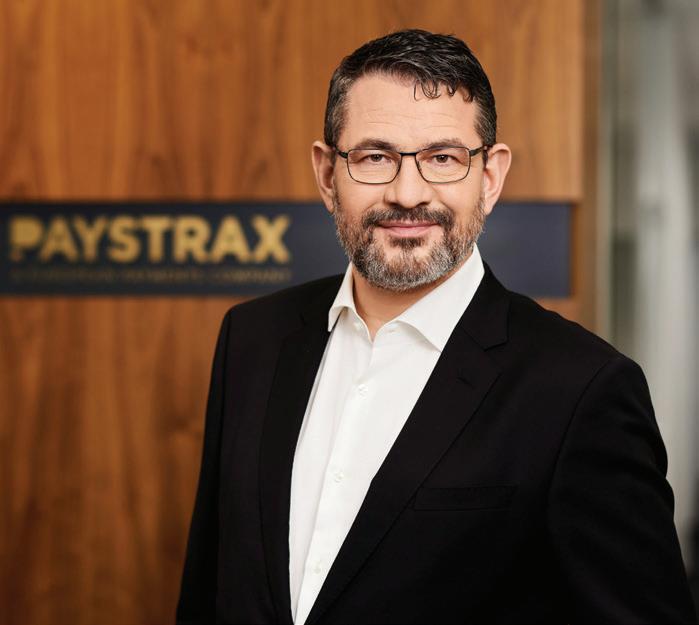
Widespread scepticism of governments monitoring financial payments, fueled by stories on China’s ‘digital yuan’, is also playing a part in the worries regarding the implementation of a CBDC. With inflation remaining high and recessionary concerns still lingering, trust in banks is low as it is right now, and the general public would be highly adverse to having their spending data viewed, even if it is only for internal use.
The plans have also raised concerns around accessibility and digital exclusion. While the ECB plans to roll out a detailed support system for the disabled and elderly through public entities such as post offices, there are real concerns that such a drastic revolution will leave behind those who still rely on cash.
Another fear is that the potential loss of deposits currently held in customer accounts could cause an easier run on the banks should a crisis occur. Over in the UK, there is real concern that 20% of all deposits could be pulled at any given moment if there is no cap on how much money digital wallets can hold, leading to the ECB proposing a €3,000 cap on digital wallets.
Plus, after having spent decades opposing such systems, current plans for the
digital Euro look likely to adopt an interchange system, similar to the one used for card schemes. Although this would be beneficial by not having to charge the consumer directly for using the digital Euro for payments, it is somewhat ironic that we’ve come full circle.
The future of European payments?
While a well-implemented digital euro could offer consumers a streamlined digital payment system, there are growing doubts about whether the technology will succeed in its aim of delivering a modern currency solution. With a decades-long head start, it’s difficult to see the system beating the level of innovation offered by the private sector. Additionally, the challenges of digital exclusion, banking responsibility, and public trust are constant topics of discussion in the CBDC’s potential introduction. Yet if nothing else, the plans around this multi-year project certainly show the level of ambition and innovation that the fintech market offers today. If plans for the digital euro do go ahead, it will put the ECB at the forefront of the G7 central banks - maybe even the world.
europeanbusinessmagazine.com 29
Mark Zuckerberg’s companies fined $2.8 billion for wrongful user data processing – GDPR report
Europe’s General Data Protection Regulation (GDPR) has earned a global reputation as one of the most stringent privacy and security laws, primarily due to imposing substantial fines on violators. Notably, Meta Platforms (NASDAQ: META), a major player in the technology industry, has emerged as a significant casualty, facing fines totaling billions of dollars.
According to data gathered by Finbold as of January 17, Mark Zuckerberg’s companies fined $2.8 billion for wrongful user data processing –GDPR reportThe largest fine, totaling $1.3 billion, was imposed on Meta Platforms Ireland Limited in May 2023 for insufficient legal basis for data processing. This record-setting fine constitutes nearly half, or 48%, of all penalties incurred by Meta for GDPR breaches.
Meta Platforms, Inc. incurred the second-highest fine, amounting to $441.45 million in September 2022, while the third-largest penalty of $425.1 million was imposed on Meta Platforms Ireland Limited in January 2023. The fourth-largest fine, totaling $288.85 million, was recorded in November 2022, also against the Ireland entity. WhatsApp Ireland also incurred a fine of $5.9 million in January 2023. Among the penalties, Facebook Germany GmbH was fined the least amount at $55,590 in December 2019.
Intrigues behind Meta’s record fines
It’s noteworthy that Meta’s fine of $1.3 billion came about as the social media giant faced accusations of inadequately protecting European Facebook user data when transferring it to the United States, leaving it vulnerable to intelligence agencies. The fine was levied based on the requirement for companies to store data in the country where it is collected rather than permitting unrestricted movement to global data centers.
At the same time, imposing fines does not necessarily mean that Meta will pay them, as the company currently has pending appeals. Successful appeals could lead to a reduction or complete elimination of the fines. Importantly, GDPR investigations, known for their time-intensive nature spanning several months, suggest a possibility of further penalties against Meta.
Meta’s influential role as a key player in technology may have contributed to the imposed fines. With its dominance and the pervasive role of technology in daily life, the company manages vast amounts of personal data from billions of customers. This places the Mark Zuckerberg-owned firm under rigorous scrutiny for its data handling practices, a situation affecting numerous technology companies.

Overall, most entities have found it challenging to comply with GDPR’s need to manage personal data, hire data protection officers, promptly report data breaches, and enable customer data downloads. Challenges in compliance also emerge in marketing, profiling, and obtaining consent.
Understanding Meta Ireland’s high fines
Upon examination of the fines, it’s clear that Meta Ireland has been notably impacted. Influencing factors include the country’s efforts to empower Ireland’s Data Protection Commissioner (DPC), making it easier
europeanbusinessmagazine.com 30

to impose penalties on tech companies, particularly those with their European headquarters in Ireland, such as Meta.
The implementation of fines by the DPC also underscores how various countries interpret GDPR guidelines differently. Some market players describe GDPR fines as rife with ambiguities and inconsistencies, creating the potential for diverse enforcement. These factors pave the way for possible legal battles, especially for firms such as Meta that have incurred the highest fines.
In this context, most entities are realizing the implication of violating the regulation, with a recent report noting
that in 2023, the total number of GDPR fines imposed by EU regulators stood at €2.05 billion ($2.78 billion) from 465 incidents. In 2022, there were 532 incidents, resulting in GDPR fines totaling €841.5 million ($916 million).
Policymakers intervention
Since most breaches are linked to data transfer, policymakers have intervened to establish a legal framework for sharing EU user data with America. This intervention introduced the new EU-U.S. Data Privacy Framework, offering individuals safeguards and redress mechanisms to protect
their personal data when transferred from the EU to participating U.S. companies and government agencies. These agencies may access personal data for law enforcement or national security purposes. This change in government regulations marks a departure from the conventional practice of freely moving data across borders.
In general, the fines emphasize an ongoing and thorough initiative to enforce laws, as regulators actively pursue means to hold businesses accountable. Meanwhile, organizations such as Meta are likely to maintain caution, given the evolving landscape of GDPR, with the possibility of new and more stringent rules emerging.
europeanbusinessmagazine.com 31
A Glimpse into the Future of Efficient Supply Chain
Warehouse robots automate different functions, such as transportation, picking and placing, packaging, and palletizing and de-palletizing. Using warehouse robots reduces the need for human intervention and increases the efficiency of warehouse operations. They find applications in various industries, such as e-commerce, automotive, electrical and electronics, food and beverage, and pharmaceutical.
The growth of this market is expected to be driven by the expanding e-commerce industry, increasing funding from venture capitalists, the rising need to enhance the quality and reliability of warehouse operations, and the growing adoption of warehouse robotics by SMEs.
The figure below depicts the global warehouse market between 2023 and 2028. According to MarketsandMarkets, warehouse robotics was valued at USD 5.54 billion in 2022 and is projected to reach USD 10.51 billion by 2028 at a CAGR of 11.4% during the forecast period. The market growth is
Source: MarketsandMarkets Analysis

expected to be fueled by the increasing number of startups offering robotic solutions for warehouse automation, the growing popularity of warehouse robotics among leading industries, and rising labor costs and safety concerns. Venture capitalists are also actively funding robotic startups. For instance, in December 2023, GreyOrange (US) secured USD 135 million Series D funding to bolster its warehouse robotics technology, marking a significant investment in advancing automated supply chain solutions. In July 2021, Locus Robotics (US), a Massachusetts-based warehouse robotics startup, raised USD 150 million in Series E funding to accelerate product innovation and expansion in the robotics market. In March 2021, HAI Robotics, a manufacturer of autonomous case-handling robots, secured a Series B+ funding round of nearly USD 15 million led by 5Y Capital, Source Code Capital, and Walden International.
In today’s logistics and supply chain management world, warehouse
robotics is essential for streamlining various tasks, such as order picking, packing, and inventory management. This leads to a reduction in processing times and increased productivity. Warehouse operators use various types of robots, such as autonomous mobile robots, automated guided vehicles, articulated robots, cylindrical robots, SCARA robots, parallel robots, and cartesian robots. The market is rapidly growing, driven by e-commerce and technological advancements. The logistics industry is revolutionized by warehouse robotics by optimizing operations, increasing efficiency, and addressing the challenges the modern retail landscape poses.
Businesses have intensified their focus on advanced automation and digital modernization in response to the evolving landscape prompted by the COVID-19 pandemic. Concurrently, recent geopolitical developments and economic instabilities have prompted certain enterprises to reassess their approach to investing in automation. Consequently, several companies are seeking service providers capable of offering comprehensive automation support that can swiftly adapt to scaling requirements. The warehouse robotics ecosystem has shifted from a manual handling system to fully automated warehouses, improving user productivity, accuracy, operational efficiency, and operability. These warehouses are designed with automated storage and retrieval systems (ASRS) for pallets or boxes, conveyors, pallet stacker cranes, and pallet shuttle run installations. Moreover, integrating Al, IoT, blockchain, and machine learning has created new channels and revenue streams for warehouse robotics providers.
europeanbusinessmagazine.com 32
WAREHOUSE ROBOTICS:
The global warehouse robotics market is expected to be worth USD 10.51 billion by 2028, registering a CAGR of 11.4% during the forecast period. The autonomous mobile robots segment is estimated to hold the largest share of the warehouse robotics market in 2023. The warehouse robotics market in the Asia Pacific is expected to depict the highest CAGR during the forecast period owing to the high preference for efficiency and automation in warehouses. Increasing investments in warehouse automation systems, such as autonomous mobile robots, will provide lucrative opportunities for players in the market. USD BILLION 6.12 CAGR 11.4% of 2023 10.51 USD BILLION 2028 The growing need for state-of-the-art technologies in cold storage warehouses, automated and hygienic handling of food items and the rising demand for packaged food items are expected to drive the market for food & beverage industry. ASIA PACIFIC
FIGURE 1 Rising investments in warehouse robotics to create lucrative opportunities in warehouse robotics
Over the past few years, the warehouse robotics ecosystem has witnessed significant adoption of delivery drones, wireless communication technology, cloud warehouse management, intelligent warehouse robots, and e-commerce automation. The rising need for industrial IoT sensors and other data-capturing technologies allows warehouse owners to gather more information on warehouse operations and workflows. Big data analytics software or Al-powered analytics tools help warehouse managers process collected data and enable predictive analytics to build more accurate forecasts about future events.
The potential revenue sources are expected to impact the warehouse robotics market notably. Here is a concise explanation of how changes in revenue sources can affect the warehouse robotics ecosystem for various sectors.
Market estimation of warehouse robotics
To gain insights into the warehouse robotics market, we have divided it into four primary segments: type, payload capacity, function, and industry. In terms of type, the segmentation includes the following categories: Autonomous Mobile Robots (AMRs), Automated Guided Vehicles (AGVs), Articulated Robots, Cylindrical and SCARA Robots, and other types (parallel and cartesian robots). By function, the warehouse robotics market has been segmented into transportation,
Source: MarketsandMarkets Analysis
picking and placing, palletizing & de-palletizing and sorting & packaging. Based on payload capacity, the market has been segmented into less than 20kg, 20-100kg, 100-200kg, and greater than 200kg. Meanwhile, the industry segment is further categorized into e-commerce, automotive, semiconductor & electronics, food & beverage, heavy metals & machinery, chemical, and healthcare.
The warehouse robotics market for transportation is expected to register the highest CAGR and market share during the forecast period. Companies offering AMRs are transforming e-commerce distribution or fulfillment centers’ operations. These robots are replacing traditional fulfillment tools to increase the efficiency and productivity of the picking function, creating a significant demand for warehouse robots in warehouse
operations and e-commerce fulfillment centers. They can perform several warehouse and order fulfillment functions, including executing pick strategies, transporting goods and materials, and guiding/helping associates as they perform their tasks. Instead of working with only large and heavy loads, AMRs can pick and drop individual cases, totes, and items. Equipped with advanced sensors and software, AMRs can safely and efficiently transport goods, fulfill orders, and manage inventory. Their flexibility and scalability make them an appealing choice for warehouses seeking to optimize operational efficiency and adapt to evolving market demands. AMRs make processes and workflows more efficient and productive and do not require route planning as they move efficiently and safely through a given space independently.
The economic growth in Asia Pacific has increased the use of warehouse robotics in the manufacturing and retail industries. The strong presence of production facilities and the rising domestic demand for products also drive the warehouse robotics market in the region.
Source: MarketsandMarkets Analysis
Asia Pacific is expected to be the fastest-growing regional market for warehouse robotics during the forecast period. The increasing trend of online retail shopping, the rising number of startups in China developing mobile robots, the high attrition rate of warehouse laborers, and active funding by venture capitalists
europeanbusinessmagazine.com 33
FIGURE 2 Revenue shift in warehouse robotics market
PAST REVENUE MIX FUTURE REVENUE MIX Hot bets will lead to shrinkage of revenue from traditional sources and yield new sources for future revenue mix HOT BETS IMPACTING FUTURE REVENUE MIX Warehouse Robotics Increased Productivity & Efficiency Cost Reduction & RoI Quality Improvement & Consistency Safety & Risk Mitigation Flexibility & Adaptability Shortage of Skilled Labor New Sources Traditional Sources AI Robots Service Robotics Additive Manufacturing (3D Printing) Industrial Internet of Things Vision & Sensing Technologies Modular Robotics Technological Advancements Competitive Advantages Industry Specific Requirements Customization & Personalization Textiles Pharmaceuticals & Cosmetics Aerospace & Defense CLIENTS/PROSPECTS Automobiles Electrical & Electronics Metals & Machinery Food & Beverages Precision Engineering & Optics Plastics, Rubber & Chemicals Collaborative Robots Traditional Sources New Sources WE IDENTIFY NEW REVENUE SOURCES FOR YOU, YOUR CLIENT, YOUR CLIENT’S CLIENT 7,253.8 1,682.0 793.7 783.2 0 2,000 4,000 6,000 8,000 10,000 12,000 Transportation Picking & Placing Palletizing & De-palletizing Sorting & Packaging Market Size (USD Million) 2023 2028
FIGURE 3 Transportation segment to account for the largest market size during the forecast period
to develop mobile robots are key factors driving the market. Besides, the rising investments in the deployment of robotics in various industries support market growth in the region.
Europe accounted for the second largest share (~26%) of the warehouse robotics market in 2022 in terms of value. The region’s concentration on technology innovation and adoption, which is reflected in its excellent research and development skills across industries, is one important element. European nations have accelerated the adoption of warehouse robots by quickly integrating advanced automation technologies, such as robotics, into their manufacturing and logistics sectors. A further factor driving firms to engage in sophisticated robotic solutions to improve their logistics and supply chain processes is the booming e-commerce market in Europe, which has greatly increased demand for effective and streamlined warehouse operations.
Additionally, to improve operational efficiency and lessen the effects of labor-related issues, businesses are encouraged to use robotics and automation due to the strict labor laws and generally higher labor costs in various European countries. Furthermore, the
adoption of warehouse robotics in the region has been accelerated by the significant emphasis on sustainability and environmental consciousness in European corporate practices, resulting in the use of robotics to enhance energy efficiency and reduce carbon footprints. These elements taken together have made Europe the second-largest market for warehouse robotics, demonstrating the continent’s proactive drive to integrating cutting-edge technologies to optimize business and industrial operations.
Emerging industries in the warehouse robotics market
e-Commerce - A growing number of consumers switched to online purchasing, and the e-commerce market has expanded steadily. The ubiquitous availability of high-speed internet, a robust digital infrastructure, and a tech-savvy populace were the main drivers of this movement. As more people turned to internet marketplaces to meet their buying demands during lockdowns and social seclusion measures, the COVID-19 epidemic hastened the trend towards e-commerce. A wide variety of goods and services were being offered by major e-commerce businesses and retail
behemoths to meet the changing consumer expectations.
Automotive: The automotive industry has witnessed a surge in warehouse robotics adoption, driven by a focus on efficiency, cost savings, and integrating advanced technologies. The use of robotics enhances productivity, safety, and flexibility in handling automotive components within warehouse settings. For instance, the automotive industry is one of the most important sectors of the German economy. It accounts for over 10% of the country’s GDP and employs over 800,000 people. Germany is home to some of the world’s leading automotive manufacturers, including Volkswagen, Mercedes-Benz, and BMW. Germany’s automobile sector has expanded tremendously in recent years. German automakers manufactured more than 3 million automobiles in 2021, an increase from 2.8 million in 2020. Over 65% of German auto production is exported, which is another important aspect of the business.
Semiconductor & Electronics: The electronics and semiconductor industry in Germany is highly innovative and export-oriented. Companies are at the forefront of developing new technologies, such as artificial intelligence,
europeanbusinessmagazine.com 34
4,112.9 3,322.3 1,664.7 570.1 514.1 328.6 0 1,000 2,000 3,000 4,000 5,000 6,000 7,000 Auttonomous Mobile Robots Automated Guided Vehicles Articulated Robots Others Cylindrical & SCARA COBOTS Market Size (USD Million) 2023 2028
FIGURE 4 Autonomous mobile robots to account for the largest market size
Note: Other types include parallel and cartesian robots. Source: MarketsandMarkets Analysis
Source: Secondary Research, Interviews with Experts, and MarketsandMarkets Analysis
self-driving cars, and 5G networks. In 2022, Intel announced it would build a new USD 33 billion semiconductor manufacturing plant in Magdeburg, Germany. This is the largest private investment in German history.
Future outlook
The robotic vendors are witnessing new revenue prospects from the opportunities in adjacent markets, such as industrial robotics, cleaning robots, service robotics, and many
more. The following table includes market sizes and compound annual growth rates of such adjacent markets. Warehouse operators use various types of robots, such as autonomous mobile robots, automated guided vehicles, articulated robots, cylindrical robots, SCARA robots, parallel robots, and cartesian robots. The market is rapidly growing, driven by e-commerce and technological advancements. The logistics industry is revolutionized by warehouse robotics by optimizing operations,
increasing efficiency, and addressing the challenges the modern retail landscape poses.
The growing need for greater productivity, accuracy, and efficiency in the manufacturing and service industries has propelled this trend. The integration of robotics and automation has also been sped up by developments in artificial intelligence, machine learning, and the Internet of Things (IoT), which are redefining conventional workflows and transforming how activities are carried out.
europeanbusinessmagazine.com 35
4,622.3 2,495.3 2,452.0 943.1 0 2,000 4,000 6,000 8,000 Asia Pacific Europe North America Rest of the World Market Size (USD Million) 2023 2028 ADJACENT MARKET MARKET SIZE, 2022 (USD BILLION) CAGR Industrial Robotics Market 15.7 13.8% (2023-2028) Collaborative Robots market 1.0 34.3% (2023-2028) Delivery Robots Market 0.4 33.7% (2023-2028) Cleaning Robots Market 9.7 21.5% (2022-2027) Households Robots Market 9.2 16.0% (2022-2027) Robotics as a Service (RaaS) Market 1.6 17.4% (2023-2028)
FIGURE 5 Asia pacific to hold the largest market size in warehouse robotics market during the forecast period
TABLE 1 market size and growth rates of adjacent markets
Source: MarketsandMarkets Analysis
New Report Measures Quality of Growth for New Economic Era

Anew World Economic Forum report, released today, offers a re-evaluation of global economic growth, introducing a new framework that takes a holistic look at GDP alongside the quality of growth across 107 economies.
challenges, including the climate crisis and a weakening social contract, which are collectively reversing progress in global development.
“Reigniting global growth will be essential to addressing key challenges, yet growth alone is not enough,” said
europeanbusinessmagazine.com 36
The Future of Growth Report 2024 highlights a significant economic slowdown, estimated to fall to the lowest rate in three decades by 2030, amid ongoing economic and geopolitical shocks. This downturn is exacerbating a range of interconnected global
Saadia Zahidi, Managing Director, World Economic Forum. “The report proposes a new way for assessing economic growth that balances efficiency with long-term sustainability, resilience and equity, as well as innovation for the future, aligning with both global and national priorities.”
Launching alongside this report is the Forum’s Future of Growth initiative, a two-year endeavour aimed at charting a new narrative for economic growth and supporting policy-makers from around the world, together with economists and other experts, in identifying the best pathways in balance growth, innovation, inclusion, sustainability and resilience goals.
Global analysis
The report reveals that most countries continue to grow in ways that are neither sustainable nor inclusive and are limited in their ability to absorb or generate innovation and minimize
their contribution and susceptibility to global shocks.
The inclusiveness pillar, which measures the extent to which an economy’s trajectory includes all stakeholders in the benefits and opportunities it creates, and the resilience dimension, which captures the extent to which an economy’s trajectory can withstand and bounce back from shocks, have the highest global average scores, 55.9 out of 100 and 52.8 out of 100, respectively.
Meanwhile, the global average of the sustainability dimension, which measures the extent to which an economy’s trajectory can keep its ecological footprint within finite environmental boundaries, is 46.8 out of 100. The innovativeness dimension – which captures the extent to which an economy’s trajectory can absorb and evolve in response to new technological, social, institutional and organizational developments to improve the longer-term quality of growth

– attains the lowest global score, with a global average of 45.2 out of 100.
Country-level analysis
At an individual level, none of the 107 economies covered by the report have attained a score higher than 80 on any of the framework’s four dimensions. The report provides country-level data that allows policy-makers to assess the character and nature of a country’s economic growth and identify potential areas for improvement and synergies.
High income economies , with an average GDP of $52,475 per capita (at purchasing power parity) in 2023, saw average annual GDP per capita growth of 1.01% over the past five years, 2018-2023. Their growth pathway is generally characterized by high scores on inclusiveness (68.9), innovativeness (59.4) and resilience (61.9), but room to improve on sustainability (45.8).
Countries in this group include Australia, Canada, France, Germany, Italy, Japan, Saudi Arabia, South Korea, the United Kingdom and the United States. Notable high scores include Switzerland (80.4), Singapore (76.4) and the United States (74.1) on innovativeness; Finland (77.7) and Canada (75.8) on inclusiveness; Sweden (60.9), Germany (56.3) and the United Kingdom (54.0) on sustainability; and Australia (69.5) and Japan (66.3) on resilience.
Common challenges preventing a stronger balanced growth performance of this group include talent availability, access to equal workplace opportunities, slow development and adoption of green technologies, and insufficient reskilling and lifelong learning.
Upper middle-income economies , with an average GDP of $17,900 per capita in 2023, saw average annual GDP per capita growth of 1.32% over the past five years. Their growth pathway generally features a relatively high emphasis on inclusiveness (54.8) and resilience (50.0), with room to improve on sustainability (44.0) and innovativeness (39.3).
europeanbusinessmagazine.com 37

Countries in this group include Argentina, Brazil, Indonesia, Mexico, South Africa and Türkiye. Notable high scores include Malaysia (52.3) and South Africa (44.1) on innovativeness; Brazil (56.0) and Costa Rica (48.8) on sustainability; and Indonesia (57.9) on resilience.
Common challenges preventing a stronger balanced growth performance of this group include research capacity, wealth and income inequality, high non-renewable energy intensity and waste production, and financial stability.
Lower middle-income economies , with an average GDP of $7,633 per capita in 2023, saw average annual GDP per capita growth of 1.95% over the past five years. Their growth pathway has generally been focused on resilience (45.8), with higher scores on sustainability (50.0) than richer economies but room to improve on
inclusiveness (44.8) and innovativeness (34.9).
Countries in this group include Bangladesh, Egypt, India, Nigeria, Pakistan, the Philippines and Viet Nam. Notable high scores include Jordan (45.1) on innovativeness; Viet Nam (56.2) on inclusiveness; Kenya (57.2) and India (56.0) on sustainability; and the Philippines (54.1) on resilience.
Common challenges preventing a stronger balanced growth performance of this group include technology absorption, lack of social safety nets, insufficient investment in renewable energy and insufficient healthcare system capacity.
Low-income economies , with an average GDP of $1,533 per capita in 2023, saw average annual GDP per capita growth of just 0.22% over the past five years. Their growth pathway is generally characterized by a much lighter environmental footprint per
capita – resulting in a high sustainability performance (52.7) – but with room to improve on resilience (39.0), inclusiveness (29.9) and innovativeness (26.8).
Notably high scores are achieved by Rwanda, with a particularly strong emphasis on resilience (52.8). Common challenges preventing a stronger balanced growth performance of this group include ICT capital and connectivity, access to connectivity and healthy nutrition, insufficient environmental regulation and insufficient energy source diversification.
About the Future of Growth initiative
The Future of Growth initiative will lead a two-year campaign aimed at inspiring discussion and action on charting new pathways for economic growth and supporting policy-makers in balancing growth, innovation, inclusion, sustainability and resilience goals.
europeanbusinessmagazine.com 38

Industrial control and factory automation is creating
huge opportunity in the market
Industrial control and factory automation have revolutionized modern manufacturing processes, bringing about a significant transformation in the way factories operate. These two components enhance efficiency, productivity, and safety within industrial settings. Industrial control entails the utilization of advanced technologies like programmable logic controllers (PLCs), sensors, and human-machine interfaces (HMIs) to monitor and regulate machinery and processes.
On the other hand, factory automation involves integrating automated systems and equipment to carry out tasks traditionally performed by
human operators. By reducing manual labor and optimizing production quality, industrial control, and factory automation aim to streamline operations, minimize errors, and expedite time-to-market for products.
Real-time data collection and analysis enabled by automation technologies provide valuable insights for decision-making and process optimization, resulting in improved product quality and consistency. Furthermore, industrial control systems incorporate advanced safety measures and protocols such as emergency stop functions, interlocks, and protective barriers to ensure the well-being of workers.
Typically, but not limited to, we consider components such as Collaborative Robots, Machine Vision, Human Machine Interfaces, Industrial sensors, Industrial 3D Printing, and Vibration Monitoring in industrial control and factory automation. Below is the brief details of these components:
Collaborative Robots : Collaborative robots, or cobots, are designed to work alongside humans in a shared workspace. They are equipped with sensors and advanced safety features to ensure safe interaction with human workers. Cobots are flexible, easy to program, and can be deployed in various industries, enhancing productivity,
europeanbusinessmagazine.com 39
efficiency, and worker safety. They enable humans and robots to collaborate on tasks, combining both strengths for improved outcomes. The key driver impacting the market may include a high return on investment compared to traditional robots, increased demand in e-commerce, and others. The challenges may consist of payload and speed limitations of collaborative robots and the rise in cybercrime with connected robots. Recently, Techman Robot, a leading provider of collaborative robots, has unveiled a new model with the longest reach in its lineup. The TM12-1800 can reach up to 1800mm, expanding its potential applications in logistics, warehousing, and machine tending industries. With its extended reach and advanced features, Techman aims to cater to the growing demand for flexible and versatile cobots in various industrial sectors. The collaborative robots market is expected to reach ~USD 9 Billion by 2028, growing at a CAGR of ~42% between 2022-2028.
Machine Vision : Industrial Machine Vision refers to using advanced imaging systems and artificial intelligence algorithms to inspect and analyze products and processes in industrial settings. It enables automation and quality control by capturing and interpreting visual information with high precision and speed. Machine Vision systems are utilized across various industries, such as manufacturing, automotive, electronics, and pharmaceuticals, to ensure consistent product quality, detect defects, guide robotic systems, and improve overall operational efficiency. The driving
factor impacting the growth of the said market may include the increasing need for quality control and automated inspection and the growing need for vision-guided robotics systems. The typical challenges for this market may consist of the complexity associated with the integration and vulnerability of systems to cyber attacks. Last year in 2022, Zebra Technologies acquired Matrox Imaging, expanding its range of machine vision solutions. This acquisition will enable Zebra Technologies to offer a comprehensive portfolio of advanced imaging technologies and solutions, enhancing its capabilities in industrial automation, inspection, and quality control applications. Integrating Matrox Imaging’s expertise will further strengthen Zebra’s position in the machine vision market. The machine vision market is expected to reach ~USD 17 Billion by 2027, growing at a CAGR of ~7% between 2022-2027.
Human Machine Interface: A Human Machine Interface (HMI) refers to the point of interaction between a human operator and a machine or system. It allows users to monitor and control the operation of machinery, equipment, or software through a graphical interface. HMIs provide an intuitive and user-friendly platform, often featuring touchscreens, buttons, and indicators, enabling seamless communication and efficient interaction between humans and machines. They play a vital role in various industries, including manufacturing, automation, transportation, and healthcare, enhancing productivity, safety, and user experience. The driving factor
impacting the said market may include increasing emphasis on real-time data analysis & predictive maintenance and the growing adoption of digital manufacturing. The challenging factor may include the requirements of frequent software upgrades, lack of standardization of communication protocols, and increasing risk associated with cloud HMI. Renesas recently introduced a new RISC-V microcontroller unit (MCU) designed explicitly for voice-controlled human-machine interface (HMI) applications. The MCU integrates a low-power RISC-V CPU core with voice processing hardware, enabling efficient voice recognition and control capabilities. This development aims to facilitate voice control integration into various HMI designs, providing enhanced user experiences and expanding the possibilities for voice-enabled IoT devices. The human machine interface market is expected to reach ~USD 7 Billion by 2027, growing at a CAGR of ~8% between 2022-2027.
Industrial Sensor : Industrial sensors are critical components used in various manufacturing and industrial processes. They gather data from the environment, such as temperature, pressure, humidity, and motion, and convert it into electrical signals. These sensors enable automation, monitoring, and control of equipment and systems, ensuring optimal performance, efficiency, and safety in industries ranging from automotive and aerospace to food and pharmaceuticals. The advancements in sensor technology, including miniaturization, improved accuracy, and wireless connectivity, have further expanded their applications in industrial settings. The factor driving the said market may include the increasing adoption of digital manufacturing, advancement in sensor technology, and the growing need for sensor-based manufacturing processes. The factor creating a challenge in the market may include the high sensor cost and its installation cost. Recently, STMicroelectronics unveiled a waterproof MEMS pressure sensor designed for industrial IoT applications. The sensor offers accurate and reliable pressure measurements even in harsh environments. Its compact size, high
europeanbusinessmagazine.com 40
2022 2023 2028 North America Europe Asia-Pacific Rest of the World The global industrial control and factory automation market is expected to be worth ~USD 235 billion by 2028 growing at a CAGR of 8% during the forecast period 148 160 235 CAGR OF 8.0% INDUSTRIAL CONTROL AND FACTORY AUTOMATION MARKET GLOBAL FORECAST TO 2028 (USD BN) 8%
performance, and resistance to water and dust make it suitable for various industrial applications, including smart agriculture, asset tracking, and industrial automation. The industrial sensor market is expected to reach ~USD 35 Billion by 2027, growing at a CAGR of ~9% between 2022-2027.
Industrial 3D Printing: Industrial 3D printing, also known as additive manufacturing, revolutionizes traditional manufacturing processes by building objects layer by layer using digital design files. It offers numerous advantages, including rapid prototyping, customization, and cost efficiency. Industrial sectors such as aerospace, automotive, and healthcare utilize 3D printing to create complex parts, reduce lead times, and optimize supply chains, ultimately driving innovation and enabling greater design freedom. The factor driving the market may include the opportunity for high-volume production using 3D printing and the development of advanced 3D printing materials. The factor challenging the market may include high capital requirements and threats to copyright violation.
Last year in 2022, Wipro 3D, a leading additive manufacturing company, introduced an industrial-grade 3D printer manufactured in India. The printer aims to cater to the growing demand for additive manufacturing solutions in the aerospace, defense, automotive, and healthcare sectors. With this launch, Wipro 3D aims to provide local manufacturing capabilities and contribute to the country’s self-reliance in advanced manufacturing technologies. The industrial 3D printing market is expected to reach ~USD 6 Billion by 2027, growing at a CAGR of ~20% between 2022-2027.
Vibration Monitoring : Vibration monitoring measures and analyzes vibrations in machinery and structures to detect anomalies, evaluate performance, and ensure equipment integrity. It plays a crucial role in predictive maintenance programs by identifying potential faults and preventing costly breakdowns. Vibration monitoring systems utilize sensors and data analysis techniques to assess vibration levels, frequencies, and patterns, providing valuable insights into the condition of rotating machinery,
such as motors, pumps, and turbines. The factor driving the market may include the adoption of wireless communication, the rise of predictive maintenance, and the increasing adoption of machine learning. The factor which challenges the market may include reliability issue in prediction and additional cost incurred for retrofitting with modern vibration monitoring technology. Last year in 2022, SICK introduced a new sensor called MPB10, designed explicitly for condition monitoring. The MPB10 is a compact device that combines vibration, shock, and temperature measurement capabilities. It provides service data to support predictive maintenance strategies, improving plant efficiency, extending machinery lifespan, and ensuring product and process integrity. The vibration monitoring market is expected to reach ~USD 2 Billion by 2027, growing at a CAGR of ~7% between 2022-2027.
Apart from the technology mentioned above, other technology also helps automate the manufacturing shop floor, including SCADA, DCS, PLC, Industrial PC, and Plant Asset management.
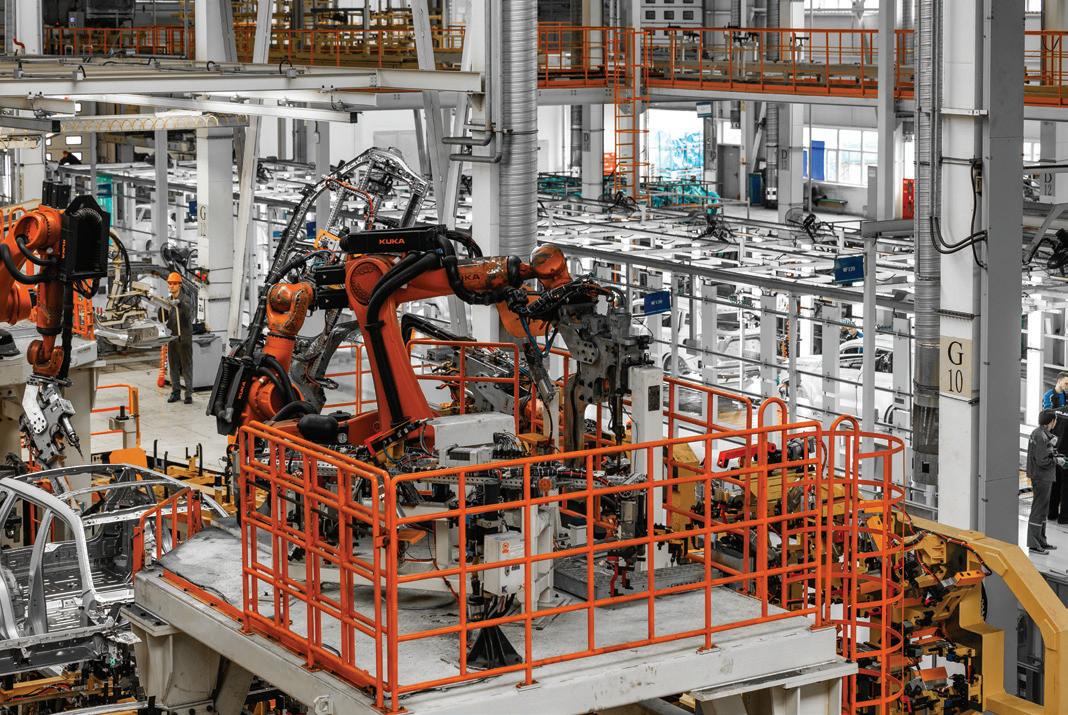
europeanbusinessmagazine.com 41
In an era where cyber threats loom large Seemant Sehgal
the visionary CEO of BreachLock, has emerged as a stalwart in the realm of cybersecurity. With his company at the forefront of innovative solutions, Sehgal’s insights and expertise are invaluable in navigating the complex landscape of digital safeguards. In this exclusive Q&A, we delve into the mind of a cybersecurity pioneer, exploring the latest trends, challenges, and strategies for fortifying businesses against the everevolving onslaught of cyber attacks. Brace yourself for a candid and illuminating discourse that could shape the future of online security.

Seemant, you started your career working for technology giants like IBM, CISCO and eventually overseeing cybersecurity for CapitalOne ING bank, the largest European universal bank comprised of 60,000 employees serving over 37 million customers in 40 countries. Based on this experience, what thoughts or considerations led you to start BreachLock?
Having garnered experience at some of the world’s foremost enterprises, renowned for establishing cybersecurity benchmarks, I observed a significant disparity in resource allocation
between detection/defense technologies and offensive security. Upon scrutinizing the return on investment (ROI) derived from defensive versus offensive investments, it became evident that offensive security consistently yielded superior outcomes. Through each Penetration Test, the organization not only identified vulnerabilities but also proactively addressed and closed potential entry points for hackers. This realization prompted me to initiate research into the reasons behind the relatively lower investment in penetration testing by companies.
Subsequently, discussions with multiple Chief Information Security Officers (CISOs) ensued and through these conversations it was evident that there was an unmet need and gap in the market as pentesting methodologies were falling short of what modern business needed.
I recognized that there were four fundamental pitfalls of traditional pentesting: accuracy, agility, scalability, and cost-effectiveness. This was because security tools were all about point-in-time. Meaning testing for vulnerabilities within systems was a one-shot deal, conducted periodically
europeanbusinessmagazine.com 42
or when an audit was looming, and compliance regulations needed to be met. The thought of continuous security was unconceived at the time. It was then I decided to dedicate my future to rectifying these pain points and in 2019 BreachLock was born. My goal from the onset was to create the world’s first, full-stack Penetration Testing as a Service (PTaaS) solution before it was popular or as widely understood as it is today. PTaaS was developed to solve the need for Offensive Security and a more continuous approach to protect an attack surface that continues to grow and change every day.
Since then, BreachLock has experienced unprecedented growth and the expansion of our product portfolio and managed services to meet the needs of our customers and demand in the market. In the past five years we have grown from less than 100 clients when we introduced PTaaS in 2019 to serving over 1000 clients in 30 countries. Our product portfolio has expanded and consists of Application and Network Pentesting, API and Cloud Pentesting, AI-powered Pentesting precision, Attack Surface Management, and Red Teaming.
Many start-ups fail before they have even had a chance at success. But BreachLock has been successful with a large presence in both the United States and Europe. Why do you think you have succeeded when very few startups have not?
I think there are two key areas that are taken for granted by start-ups that ultimately make the difference to customers. That is the talent you hire and the customer service you provide. Over the past several years, we have seen cybersecurity start-up after start-up go through rounds of multiple layoffs because they over hired and overpaid individuals just to please their investors and to demonstrate growth, giving both employees and investors a false sense of stability. And when investors demanded yearly revenue growth and a return on their investment, the pressure to achieve goals that were initially unattainable led to layoffs.
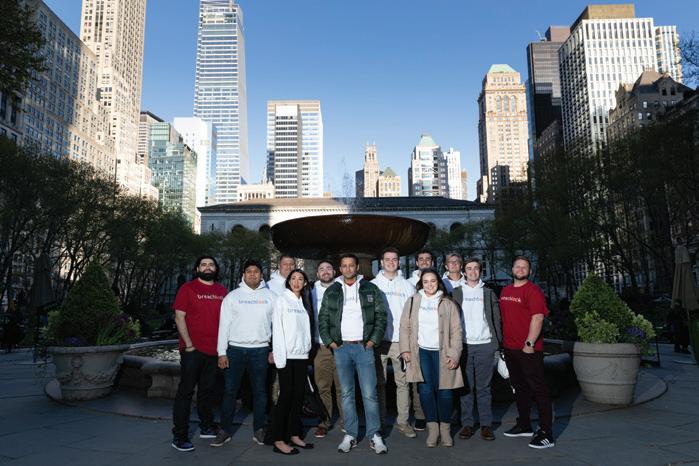

I was not interested in taking millions of dollars from investors and losing the freedom to run my company the way I believed it should be run. And that initially meant boot strapping BreachLock during its first year. The following year Covid hit, and I did not even meet my team for the first 1-1/2 years. But during that time, we crossed the first $1 million in revenue, the team grew, and the rest is history. The respective teams we have hired are some of the most talented in the business and come from across the world in the Netherlands, U.K., India, and United States. To date our turnover has been less than 5 percent, which is unheard of today. And BreachLock is not burdened with heavy
investment or the pressing need of inorganic growth process.
Secondly is the investment we have made in our technical experts, sales, and customer service personnel. At BreachLock, we find it important to spend a lot of time upfront with our customers to establish and define measurable metrics that are meaningful to track an organization’s security performance. Today, our customers need to be able to communicate a real ROI to their executive team and board. So, our dedicated project managers take the time upfront to understand both an organization’s security and business requirements and then recommend the right tools and processes that will get them there. And our customer service team is one of the best I have ever encountered, always willing to go the extra mile to ensure clients are properly onboarded, baseline and benchmarks are set, and regular business reviewed are implemented, all to ensure a great buying experience.
Lastly, in 2023 there was a noticeable surge in enterprises wanting to reassess their security strategies with a shift towards a more proactive and integrated approach becoming prominent.
Enterprises began to ask why they were paying for many of the same features and functionalities that seemed to overlap. So, in 2024 we launched Attack Surface Discovery and Penetration Testing making all
europeanbusinessmagazine.com 43
our tools and services available in one integrated and seamless platform. We can now offer enterprises of all sizes the versatility and flexibility of human-delivered, automated, and continuous security solutions for both the internal and external attack surface. Our solutions integrate into one platform and each risk we uncover is validated by evidence, grounded in proof. We test the entire attack surface and help enterprises mitigate the next cyber breach before it occurs.
What recent trends or developments in the field of cybersecurity do you find particularly noteworthy or concerning?
The first noteworthy development is Generative AI (GenAI), driven by evolving models like ChatGPT, Copilot, and Gemini. While promising efficiency gains, realizing business value from AI necessitates widespread adoption – and we are not there yet. To navigate skepticism and uncertainty in the market saturated with AI products, collaboration among stakeholders is crucial. Proactive efforts are needed to ensure ethical, safe, and secure use of GenAI to manage expectations and promote experimentation. With the market flooded with AI-based products leading to skepticism among CISOs and CIOs, it is incumbent upon security providers to provide transparency about their AI capabilities, acknowledging that well-trained ML models depend on substantial data for effective security solutions.
Automation has become an important development to reduce human error in security testing. By automating repetitive tasks, organizations adhere to predefined rules and frameworks consistently, reducing the risk of oversights. This not only enhances accuracy but also enables security teams to respond quickly to threats and incidents, doing more in less time. Automated tools are proven to improve accuracy, executing tasks precisely and avoiding inconsistencies from manual intervention. Security automation platforms unify and streamline security processes across the entire security ecosystem and by

integrating with various tools and systems, they can enable better defense strategies.
Despite the importance of automation, some security providers exaggerate their capabilities, claiming elite AI proficiencies or advanced ML when, in reality, they may rely on basic statistical methods that have been around for centuries.
Globally, supply chain compromises of software dependencies remain a significant threat. It is anticipated that by 2030, we will see growing integration of components and services into new products. The market’s demand for rapid product release cycles is driving the increased adoption of component-based programming, emphasizing code reuse and reliance on open-source libraries. Although regular vulnerability scans are conducted on some components, the consolidation of software, hardware, and component-based code introduces the risk of unforeseen or zero-day vulnerabilities. This scenario presents increased opportunities for malicious actors to compromise the supply chain, impacting both suppliers and customers.
Lastly, ransomware attacks are not going away with global damages exceeding USD $6 trillion. On average, organizations face a cost of USD $170,000 per ransom, and resolving an attack can exceed USD $2 million. In Q2 2023, 34 percent of global ransomware attacks led to ransom payments. New incident reporting and compliance regulations necessitate
prompt reporting and improved incident response capabilities, achievable with tools like automated pentesting and red teaming. Deciding whether to pay the ransom carries consequences, as most attackers don’t return 100% of stolen data Therefore, it’s crucial for organizations to invest in effective security tools and processes to minimize threats, ultimately proving more cost-effective than dealing with a costly ransomware attack.
Could you share some insights into the unique challenges European businesses face in terms of cybersecurity compared to other regions?
European businesses encounter distinct challenges that set them apart from other regions but many of the challenges are universal. For example, budget constraints and the costs of implementing strong cybersecurity measures can be expensive and balancing cost-effectiveness with security is essential. The availability of skilled cybersecurity professionals remains a similar challenge in Europe. Businesses struggle to find and retain experts who have specific cyber skills such as penetration testing and red teaming.
However, the World Economic Forum reported a few years ago that small and medium enterprises (SME) constitute 99% of business in the EU and face diverse cybersecurity challenges including low management awareness
europeanbusinessmagazine.com 44
and commitment. This is compounded by the lack of SME-specific guidelines and practical, sector-specific cybersecurity guiding principles that are sorely needed.
Furthermore, European businesses with ICS and OT environments, vital for infrastructure and human safety, are facing a growing threat from malicious actors. These sectors, including public election systems and public health, are particularly susceptible. European governments heavily depend on technology companies in the private sector to uphold security, granting them substantial influence in Europe’s geopolitical landscape.
Striking a balance in these technological partnerships poses a delicate challenge, as it holds the potential to impact Europe’s geopolitical standing. Nevertheless, the exploitation of legacy systems and IoT permeates large parts of transport, power and water grids, and industrial infrastructure.
Moreover, non-state entities such as criminal organizations, hackers-forhire, and governmental actors possess technological capabilities, such as prevalent deepfakes, enabling the dissemination of disinformation within the EU to manipulate communities. While the utilization of deepfake technology can result in financial gains for cybercriminals, the primary incentive behind disinformation campaigns involving fabricated identities is geopolitical, likely to be predominantly orchestrated by state actors and other politically motivated entities. These activities encompass deepfake attacks
utilizing a diverse range of publicly accessible videos, images, and voice recordings. Notably, biometric facial images are particularly susceptible, allowing for accurate impersonation of the intended target.
In the end, agencies like ENISA’s European Union Agency for Cybersecurity, and others, seek to improve EU’s cybersecurity resilience by increasing awareness of future threats and countermeasures amongst its member states and stakeholders.
How does BreachLock differentiate itself from other cybersecurity firms, and what do you believe are your company’s key strengths?
BreachLock’s strength is in its continued innovation of emerging technologies to address diverse customer needs and the evolving threat landscape. Our strength lies in attentive customer engagement, recognizing unique requirements for each client. Our people, expertise, responsiveness, and exceptional support complement our technological innovation. Today, service providers have forgotten how to be agile and nimble to meet customer demands. BreachLock prioritizes agility to meet customer demands swiftly adding resources when and where needed. Dedicated project managers and experts guide clients through the testing process, ensuring satisfaction and tailored security solutions. BreachLock excels in innovation and has a comprehensive product portfolio,

offering versatile cybersecurity solutions for continuous offensive security testing. Our options include human-delivered, automated, and continuous solutions for Attack Surface Management, Pen Testing as a Service, and Automated Pentesting and Red Teaming. Clients can choose from point-intime testing, subscription-based SaaS solutions that provide ongoing and continuous security testing. However, we believe that there are three key differentiators that lie in our technology and set up apart from the competition giving enterprises all the right reasons to choose BreachLock.
Data-driven, evidence-based results: Security providers must acknowledge that well-trained AI/ML models depend on substantial data for effective security solutions. At BreachLock we are all about evidence-driven results that are derived based on expansive data and threat intelligence. This includes thousands of automated scans, pentests, exploits, and attack Techniques, Tactics, and Procedures (TTPs)s that BreachLock has accumulated and aggregated across customer and industries for the past five years to make faster and more accurate security decisions.
AI-powered technology: Second is our AI-powered technology embedded into the BreachLock Platform that can analyze the vast amounts of data and evidence in real-time to identify complex patterns and anomalies to accelerate the effectiveness of security testing across an organization’s security ecosystem.
Standardized built-in framework:
Lastly, BreachLock built a proprietary standardized framework that delivers predictable, consistent, and accurate results to establish benchmarks and measure progress of our customers’ security posture over time. This repeatability and consistency lead to a more accurate view of cyber resiliency that enables a realistic and metric-driven ROI that can be presented to executive teams and boards.
In your opinion, what are the most common misconceptions businesses have about cybersecurity, and how can they be addressed?
europeanbusinessmagazine.com 45
I think the most common misconception about cybersecurity is “cybersecurity isn’t my responsibility” and that it is solely the IT team’s responsibility. Promoting a culture of collective responsibility, organizations should consistently educate their entire workforce on security best practices and emphasize each employee’s role in protecting digital assets.
Another misconception is that hackers don’t target small businesses. A lot of small businesses assume they are not attractive targets for cyber criminals and, therefore, may be less inclined to implement strong security measures. Small enterprises are no safer and just as vulnerable to cyber criminals and must implement robust security controls, including firewalls, regular security testing to identify system vulnerabilities and weaknesses, regular patching, and employee training.
Also, there is this notion that investing more money in IT infrastructure and security tools, especially by larger enterprises, will shield them from cybercrime. But this creates a false sense of security for everyone, including security providers. The perpetual battle against potential threats is fueled by the risk of nation-state attacks and increasingly more sophisticated cyber criminals operating as extremely effective gangs comprised of some of the most elite and skilled hackers from around the world.
Many companies continue to struggle with cybersecurity, realizing that relying solely on investments is not the best solution. So, what steps can be taken to improve our prospects in the war against cybercrime? The answer is Offensive Security. There is no other answer. Security teams and their organizations must implement a proactive and continuous defense of identifying and addressing vulnerabilities before malicious actors exploit them to consistently strengthen their security measures. Offensive security activities include red team exercises simulating real-world attack scenarios, penetration testing to exploit known vulnerabilities - whether automated or with skilled experts – continuous attack surface discovery, and other tools and methodologies.
Ongoing Offensive Security activities help enterprises stay ahead of emerging threats and continuously improve their security defenses.
There are many more misconceptions like ‘more’ cybersecurity is better, my password will keep me safe, or cloud platform providers fully cover my cybersecurity needs. But cybersecurity is a collective effort and by adopting proactive offensive security measures, enterprises can better protect themselves against evolving threats.
With the increasing sophistication of cyber threats, how do you see the future of cybersecurity evolving, especially in the European market?
The European Union has adopted the EU Cybersecurity Strategy, which outlines policies, regulations, and initiatives to enhance cybersecurity across member states. Based on this EU collaboration on cross-border cybersecurity issues, one might expect increased information sharing along with joint threat intelligence efforts and coordinated responses.
I have also observed a crucial need for heightened attention and prioritization of critical infrastructure, particularly in securing sectors such as energy, transportation, and healthcare. These areas are prime targets for attackers and nation-state groups, as evidenced by the escalating focus of such entities aiming to cause significant disruptions to essential services integral to everyday life.
Another important component is that the European market, and all markets for that matter, must continue to invest in research, innovation, and cybersecurity startups. We should look to companies who are truly advancing cybersecurity in areas like AI-driven threat detection and secure cloud services, but also those who are able to provide the integration of tools that are seamless and easy to execute.
Finally, the EU cybersecurity market is evolving toward a comprehensive and collaborative approach, contrasting with the U.S., which remains robust in operational security. Both regions are pivotal and play critical

roles in safeguarding the digital landscape. Working together, these joint efforts are poised to influence and shape the trajectory of global cybersecurity in the future.
How do you see Breachlock positioned within the cyber security industry. What is unique about Breachlock compared to other cyber security in the market?
BreachLock is not your typical cyber security startup and is truly on a mission to make cyberspace safe. To accomplish this, BreachLock is committed to delivering new and innovative cyber security solutions that bridge the gap between technical and business leaders so that they can make more effective decisions regarding their security options.
Within five years, BreachLock has emerged as a global leader in not only penetration testing, but in Attack Surface Management, and automated pentesting and red teaming. Founded in 2019 as a PTaaS provider, we have launched new products and technologies every year since then and have
europeanbusinessmagazine.com 46

grown to service over 1000+ clients from small to large enterprise.
To help prospective customers find the best fit for their use cases and business requirements, BreachLock offers a choice of versatile and flexible human-delivered, automated, and AI-powered cybersecurity solutions for enterprise of all sizes and SaaS and hybrid deployment models for both the internal and external attack surface.
Furthermore, BreachLock’s automated solutions represent the next evolution in testing features, offering enhanced analysis and risk prioritization. Our AI-driven technology, supported by extensive data sets, ensures evidence-based results substantiated by Proof of Concepts (POCs) with each finding so that our clients can make well-informed security decisions.
BreachLock strives to be the preferred choice for large enterprises, distinguished by our continual innovation in emerging technologies, a team of true experts, and a commitment to unparalleled customer service. In a
saturated market of security providers and “me too” tools, our focus on understanding organizations’ security and business requirements, and the choice of tools to meet those goals, sets us apart.
Given the recent surge in cyberattacks globally, what advice would you offer to European businesses to better prepare and protect themselves against potential threats?
I won’t offer guidance on topics familiar to security professionals. However, it’s noteworthy that many enterprises currently grapple with a sense of uncertainty, stemming from economic instability, geopolitical tensions, and global technological shifts that are vibrating through society. Unprecedented levels of cybercrime and ransomware attacks are prevalent, while hybrid working has become the prevailing norm. The heightened demand for specific professionals due to added productivity pressures is impacting organizations of all sizes.
Instead, it is crucial to examine cyberattacks from both security and business perspectives. Safeguarding past and future investments involves enhancing the security posture and addressing exposures pertinent to business outcomes. This entails making risk and security integral to every project and investing in viable technology and repeatable processes that guarantee returns on investments. In our role as security leaders, we possess a unique opportunity to create a roadmap demonstrating how technology investments can sustain business success amid uncertainties and pressures. It is crucial for us to guide organizations in assessing the impact and advantages of emerging technologies, focusing on those that will make the most significant contributions to achieving their security and business goals.
Additionally, it is imperative to foster and empower the upcoming generation of dreamers and developers, investing in their futures early whether through paid internships or opportunities that can change lives by providing career paths for talented individuals that normally would be overlooked.
BreachLock recently launched an innovation hub, an advanced Offshore Development Center (ODC) in Hyderabad, India. The Hyderabad ODC’s main mission is to harness the deep experience of the region’s software engineering talent in cyber security product development to disrupt cyber technology and accelerate BreachLock’s product roadmap. We are already attracting some of the top talent in the region and our goal is to provide them with an opportunity to join a company that thrives on accountability, an entrepreneurial spirt, and most notably, a contagious enthusiasm that empowers others to succeed.
Lastly, unlocking the future of cybersecurity involves investing in skilled expertise and fostering collaboration within an augmented but connected workforce. Picture AI-driven intelligent applications crafting bespoke experiences that dynamically evolve with users, propelling them towards decision-making excellence.
europeanbusinessmagazine.com 47
3 Ways Intelligent Automation Delivers Competitive Advantage to Wealth Managers
The wealth management industry is changing to meet the growing needs of a new type of investor that’s young, tech-savvy, demands better digital experiences, lower fees, and wants a more active role in areas like sustainability when building out their portfolios.
Written by Jerry Wallis, Head of Industry Strategy, SS&C Blue Prism

As a result wealth managers are having to respond to this evolution that’s impacting every business touch point within their organization to address their investment strategies, channels of engagement and cost controls.
And as wealth and asset managers offer wider ranges of investment choices that directly appeal to this new generation of investor, tighter regulations are also forcing firms to elevate their governance processes
to manage risk appropriately and protect customers.
This change is also reflected in the way the wealth and asset management industry pitches itself to prospective employees who want more client-focused priorities, and less repetitive paper shuffling that requires human intervention.
For wealth and asset managers, clients and employees alike, a supercharged digital business transformation using intelligent automation
(IA) – business process management (BPM) , robotic process automation (RPA) , artificial intelligence (AI) and machine learning (ML) – has huge benefits when retaining or developing new revenue streams.
Using digital workers – intelligent software robots programmed to complete specific processes people shouldn’t have to do – working handin-hand with your people, can help deliver results from improving data to make better decisions, enhancing
europeanbusinessmagazine.com 48

process flows, and enabling more accurate auditability.
Latest wealth industry thinking confirms this, as – according to ThoughtLab – organizations embracing digital transformation have seen an increase in productivity (13.8%), assets under management (8.1%) and revenue (7.7%). Many financial companies are already starting their journey with IA. To help businesses in the wealth management sector achieve competitive advantage through IA, SS&C Blue
Prism have developed a three-step roadmap to success.
1. Deliver a first-class client experience
Not only are investors now expecting lower fees, they’re also increasingly likely to switch to a different wealth and asset management firm to secure better returns and enjoy frictionless access to information
across channels. Trust is a key factor for investors when selecting a wealth manager to invest their funds, which can be gained by delivering a firstclass customer experience.
The variety of benefits that wealth and asset managers, and their customers’ experience with IA stands as a testament to the improvements that can be realized throughout the entire lifecycle of investor-related processes.
These include:
• Faster, more secure and accurate investor onboarding
• Allocating a diverse range of assets with better insights into potential profitability
• Providing clients with greater access and visibility into their portfolio performance
• Delivering total accuracy every time with calculations and monthly statements
For Giovanni Gentile, managing director, automation for State Street Bank and Trust , seamless client access to information across multiple automated platforms is a must. “If your customers trust you and believe in what you’re doing, and you provide them with the services that they’re asking for, you’re going to have a winwin situation, and that’s what automation is really doing for us. It’s allowing us to streamline our operations, improve our velocity… getting information to our customers that’s accurate and time sensitive.”
2. Increase your regulatory compliance
Wealth and asset management is a heavily data-driven industry. Successful companies use automated, real-time reporting and valuations, by collating and extracting data from structured and unstructured sources entering into multiple platforms, whether white-labeled third-party or legacy in-house systems.
Extracting and inputting data are core elements of hundreds of processes, including those relating to risk, compliance, reporting and reconciliation. Quite simply, a digital workforce can
europeanbusinessmagazine.com 49
replicate the work of an employee once it’s trained on the exact data that needs to be sourced and extracted, then update the form, report, system, or communication.
Regulators across the world are rapidly introducing stricter guidance to prevent mis-selling, poor performance and security breaches. Organizations breaking the rules can expect to suffer reputational damage and face financial penalties. IA records decision-making processes and digital worker actions at a keystroke level, which simplifies auditing and frees employees to spend more time to focus on client facing tasks. It also empowers users to collaborate with digital workers in complex workflows that require manual intervention or cooperation.
3. Augment investment decisions
There’s no substitute for an experienced expert or research team, but changes in the sector mean even the most skilled employees struggle to keep track of the rapidly expanding range of market intelligence and investment opportunities. As more retail investors take hybrid approaches to portfolios, expecting to see alpha-generating opportunities from complex alternative investments, augmented investment decision-making matters.
To meet the need for personalized portfolios while operating quickly and accurately in rapidly changing markets, automated processes that harness the power of IA allow wealth managers to accurately digitize, classify and extract information from structured, semi and unstructured documents, making it easier to spot trends and correlations to achieve deeper analysis and gain more valuable insights.
By integrating IA into the investment decision process, you can also create far more accurate investment projection models. According to Schroders, “Automation has enabled us to provide faster and more accurate investment decisions, leading to improved investment performance and higher

returns for clients. This has improved client satisfaction and retention, enabling Schroders to maintain a strong market position.”
Think Bigger — scale IA across your organization
There are varying approaches taken by wealth management companies when scaling IA, and there’s a clear balance to be struck between tactical, siloed adoption at one end of the scale and full-blown digital transformation at the other. Tactical task-based adoption can engender a culture of individual yet limited change that’s difficult to monitor, govern and orchestrate. Few processes are completely standalone and have an impact on adjacent workflows when they’re eventually updated. Where wealth firms begin depends on several factors, including senior management buy-in and
commitment to adopting automation across the organization.
Not only will this determine the budgets available for an IA program but also drive decisions about which platform and skills best fit your needs, whether that’s a centralized or federalized approach. The former usually involves a central team or center of excellence that governs activities and orchestration for different processes. Both benefit organizations with a cultural appetite for intelligent ‘automated-first’ strategies, whether development is made centrally, or placed with specialist teams given the freedom to create standards..
Wealth and asset managers that have adopted intelligent automation are already reaping the benefits and securing the future for their clients and employees.
50
europeanbusinessmagazine.com
Green Data Center Market WORTH OVER USD 975 billion by 2036

According to recent study published by Research Nester, the global green data center market is expected to reach USD 975 billion by 2036 and is projected to expand at a CAGR of over 20% between 2024 and 2036.
Rising Demand for Data Storage and Growing Demand for EnergyEfficient Computing Systems to Promote Global Market Share of Green Data Center Market
The global green data center market is estimated to grow majorly on account of rising demand for ecofriendly cloud computing techniques. In the research, it has been estimated that a typical large data center can generate almost 20 to 51 MW of heat. Other than this, researchers
say that data transmission and data centers are responsible for almost 1% of energy related GHG (greenhouse gases) emissions. Other than this, the global data center electricity usage in the year 2021 was almost 220-321 Terawatt hours. Hence, to eliminate these factors, the market players are encouraging agencies and organizations to enhance data center energy efficiencies. As the cloud computing is required to be more energy efficient and increasingly relies on renewable sources, other industry verticals such as transportation, manufacturing, and buildings are projected to turn to green data centers to eliminate emissions. Other than this, the major vendors offering ECO modes in UPS to foster the adoption of the green data centers. The ECO mode is also known
as economy and active standby is the most energy-efficient UPS operations mode. The corporate social responsibility is a prominent component of various business strategies for numerous companies. To eradicate, their reliance on non-renewable fossil fuels and green data centers utilizes renewable energy sources.
Some of the major growth factors and challenges that are associated with the growth of the global green data center market are:
Growth Drivers:
• Rising Demand for Energy Data Storage
• Increasing Reliance on Renewable Sources
Challenges:
The exorbitant cost of establishing green data centers, lack of awareness, and lack of standardization are some of the major factors anticipated to hamper the global market size of global green data center market.
By component, the global green data center market is segmented by solutions and services. The solutions segment is projected to hold a share of 61% by the end of 2036. It is projected that the segment’s demand will be boosted by the increasing need for cooling systems, which in turn will accelerate the market expansion.
By region, the Europe green data center market is to generate the highest revenue by the end of 2036. The Europe Green Data Market has garnered USD 8 billion in the year 2023 and is projected to reach USD 13 billion by the year 2036. Technological innovations in data center technology, coupled with the latest developments in design are fostering market growth in the region.
Top players in the global green data center market are ABB Ltd, Asetek Inc, Delta Electronics, Inc, Digital Realty Trust, Cisco Systems, Inc, Dell Technologies Inc, Equinix, Inc, Norwegian Firm Earth Wind and Power, Phonepe, Hewlett Packard Enterprise Company and others.
Source - https://www.researchnester. com/reports/green-data-center-market/5648
europeanbusinessmagazine.com 51
How businesses can prevent digital transformation failure
The influx of new digital technologies revolutionising workflows and processes across a range of industries has led many businesses to embark on their digital transformation journeys. Yet over 84% of these digital transformation journeys fail.
By Nej Gakenyi, CEO and Founder of GRM Digital
Digital transformation has often been treated as a project, with a clear beginning, middle and end, but this should not be the case. The digital transformation of any business must be approached as an ongoing investment, continually evolving and adapting to the latest tools and strategies. The inherent nature of digital transformation means it cannot be finished, so by approaching this as a digital evolution with an infinite mindset, businesses can recognise the process not as an event, but as a flexible innovation that will grow alongside the business.
A study by McKinsey & Company found that only 16% of large digital transformation initiatives succeed in achieving their desired outcomes. This is, in part, due to the approach and mindset of the business. The high failure rate of digital transformation initiatives stems from the lack of understanding of the vital stages of any digital evolution journey. This begins with the digitisation of all documents and data within a business, before incorporating the digitalisation of all processes and workflows through digital procedures. And finally, there is infinite digital evolution, the process of enabling employees within a business to continually evolve, optimise and innovate by using the latest digital processes.
Dispelling this finite project mindset is key to ensuring a successful digital evolution for any business.
Defining a business’s digital evolution mindset
Outlining your business’s approach to digital evolution is vital to beginning a digital transformation journey. C-suite executives and IT teams must be aligned on their views of digitising their business, will this be a longterm commitment, or simply a one-off project? And this is where many businesses fall at the first hurdle.
For any business to reap the benefits of a digital transformation journey, it first needs to view this as an evolution, a continuous process that is constantly evolving and adapting along with the company as both grow together.
By establishing a digital evolution journey, IT teams can begin to ensure that c-suite executives and decision-makers are committed to a longterm investment in not only digitising their business processes but also continually adapting and implementing new technologies to stay abreast of the competition.
Digital evolution begins with changing this finite mindset, encouraging people to optimise and innovate their

internal processes and fostering an ethos of continuous perpetual innovation at all levels of business. Shifting from a finite to an infinite mindset is what will set businesses apart and once this mindset shift has been embedded within stakeholders, the C-suite and decision-maker level, this can then permeate through all levels of a company. It a digital evolution journey is not adopted at the decision-marker/board level, it is never likely to succeed.
Creating a continuous culture of innovation
As with any new technologies, creators are constantly evolving and innovating, and this is the same with a business’s digital evolution.
europeanbusinessmagazine.com 52
DIGITAL EVOLUTION VS DIGITAL TRANSFORMATION:

Once a business’s mindset has been challenged and changed, IT teams can begin their digital evolution process. Firstly, by creating a digital foundation, digitising and digitalising files, processes, and data throughout the company. Once this foundation has been secured, IT managers can look to implement stage two of their digital evolution, a siloed innovative effort across parts of a business. This process will look at the technologies in use across the company and create new ways to utilise these technologies to transform the organisation. Following this, the third stage is to begin partial synchronisation across the various departments, allowing departments to collaborate and show what has worked well for them and what hasn’t during their digital
evolution journey. Now, the fourth stage is where many businesses fail, there is no end point with digital evolution, so the job is not done once stage three is complete. Digital transformation is an evolving journey, a digital evolution, that needs to be continuously assessed and challenged. So, developing a continuous culture of constant innovation provides employees with the opportunity to take risks, be creative and not base success solely on KPIs but to analyse their progress by looking at their ROI and their competitor evaluation.
How to adapt to a 2024 business landscape
2024 is set to be very different to previous years and the business
landscape will continue to change, alongside the creation of new technologies and advancements in tools, such as data analytics, AI and digital evolution.
If businesses focus on alignment, balance, and consistent perpetual innovation in 2024, more organisations will look to adopt a composable approach. Adopting breathable technologies that can adapt and evolve with businesses will be vital this year. Flexibility is the key to digital evolution and those businesses who adopt a composable architecture approach will not only see a significant return on investment, but will reap the benefits of a successful beginning to their digital evolution journey.
europeanbusinessmagazine.com 53
Why becoming when it comes to digital devices
Petter Neby, CEO at Punkt.

In a world consumed with the latest feature-rich gadgets, a growing group of voices is calling for products that are fully functional, but built around simplicity, clarity and focus. Some people refer to this as digital minimalism, others as using technology intentionally, but ultimately it is about taking active control over how digital devices impact our lives.
Over recent years there have been many personal accounts published by busy, highly connected people who choose to put aside their smartphone and all the associated apps and tools, in search of a less digitally focused
life. Most opt for a simpler mobile or ‘dumbphone’ that allows them to make calls and text and continue to use a laptop at work. Describing their initial experiences they use words like ‘withdrawal’, ‘detox’ and ‘addiction’. As they adjust, however, these words change to ‘confidence’, ‘free’, ‘observant’.
Our attachment to the smartphone – and by association the camera, the map function, the calendar with its useful reminders and the ability to ‘speak’ to friends on messaging apps without actually talking to them –has effectively turned us into digital
junkies. Worse than the dependence on apps and tools that are so much a part of its functionality, is that in return we have relinquished our privacy. Prophetically, in 1996, the author, David Foster Wallace, said on a tour for his book, The Infinite Jest: “The technology’s gonna get better and better at doing what it does, which is seduce us into being incredibly dependant on it, so that advertisers can be more confident that we will watch their advertisements.” That was 28 years ago, and Instagram, Facebook and Google did not exist, but Foster Wallace
europeanbusinessmagazine.com 54
recognised the link between technology, the human need for entertainment, and all the opportunities this would provide for advertisers to infiltrate our lives.
Privacy does not equate to secrecy
Along with the rise of the smartphone has been the notion that privacy is nothing but the ability (or need) to hide secrets. We have traded our personal details, our likes and dislikes, our habits and behaviours in pursuit of attractive, entertaining digital tools and platforms. We have been led to believe these are free, but the price we are paying is our own private selves. For many this exposure is damaging, and not worth it. Interestingly, those brought up as digital natives – GenZs – are more tuned in than other generations to the impact of privacy and data leakage on smartphones because so many have struggled, or seen friends suffer, with mental health issues due to social media pressures, or simply because they are out of touch with the non-digital world. It is not surprising that in the UK clearing classrooms from phones has long been debated and in July last year, a Unesco report called for a global ban on smartphones in schools.
In business, the simple fact of employees being contactable via multiple channels anytime, anywhere is no longer so acceptable. People now question whether a consumer-oriented instant messaging tool, such as WhatsApp, should be used for business communications and are uncomfortable that their profile on Facebook can be assessed as part of a job recruitment process. This lack of privacy is no longer just covert, it’s positively overt.
Controlling commercial surveillance
It’s important for modern human beings to have communications tools and a mobile phone is a lifeline. But it should not be an overbearing

commercial surveillance device with eyes and ears in every app. Our use of mobiles should be intentional, a means to an end, and not the end itself. Instead of users being forced to accept terms and conditions to use an app, the app developer should meet the terms and conditions we lay down as individuals to protect ourselves and our usage inside and outside the work environment.
For the first time at the World Economic Forum in Davos this year, high profile panels and experts from many walks of life spoke about the need to have freedom of choice and the ability to retain our personal data sovereignty. They called for alternatives to the monetisation of data and surveillance economics.
Fortunately, these alternatives already exist. Phone manufacturers are making simpler models for calling and texting. In businesses, however, real progress is measured by putting choice back into employees’ hands. This means giving them full control over their mobile experience with data sovereignty at the core of
the operating system. It means letting them have access to a ‘home’ space on their mobile with a suite of tools including email, calendar and storage that are secure and free from advertising-based data infiltration. If they choose to access a commercial app store, or they must use a company-sanctioned platform they can do this in a separate part of the phone, but their data will still be protected from unwanted monetisation by third parties.
Businesses that promote minimalist phones that deliver functionality but not at the expense of privacy, are sending a clear message to their employees – you have the power to choose to what extent you want to be digitally connected. But, in fact, for any mobile user, whether at work or in their personal life, real progress is measured by having a choice and being able to live a digital life on their own terms without the pressure of their data being used for corporate gain. This balance has the potential to establish a healthy technology relationship for everyone.
europeanbusinessmagazine.com 55

Coll & ElSherbini to Headline Inaugural GillenMarkets London Squash Classic 2024
The draws have been announced for the inaugural GillenMarkets London Squash Classic, with New Zealand’s Paul Coll and Egypt’s Nour ElSherbini named as top seeds for the PSA Word Tour Gold event taking place between the 27 March - 01 April.
The event is taking the place of the Canary Wharf Classic, which saw its final edition take place in March 2023.
The new event will start at Coolhurst
Squash Club before moving to the famous Alexandra Palace for round two onwards. Tickets are available to buy here and will also be streamed live on SQUASHTV.
World No.3 Coll has won six times on English soil, making up 50% of his total World Tour titles, including last year’s GillenMarkets Canary Wharf Classic. A happy hunting ground for the 31-year-old. Coll has claimed two Platinum titles this season as well as

the New Zealand Open, but will be determined to continue his fine form in the best-of-three format to return to winning ways. He’ll be up against either USA’S Timothy Brownell or Egypt’s former Canary Wharf Classic winner Fares Dessouky in round two on Thursday 28th March.
The No.2 seed in the men’s event will be World No.4 Mostafa Asal. The Egyptian claimed the first World Tour silverware on offer in 2024 as he captured
europeanbusinessmagazine.com 56

the Florida Open title in emphatic fashion. ‘The Raging Bull’ is also no stranger to success in the best-of-three format, having won the season-ending PSA World Tour Finals on the last three occasions. He’ll be looking to repeat his success in the format to claim a second title this year as he kicks off his title challenge on Friday 29th March against Abdulla Al-Tamimi or Nick Wall.
Having put his injury issues behind him, No.3 seed Karim Abdel Gawad
has already won three titles this season, winning at the Grasshopper Cup, Malaysia Cup and Pittsburgh Open. The 2016 World Champion will be hoping to continue his fine form as he faces the winner of Ramit Tandon and Eain Yow Ng in his opening match after a round one bye.
Former World Champion and World No.1 Mohamed Elshorbagy completes the top four seeds as he looks to claim silverware for the first time
since the Black Ball Open in March 2023. Elshorbagy has lost out in a fifth game in seven of his last nine events, the last two coming at the hands of Mazen Hesham. Elshorbagy will be determined to bounce back strongly and use the experience of his 710 career matches to put together a confident week in London. He will start his campaign in round two against either England’s Adrian Waller or bogey player Youssef Ibrahim.
europeanbusinessmagazine.com 57
GillenMarkets London Squash Classic 2024: Men’s Draw
[1] Paul Coll (NZL) bye
Timothy Brownell (USA) v [9/16] Fares Dessouky (EGY)
[9/16] Aly Abou Eleinen (EGY) v Auguste Dussourd (FRA)
[6] Joel Makin (WAL) bye
[7] Marwan Elshorbagy (ENG) bye
Karim El Hammamy (EGY) v [9/16] Iker Pajares (ESP)
[9/16] Youssef Ibrahim (EGY) v Adrian Waller (ENG)
[4] Mohamed Elshorbagy (ENG) bye
[3] Karim Abdel Gawad (EGY) bye
Ramit Tandon (IND) v [9/16] Eain Yow Ng (MAS)
[9/16] Mohamed ElSherbini (EGY) v [WC] Declan James (ENG)
[8] Baptiste Masotti (FRA) bye
[5] Tarek Momen (EGY) bye
Raphael Kandra (GER) v [9/16] Nathan Lake (ENG)
[9/16] Abdulla Al-Tamimi (QAT) v Nick Wall (ENG)
[2] Mostafa Asal (EGY) bye
GillenMarkets London Squash Classic 2024: Women’s Draw
[1] Nour ElSherbini (EGY) bye
Emilia Soini (FIN) v [9/16] Tesni Murphy (WAL)
[9/16] Fayrouz Aboelkheir (EGY) v Grace Gear (ENG)
[8] Sabrina Sobhy (USA) bye
[5] Georgina Kennedy (ENG) bye
Nicole Bunyan (CAN) v [9/16] Lucy Turmel (ENG)
[9/16] Jasmine Hutton (ENG) v Katie Malliff (ENG)
[4] Nele Gilis (BEL) bye
[3] Nouran Gohar (EGY) bye
Mariam Metwally (EGY) v [9/16] Hollie Naughton (CAN)
[9/16] Sivasangari Subramaniam (MAS) v [WC] Alicia Mead (ENG)
[7] Sarah-Jane Perry (ENG) bye
[6] Rowan Elaraby (EGY) bye
Malak Khafagy (EGY) v [9/16] Emily Whitlock (WAL)
[9/16] Satomi Watanabe (JPN) v Enora Villard (FRA)
[2] Hania El Hammamy (EGY) bye
For the first time in over a decade there is a major women’s event in the capital and, fittingly, World No.1 and World Champion Nour ElSherbini heads the draw. The 28-year-old is enjoying one of her most successful seasons to date, having already claimed five wins from six finals. The top seed will be determined to add a sixth title to her tally for the season and stretch her lead at the top of the world rankings ever
further. Emilia Soini or Tesni Murphy will be ElSherbini’s opponent in round two on the Thursday of the event after an opening round bye.
World No.2 Hania El Hammamy is the second seed for the event, as she looks to put together a strong week to try and win her first trophy of 2024 and third of the 2023/24 season. It’s hard to believe that El Hammamy is only 23 years old. With nearly 300
matches to her name including 20 World Tour final appearances, the Egyptian is always a force to be reckoned with if she pulls together the best elements of her game.
Over the winter, World No.3 Nouran Gohar spent four months away from the PSA World Tour due to injury but returned at the Florida Open in January, where she picked up right where she left off to reach the Gold event final. From there, Gohar lead 2-0 against Nour ElSherbini in the final of the J.P Morgan Tournament of Champions but couldn’t convert. The determination and competitiveness of the former World No.1 always makes her a threat in any event as she’ll be looking to capture a first title of the season in London.
Belgium’s Nele Gilis occupies the fourth seeding position. The Belgian is another who has had previous success in the best-of-three format, as she beat sister Tinne in the Open de France de Squash final in 2022. The 28-year-old has lost exited early in her opening two events of 2024 so will be as determined as ever to respond in strong style to challenge the top three. The wildcards for the event are former World No.15 Declan James and World No.54 Alicia Mead. 30-yearold James is making a comeback from an injury plagued two years, which saw him drop outside the world’s top 100 for the first time since 2013. He is back competing again now and determine to climb back up the rankings. He has been drawn against Egypt’s Mohamed Elsherbini in round one. Women’s wildcard, Mead, will be competing in her sixth World Tour event at the London Squash Classic. The 28-year-old has been steadily moving up the rankings and now sits at her highest position of World No.54, having won the London Open back in November. The Englishwoman faces tough opposition her opening match as she faces Malaysia’s top ten-hunting Sivasangari Subramaniam on day one. For more information on the GillenMarkets London Squash Classic 2024, visit the tournament website. For further updates on the PSA World Tour, follow the PSA on X, Facebook, Instagram, TikTok and YouTube.
europeanbusinessmagazine.com 58
NVIDIA’S ASCENT: From Silicon to Supremacy in the AI Era

In the ever-evolving landscape of technology, few companies have carved out a path to dominance quite like Nvidia. What began as a humble Silicon Valley startup in 1993 has blossomed into a $2 trillion behemoth, redefining the boundaries of
artificial intelligence (AI) and shaping the digital future with its groundbreaking innovations. This is the story of Nvidia’s meteoric rise, a tale woven with foresight, perseverance, and an unwavering commitment to pushing the limits of what’s possible.
The Chip that Sparked a Revolution
At the heart of Nvidia’s success lies a technological marvel – the graphics processing unit (GPU). Originally designed to render stunning visuals for video games, these specialized chips soon proved their worth far beyond the realm of gaming. With their ability to process vast amounts of data in parallel, GPUs emerged as the driving force behind the AI revolution, powering everything from self-driving cars to advanced medical imaging.
Nvidia’s visionary co-founders, JenHsun Huang and Curtis Priem, recognized the untapped potential of GPUs early on. While others saw them as mere gaming accessories, Huang and Priem envisioned a future where these chips would become the engines of computational might, fueling the insatiable appetite for processing power in the age of big data and machine learning.
“We were the only company crazy enough to believe that computer graphics would be more important than computer arithmetic,” Huang once quipped, encapsulating the audacious spirit that would propel Nvidia to unprecedented heights.
Riding the AI Wave
As the world embraced the transformative power of AI, Nvidia found itself perfectly positioned to capitalize on this technological tidal wave. Its GPUs, once confined to powering immersive gaming experiences, became the de facto standard for accelerating deep learning and neural network training.
Nvidia’s strategic partnerships with tech giants like Google, Amazon, and Microsoft further solidified its position as the preeminent provider of AI computing solutions. These collaborations not only yielded groundbreaking advancements in fields like natural language processing and computer vision but also cemented Nvidia’s place at the forefront of the AI revolution.
europeanbusinessmagazine.com 59
“AI is the most powerful technology force of our time,” Huang declared, and Nvidia’s unwavering commitment to pushing the boundaries of this transformative technology has been a driving force behind its astronomical growth.
The Data Center Juggernaut
While Nvidia’s roots were firmly planted in the gaming industry, its ability to anticipate and capitalize on emerging trends has been a hallmark of its success. As cloud computing and data centers exploded in importance, Nvidia pivoted its focus, tailoring its GPU architecture to meet the insatiable demand for high-performance computing in these burgeoning ecosystems.
The result was a paradigm shift in the data center landscape. Nvidia’s GPUs became the engines powering cutting-edge applications in fields as diverse as scientific research, financial modeling, and weather forecasting. This strategic move not only diversified Nvidia’s revenue streams but also solidified its position as an indispensable force in the rapidly evolving world of enterprise computing.
“The data center is the new battleground for computing,” Huang proclaimed, and Nvidia’s dominance in this arena has been a driving force behind its staggering $2 trillion valuation.
The Metaverse and Beyond
As the world inches closer to the realization of the long-awaited metaverse – a convergence of physical and virtual realities – Nvidia finds itself at the forefront of this digital frontier. With its unparalleled expertise in graphics rendering, AI, and parallel processing, the company is poised to play a pivotal role in shaping the immersive experiences that will define the metaverse. Nvidia’s Omniverse platform, a revolutionary collaboration and simulation environment, has already garnered widespread acclaim for its ability to seamlessly blend design, simulation, and virtual world-building. This cutting-edge technology

has applications that span industries, from architecture and engineering to entertainment and gaming, positioning Nvidia as a key enabler of the metaverse revolution.
“The metaverse is the next evolution of the internet,” Huang asserted, and Nvidia’s commitment to pushing the boundaries of immersive computing has positioned the company as a frontrunner in this burgeoning digital frontier.
A Culture of Innovation
Beyond its technological prowess, Nvidia’s success can be attributed to a corporate culture that fosters innovation and embraces risk-taking. Under the visionary leadership of Jen-Hsun Huang, the company has cultivated an environment where bold ideas are nurtured and failure is viewed as a stepping stone to success.
“We’re a company that takes big bets and swings for the fences,” Huang has often stated, and this audacious mindset has been a driving force behind Nvidia’s ability to stay ahead of the curve and disrupt established markets. From its early days of pioneering GPU computing to its current role as a catalyst for the AI and metaverse revolutions, Nvidia has consistently defied conventional wisdom and charted its own course, fueled by a relentless pursuit of innovation and a willingness to embrace the unknown.
The Road Ahead: Challenges and Opportunities
As Nvidia basks in the glory of its $2 trillion valuation, the road ahead is paved with both challenges and opportunities. The insatiable demand for computing power, driven by the proliferation of AI and data-intensive
europeanbusinessmagazine.com 60

applications, presents a formidable challenge for the company to maintain its technological edge.
Additionally, the advent of quantum computing and alternative computing paradigms poses a potential threat to Nvidia’s dominance, forcing the company to constantly innovate and adapt to remain at the forefront of technological progress.
However, Nvidia’s proven track record of anticipating and capitalizing on emerging trends, coupled with its unwavering commitment to research and development, positions the company to navigate these challenges with agility and foresight.
Moreover, the boundless potential of the metaverse, coupled with the increasing integration of AI across industries, presents Nvidia with a wealth of opportunities to further solidify its position as a trailblazer in the digital realm.
Investor Sentiment and the $2 Trillion Valuation
Nvidia’s ascent to a $2 trillion valuation is a testament to the unwavering confidence investors have placed in the company’s ability to shape the technological landscape. Despite the inherent volatility of the tech sector, Nvidia has consistently delivered stellar financial performance, fueled by its relentless pursuit of innovation and its dominance in the lucrative AI and data center markets.
Investors have been captivated by Nvidia’s visionary leadership, its ability to anticipate and capitalize on emerging trends, and its unparalleled expertise in graphics processing and parallel computing. As the world embraces the transformative power of AI and the metaverse, Nvidia’s position as a key enabler of these disruptive technologies has cemented
its status as a compelling investment opportunity.
“Nvidia is the company that makes the future possible,” exclaimed one Wall Street analyst, encapsulating the sentiment that has driven the company’s valuation to stratospheric heights.
A Legacy of Transformation
As Nvidia stands atop the $2 trillion summit, its legacy extends far beyond mere financial success. The company has played a pivotal role in shaping the digital landscape, enabling breakthroughs in fields as diverse as scientific research, autonomous vehicles, and immersive entertainment.
Nvidia’s innovations have transcended the boundaries of technology, impacting industries and societies on a global scale. From enabling groundbreaking medical advancements through advanced imaging and analysis to powering cutting-edge climate modeling and environmental research, the company’s contributions have been far-reaching and profound.
“Our work has the potential to change the world,” Huang has often remarked, and Nvidia’s unwavering commitment to pushing the boundaries of what’s possible has indeed left an indelible mark on the world we live in.
As we look to the future, one thing is certain: Nvidia’s journey is far from over. With its unparalleled expertise in AI, graphics processing, and parallel computing, the company stands poised to continue shaping the digital frontier, unlocking new realms of possibility and driving the next wave of technological transformation.
From the humble beginnings of a Silicon Valley startup to a $2 trillion behemoth, Nvidia’s ascent is a testament to the power of human ingenuity, perseverance, and an unwavering commitment to innovation. As the world embraces the promise of AI, the metaverse, and the boundless potential of emerging technologies, Nvidia’s legacy as a catalyst for change will only continue to grow, etching its name in the annals of technological history.
written by Nick Staunton
europeanbusinessmagazine.com 61
Stripe’s Valuation Rebounds to $65 Billion as Payments Giant Shrugs Off Pandemic Slump
In a remarkable turnaround that underscores the resilience of the digital payments industry, Stripe, the Silicon Valley darling, has reclaimed its status as one of the world’s most valuable private companies. The latest funding round, which values the fintech behemoth at a staggering $65 billion, represents a resounding vote of confidence from investors and a testament to Stripe’s ability to navigate the turbulent waters of the pandemic-induced economic downturn.
The fundraising, which included participation from some of the most prominent names in the investment world, such as Sequoia Capital, Andreessen Horowitz, and Ireland’s sovereign wealth fund, represents a remarkable reversal of fortunes for Stripe. Just over a year ago, the company’s valuation had plummeted to $63 billion, a far cry from the dizzying heights of $95 billion it had achieved in 2021, as the global economy grappled with the fallout of the COVID19 crisis.
“This new investment is a resounding affirmation of the digital payments revolution and Stripe’s central role in powering economic growth for millions of businesses around the world,” said John Collison, the company’s co-founder and president, in a statement that underscored the company’s ambition and its unwavering
commitment to driving innovation in the fintech sector.
The newfound confidence in Stripe’s prospects can be attributed to several factors, chief among them being the company’s remarkable resilience and agility in the face of unprecedented challenges posed by the pandemic. As businesses worldwide scrambled to adapt to the seismic shift towards digital commerce, Stripe emerged as a critical lifeline, offering a seamless and secure platform for facilitating online transactions.
“Stripe’s ability to pivot and cater to the evolving needs of its customers during the pandemic has been nothing short of remarkable,” said Megan Quinn, a fintech analyst at Forrester Research. “Their rapid deployment of new products and services, coupled with their unwavering focus on innovation, has cemented their position as a leader in the digital payments landscape.”
One of Stripe’s most significant achievements during this period was the launch of its Economic Mobility Collective, an initiative aimed at empowering businesses and entrepreneurs from underrepresented communities. By providing access to capital, mentorship, and networking opportunities, the program has played a crucial role in fostering economic growth and driving diversity within the startup ecosystem.

“Stripe’s commitment to creating a more equitable and inclusive business environment is not only admirable but also strategic,” said Michael Gilroy, a partner at Sequoia Capital. “By fostering a diverse and vibrant entrepreneurial ecosystem, they are paving the way for tomorrow’s disruptors and ensuring a steady stream of innovation.”
Beyond its impressive financial performance and social impact initiatives, Stripe’s success can be attributed to its unwavering focus on technological innovation. The company’s relentless pursuit of cutting-edge solutions has yielded a slew of groundbreaking products and services that have revolutionized the way businesses operate in the digital age.
From its seamless integration with popular e-commerce platforms to its cutting-edge fraud detection capabilities and lightning-fast transaction
europeanbusinessmagazine.com 62

processing, Stripe has consistently pushed the boundaries of what is possible in the realm of digital payments. Furthermore, the company’s foray into new verticals, such as the burgeoning crypto and Web3 space, has positioned it as a frontrunner in shaping the future of finance.
“Stripe’s ability to anticipate and capitalize on emerging trends has been a key driver of its success,” said Arianna Simpson, a fintech expert at CB Insights. “By embracing disruptive technologies like blockchain and decentralized finance, they have positioned themselves as a catalyst for innovation in the rapidly evolving world of digital transactions.”
As Stripe’s valuation soars to new heights, the company’s impact on the global economy cannot be understated. By facilitating seamless and secure online transactions, Stripe has played a pivotal role in enabling
businesses of all sizes to thrive in the digital age, fostering entrepreneurship, and driving economic growth on a global scale.
“Stripe’s success is a testament to the power of technology to transform industries and unlock new opportunities,” said Patrick Collison, Stripe’s co-founder and CEO. “We are just scratching the surface of what is possible in the world of digital payments, and we are committed to pushing the boundaries of innovation and empowering businesses around the world.”
Looking ahead, Stripe’s future appears brighter than ever, buoyed by a combination of innovative prowess, strategic partnerships, and an unwavering commitment to customer satisfaction. As the world continues its inexorable march towards a fully digitized economy, Stripe’s role as a catalyst for change and a facilitator of economic
growth is poised to become even more pronounced.
“Stripe’s remarkable journey from a scrappy startup to a $65 billion juggernaut is a testament to the power of disruptive thinking and unwavering determination,” said Gilroy. “As they continue to blaze new trails and redefine the boundaries of what is possible in the fintech space, the world will be watching with bated breath.”
In the ever-evolving landscape of digital payments, Stripe’s ascent serves as a beacon of hope and a reminder that innovation, resilience, and a relentless pursuit of excellence can overcome even the most formidable of challenges. As the company continues to chart its course towards an increasingly digitized future, its impact on the global economy is poised to become even more profound, cementing its status as a true trailblazer in the fintech revolution.
europeanbusinessmagazine.com 63

Kraken Sets Sights on Institutional Investors with New Crypto Trading Arm
In a move that could reshape the cryptocurrency landscape, Kraken, one of the world’s largest and most respected digital asset exchanges, has unveiled an ambitious new institutional-focused division aimed at tapping into the surging demand for regulated crypto investment products, particularly Bitcoin exchange-traded funds (ETFs).
The launch of this dedicated institutional arm, aptly named Kraken Digital Asset Services, marks a significant
milestone for the San Francisco-based company, signaling its intent to solidify its position as a trusted gateway for institutional capital entering the burgeoning digital asset market.
“The institutionalization of crypto is well underway, and our new division is laser-focused on providing the products and services required for institutions to confidently and securely invest in this emerging asset class,” said Jesse Powell, co-founder and CEO of Kraken, in a statement that underscores the
company’s strategic pivot towards the institutional segment.
At the core of Kraken’s institutional offering is a suite of robust trading and custody solutions tailored to meet the rigorous compliance and risk management requirements of institutional investors, including hedge funds, asset managers, and pension funds. This comprehensive suite includes sophisticated execution tools, robust custody infrastructure, and deep liquidity pools, all underpinned by Kraken’s
europeanbusinessmagazine.com 64

unwavering commitment to security and regulatory compliance.
However, the centerpiece of Kraken’s institutional strategy is its ambitious foray into the burgeoning world of Bitcoin ETFs. As regulatory hurdles are gradually dismantled and investor appetite for these regulated crypto investment vehicles continues to soar, Kraken Digital Asset Services is positioning itself as a leading provider of secure and compliant infrastructure for ETF issuers and market makers.
“We recognize the immense potential of Bitcoin ETFs as a catalyst for mainstream crypto adoption,” said Jeremy Welch, Kraken’s Chief Product Officer, and the driving force behind the company’s institutional push. “By offering a robust and regulated ecosystem for ETF issuers and market makers, we aim to bridge the gap between traditional finance and the digital asset space, fostering greater accessibility and transparency for institutional investors.”
Kraken’s institutional ambitions extend beyond the realm of ETFs, encompassing a broad range of products and services tailored to the evolving needs of institutional clients. This includes over-the-counter (OTC) trading desks, prime brokerage services, and sophisticated portfolio management tools, all designed to provide institutional investors with a seamless and secure gateway into the world of digital assets.
“We are not simply replicating traditional financial services in the crypto space,” Welch added. “Our goal is to leverage the inherent strengths of blockchain technology to create innovative solutions that address the unique challenges and opportunities presented by this asset class.”
Kraken’s institutional push comes at a pivotal moment for the crypto industry, as mainstream financial institutions increasingly embrace digital assets as a legitimate asset class. This shift has been fueled by a confluence of factors, including growing regulatory clarity, institutional adoption of blockchain technology, and the widespread recognition of cryptocurrencies as a potential hedge against inflation and currency debasement.
“The arrival of institutional players is a watershed moment for the crypto industry,” said Amber Ghadimi, founder of AllianceBridge, a crypto investment firm. “Kraken’s institutional offering not only provides the necessary infrastructure for these investors to enter the market confidently but also lends further credibility to the asset class as a whole.”
Underpinning Kraken’s institutional ambitions is the company’s unwavering commitment to regulatory compliance and operational resilience. As one of the few crypto exchanges to hold multiple regulatory licenses across various jurisdictions, Kraken has consistently demonstrated its ability to navigate the complex and evolving regulatory landscape surrounding digital assets.
“Compliance is not just a box-ticking exercise for us; it’s a core pillar of our business,” said Dave Ripley, Kraken’s Chief Compliance Officer. “Our institutional clients can rest assured
that their investments are backed by robust risk management frameworks and a deep understanding of the regulatory requirements governing this space.”
Kraken’s institutional push is also bolstered by a series of strategic partnerships and acquisitions aimed at enhancing its product offerings and expanding its global footprint. Most notably, the company’s recent acquisition of Crypto Facilities, a regulated crypto derivatives trading platform, has positioned Kraken as a leading player in the rapidly growing crypto derivatives market.
“Our acquisition of Crypto Facilities was a strategic move to provide our institutional clients with access to a regulated and liquid derivatives marketplace,” said Powell. “This is just the beginning of our efforts to build a comprehensive ecosystem that caters to the diverse needs of institutional investors.”
As the crypto industry continues its rapid evolution, Kraken’s institutional push represents a pivotal moment in the mainstreaming of digital assets. By providing a robust and regulated infrastructure for institutional capital to enter the market, the company is not only positioning itself for longterm growth but also contributing to the broader adoption and legitimization of cryptocurrencies as a viable asset class.
“The influx of institutional capital will undoubtedly shape the future trajectory of the crypto market,” said Ghadimi. “Kraken’s institutional offerings have the potential to catalyze this transformation, ushering in a new era of maturity and stability for the entire digital asset ecosystem.”
As institutional investors continue to navigate the complexities of the crypto market, Kraken’s institutional arm promises to be a trusted guide, bridging the gap between traditional finance and the cutting-edge world of digital assets. With a steadfast commitment to regulatory compliance, operational excellence, and innovative product development, Kraken is poised to play a pivotal role in shaping the future of institutional investment in cryptocurrencies.
europeanbusinessmagazine.com 65
How to mitigate business risks and address the triple planetary crisis
Increasing resource use poses significant risks to businesses 1 . Over-extraction leads to scarcity and increased costs. As demand continues to rise while supplies dwindle, businesses face regulatory hurdles and potential conflicts over access to resources. This impacts profitability in the short term and can undermine the long-term viability of the enterprise.
Moreover, the recently published 2024 Global Resource Outlook report by the International Resource Panel found that resource overuse is the main driver for the triple planetary crises that humanity faces: climate change, pollution and biodiversity loss2. Businesses that disregard their environmental impact risk facing public backlash, legal challenges, and reputational damage.
The circular economy is a sustainable economic model in which products and materials are designed in such a way that they can be reused, remanufactured, recycled, or recovered (also called R-strategies) and maintained in the economy for as long as possible, along with the resources of which they are made3.
The circular economy empowers businesses to bend the curve of resource extraction, through the above mentioned R-strategies, while innovating their business models. By adopting a circular economy, virgin material extraction could drop by 34% and Greenhouse Gase (GHG) emissions could be reduced enough to limit global temperature rise to 1.5°C 4 . Moreover, the circular economy transition could unlock USD 4.5 trillion of
economic value globally by 20305 and create 6 million jobs6.
Businesses are at the heart of this transition. CEOs, board members and strategists are realizing that they can kill two birds with one stone. They can improve long term business value and reduce their risk profiles while improving on their environmental performance and lowering emissions7.
WBCSD member Royal Philips N.V. is an example in the corporate world, committing to generating 25% of sales from circular products, services, and solutions by 2025. Notably, Philips aims to close their material loop on all professional medical equipment, emphasizing responsible end-of-use management. Beyond products, circularity is to be embedded at all Philips’ sites, as the manufacturer aims to send zero waste to landfill8. These successes underscore the practical advantages of circular practices in fostering both sustainability and financial success.
Rigorous transparency becomes the norm
We are embarking on a new era where rigorous transparency is increasingly demanded as a means to compare businesses not only on their financial performance or core products, but also on the social and environmental impacts of delivering a product or service. This means so called externalities are increasingly becoming visible to wider audiences, including financial decision makers.

Now the million – or should we say trillion – dollar question is: how can businesses mitigate these externalities by increasing circularity and driving long-term benefits?
The need for a standardised approach to drive circularity
Businesses face challenges measuring and disclosing circularity due to the absence of a unified and comparable approach. With disclosure frameworks still at an early stage, the lack of standardized metrics hinders businesses’ ability to set meaningful targets and benchmark against industry peers. Navigating the immature and rapidly changing regulatory landscape around circular economy incentives and disclosure further complicates matters. Inconsistent requirements across jurisdictions, such as differing Extended Producer Responsibility schemes or regulations that may disincentivize increased trade of ‘circular’ products, discourage circular practices, as businesses grapple with compliance complexities and badly aligned incentives.
Driving Value with a Global Circularity Protocol
The Global Circularity Protocol , due to be published in 2026, aims to address the inconsistencies in disclosure reporting by establishing a
europeanbusinessmagazine.com 66

common framework for business action. Modelled on the success of the Greenhouse Gas Protocol (GHGP), co-developed by the WBCSD and the World Resources Institute (WRI), and leveraging this experience, the Global Circularity Protocol (GCP) is a voluntary framework devised to address key accountability and policy gaps currently impeding the scaling of circularity globally. The Global Circularity Protocol is designed to address these gaps through:
• Comprehensive Corporate Performance and Accountability System (CPAS) for circularity to foster harmonized methodologies and accounting metrics to report and disclose on circularity performance9
• Policy Framework for Circularity to support policy makers to create effective incentives and establish a level playing field for businesses.
Corporate Performance and Accountability System
The GCP will provide companies with a standard corporate performance accountability system for circularity, resulting in harmonized methodologies for reporting and disclosing their circularity performance. The science-based methodology will allow business to measure, steer and compare results, holding the key to
foster healthy competition and drive innovation.
This framework will help to establish ambitious circularity targets, empowering businesses to set and achieve impactful sustainability goals and drive industry best practices. A comprehensive framework for circularity target-setting also needs to be rooted in scientific knowledge. The Circular Transition Indicators framework, developed by WBCSD 10 , will be utilized as foundational work and subject to further refinement. Recognized for its utility, this framework serves as a valuable methodology to measure circularity within various scopes such as materials, products, or companies. Its adaptability and proven effectiveness make it a valuable reference point in our exploration of circularity metrics.
These harmonized metrics will streamline the process of voluntary disclosure, providing further clarity and transparency. In essence, the adoption of standardized circularity metrics enhances accountability, encourages continuous improvement, and contributes to the collective global pursuit of a more sustainable and circular economy. Moreover, this opens doors to financial markets, attracting capital flows to companies who have derisked by working towards circular objectives. Indeed, financial institutions, as they expand ESG-focused investments,
increasingly seek comparable circularity data across their portfolios.
Join our global network
The Global Circularity Protocol is spearheaded by the WBCSD in collaboration with One Planet Network (hosted by the United Nations Environment Programme). It is supported by a diverse range of stakeholders from the Global North and Global South, across international and multilateral organizations, academic institutions, financial institutions, governments, or non-governmental organizations as partners. The project features robust participation from the WBCSD member businesses, with a collective revenue surpassing 2.5 trillion EUR in the year 2023.
For further information, please contact Filipe Camaño Garcia at filipe. garcia@wbcsd.org.
Endnotes
1 World Economic Forum (2024) The Global Risks Report. Retrieved from LINK
2 United Nations Environment Programme, & International Resource Panel (2024). Global Resources Outlook 2024 - Bend the trend: Pathways to a Liveable Planet as Resource Use Spikes. Retrieved from LINK
3 UNEP (n.d.) GOAL 12: Sustainable consumption and production. Retrieved from LINK
4 Circle Economy (2023) The Circularity Gap Report. Circle Economy. Retrieved from LINK
5 Lacy, P., & Rutqvist, J. (2015). Waste to wealth: The circular economy advantage (Vol. 91). London: Palgrave Macmillan. Retrieved from LINK
6 Understanding the Circular Economy: Measuring, modelling, and monitoring circular jobs | Launch of the ILO-Circle Economy-World Bank Initiative – Geneva Environment Network. Retrieved from LINK
7 Bocconi University, Ellen MacArthur Foundation, Intesa SanPaolo (2021) The Circular_Economy_as a de risking_strategy_driver_superior_risk-adjusted_returns. pdf (intesasanpaolo.com). Retrieved from LINK
8 Royal Philips (n.d.) Circular economy objectives for 2025. Retrieved from LINK
9 For more information on Climate-related Corporate Performance and Accountability System (CPAS). Retrieved from LINK
10 Circular transition indicators - World Business Council for Sustainable Development (WBCSD). Retrieved from LINK
europeanbusinessmagazine.com 67
PIONEERING PATHWAYS: Global Business Vanguards Aligning with 2045 Net Zero Goals

As the urgency of the climate crisis intensifies, the global business community has found itself at a pivotal crossroads, with the imperative to transition towards sustainable practices colliding with the realities of a complex and interconnected global economy. However, amid this daunting challenge, a vanguard of forward-thinking corporations has emerged, embracing innovative sustainability programs that not only align with the ambitious 2045 net zero targets but also pave the way for a greener, more resilient future.
Leading the charge in this transformative journey are companies that have recognized the inextricable link between environmental stewardship and long-term business success. These trailblazers are not only mitigating their carbon footprints but also fostering a corporate culture that embraces sustainability as a core
tenet, driving innovation and inspiring industry-wide change.
One such pioneer is Unilever, the global consumer goods giant, whose ambitious ‘Rethinking Plastic’ initiative has set a new benchmark for circular economy practices. By 2025, the company aims to ensure that all of its plastic packaging is reusable, recyclable, or compostable, a bold target that has already catalyzed significant progress. Through strategic partnerships with recycling organizations and innovative materials development, Unilever is not only reducing its environmental impact but also creating a blueprint for sustainable packaging that other industries can emulate.
“Sustainability is not just a moral imperative; it’s a business imperative,” asserts Alan Jope, Unilever’s CEO. “By reimagining our approach to plastic, we are future-proofing our operations, reducing costs, and fostering a
more circular economy that benefits both our bottom line and the planet.”
In the realm of renewable energy, Spanish utility giant Iberdrola stands as a beacon of progress, with its ambitious ‘Net Zero by 2050’ strategy leading the way. Through massive investments in wind, solar, and hydroelectric power generation, the company has rapidly decarbonized its energy portfolio, positioning itself as a global leader in clean energy production. Notably, Iberdrola’s innovative ‘Smart Grids’ initiative has revolutionized energy distribution, utilizing cutting-edge technologies to optimize efficiency and reduce transmission losses, further minimizing the company’s environmental impact.
“The transition to a sustainable energy future is not just a choice; it’s an imperative,” affirms Ignacio Galán, Iberdrola’s Chairman and CEO. “By embracing renewable energy and pioneering innovative solutions, we are not only safeguarding the planet but also securing our long-term competitiveness in an increasingly carbon-conscious global marketplace.”
The transportation sector, long a significant contributor to greenhouse gas emissions, has also witnessed transformative sustainability initiatives from industry titans. Swedish automaker Volvo Cars, for instance, has set an audacious goal of achieving complete climate neutrality across its manufacturing operations and supply chain by 2040. The company’s comprehensive ‘Climate Plan’ encompasses everything from electrifying its vehicle lineup and optimizing logistics to leveraging renewable energy sources and promoting sustainable materials in production.
“We recognize that the automotive industry has a crucial role to play in mitigating climate change,” states Jim Rowan, President and CEO of Volvo Cars. “By embracing electrification and sustainable practices throughout our operations, we are not only reducing our environmental impact but also positioning ourselves as a leader in the transition to a greener, more sustainable mobility future.”
Beyond individual corporate initiatives, cross-industry collaborations
europeanbusinessmagazine.com 68
have emerged as a powerful force driving sustainability efforts. The Renewable Energy Buyers Alliance (REBA), a consortium of leading multinational corporations, is at the vanguard of this movement. REBA’s members, including tech giants like Google, Amazon, and Microsoft, have collectively committed to procuring over 60 gigawatts of renewable energy by 2030, a monumental undertaking that has catalyzed the development of new renewable energy projects and accelerated the transition to a low-carbon economy.
“Collective action is key to achieving our ambitious sustainability goals,” asserts Miranda Ballentine, CEO of REBA. “By pooling our resources and leveraging our collective buying power, we are not only accelerating the deployment of renewable energy but also creating a ripple effect that inspires other industries to follow suit.” While the initiatives of these sustainability pioneers are undoubtedly impressive, their impact extends far beyond their respective operations. By demonstrating the economic viability and competitive advantages of sustainable practices, these companies are effectively reshaping the business landscape, inspiring smaller enterprises and suppliers to embrace similar initiatives.
“Sustainability is not just a box to be ticked; it’s a mindset that permeates every aspect of our operations,” remarks Marc Engel, Chief Supply Chain Officer at Unilever. “By engaging our entire supply chain and fostering a culture of environmental stewardship, we are creating a ripple effect that amplifies our impact exponentially.” This ripple effect is further amplified by the growing investor scrutiny of environmental, social, and governance (ESG) performance. As socially responsible investing gains traction, companies with robust sustainability programs are increasingly attractive to investors seeking long-term value creation and risk mitigation. This shift in investor sentiment has not only elevated the importance of sustainability initiatives but has also provided a powerful financial incentive for businesses to align with the 2045 net zero targets.

“Investors are increasingly recognizing that sustainability is not just a feel-good exercise; it’s a critical factor in assessing a company’s long-term viability and risk profile,” notes Lauren Taylor, Head of ESG Research at Morningstar. “Companies that fail to prioritize sustainability risk not only missing out on growth opportunities but also facing heightened scrutiny from investors and stakeholders alike.”
However, the road to net zero emissions is not without its challenges. Navigating complex supply chains, fostering buy-in from stakeholders, and overcoming technical and regulatory hurdles are just a few of the obstacles that companies must confront. Yet, the sustainability pioneers have demonstrated that these challenges are not insurmountable, and their unwavering commitment to innovation and collaboration holds the key to surmounting these barriers. “Achieving our sustainability goals is not a sprint; it’s a marathon,” acknowledges Jim Rowan of Volvo Cars. “But by embracing a culture of continuous improvement, investing in cutting-edge technologies, and fostering strategic partnerships, we are well-positioned to overcome the hurdles that lie ahead.”
As the global community grapples with the existential threat of climate
change, the actions of these sustainability pioneers offer a beacon of hope and a roadmap for a greener, more sustainable future. By aligning their operations with the 2045 net zero targets, these companies are not only mitigating their environmental impact but also positioning themselves as industry leaders, driving innovation, and inspiring systemic change.
“The path to a sustainable future is not an easy one, but it is a necessary one,” affirms Alan Jope of Unilever. “By embracing sustainability as a core tenet of our operations, we are not only safeguarding the planet for future generations but also securing our own long-term success in an increasingly carbon-conscious global marketplace.”
As the world eagerly awaits the pivotal 2045 milestone, the sustainability initiatives pioneered by these global business leaders serve as a testament to the power of corporate responsibility and the potential for businesses to be agents of positive change. By leading the charge towards a net zero future, these companies are not only shaping the trajectory of their respective industries but also inspiring a broader cultural shift towards a more sustainable and resilient global economy.
europeanbusinessmagazine.com 69
An Unsustainable Practice for the World’s Biggest Brands
In the era of heightened environmental consciousness and growing consumer demand for corporate responsibility, the world’s biggest brands find themselves confronted with a paradoxical challenge: to communicate their sustainability efforts transparently or to remain silent, a practice known as “greenhushing.” As the urgency of climate action intensifies, this strategic dilemma has far-reaching consequences, not only for brand reputation but also for the very future of our planet.
At the heart of the greenhushing debate lies a fundamental tension between the imperative for businesses to demonstrate their commitment to environmental stewardship and the risk of perceived greenwashing – the practice of misleading or exaggerating sustainability claims for marketing purposes. In an attempt to avoid scrutiny and potential backlash, some companies have chosen to adopt a low-key approach, downplaying or even concealing their sustainability initiatives altogether.
However, as concerns over climate change and environmental degradation continue to mount, this strategy of silence is increasingly being called into question. Critics argue that greenhushing not only undermines transparency and accountability but also represents a squandered opportunity to drive positive change and inspire industry-wide action.
“Greenhushing is essentially a form of self-sabotage,” asserts Dr. Emily Huddart Kennedy, a leading expert on corporate sustainability at the University of Cambridge. “By failing to communicate their sustainability efforts, companies are not only missing out on the reputational benefits but also failing
to leverage their influence as catalysts for broader societal change.”
The costs of this silence are not merely intangible. According to a recent study by the consultancy firm Deloitte, companies that effectively communicate their sustainability initiatives can expect to see a 1.7% increase in sales revenue and a 3.9% increase in share price performance. In a highly competitive global marketplace, these financial implications are too significant to be ignored.
“Greenhushing is not only an ethical misstep but also a strategic blunder,” remarks Mark Lewis, a partner at Deloitte and co-author of the study. “By remaining silent, companies are effectively letting billions go to waste in terms of lost revenue, investor confidence, and brand equity.”
At the forefront of this debate are some of the world’s most recognizable brands, whose actions – or inactions – resonate across the global business landscape. Take, for instance, the case of Amazon, a company that has faced intense scrutiny over its environmental impact, particularly in the realm of packaging waste and carbon emissions.
While Amazon has implemented numerous sustainability initiatives, including its commitment to achieving net-zero carbon emissions by 2040 and its investment in electric delivery vehicles, the tech giant has been criticized for its muted communication efforts. This perceived lack of transparency has fueled skepticism and criticism from environmental advocates and consumers alike.
“Amazon has the potential to be a true sustainability leader, but their reluctance to effectively communicate their efforts is a missed opportunity,”

says Katharine Wilkinson, co-editor of the bestselling book “All We Can Save.” “By embracing transparency and amplifying their sustainability story, they could not only bolster their brand reputation but also inspire other companies to follow suit.”
In stark contrast, brands like Patagonia and Levi Strauss & Co. have embraced a proactive approach to sustainability communication, leveraging their platforms to educate consumers, showcase their initiatives, and advocate for broader environmental action.
“We believe that transparency is not just a moral imperative but also a strategic advantage,” says Chip Bergh, President and CEO of Levi Strauss & Co. “By openly sharing our
europeanbusinessmagazine.com 70
GREENHUSHING:

sustainability journey, we not only hold ourselves accountable but also inspire our customers, employees, and industry peers to join us in creating a more sustainable future.”
Patagonia, the outdoor apparel brand renowned for its environmental activism, has taken this approach to new heights. Through its “Footprint Chronicles,” the company provides detailed information on the environmental impact of its products, from the raw materials used to the supply chain and manufacturing processes involved.
“We believe that transparency is the foundation of trust,” says Ryan Gellert, Patagonia’s General Manager for Europe, the Middle East, and Africa. “By empowering our customers
with information, we not only build stronger relationships but also inspire them to make more informed and sustainable choices.”
Beyond the realm of consumer goods, the greenhushing debate has also permeated the financial sector, where investors and stakeholders are increasingly demanding greater transparency on environmental, social, and governance (ESG) issues.
“Greenhushing in the financial sector is not only a missed opportunity but also a potential risk,” warns Gillian Tett, Chair of the Editorial Board at the Financial Times. “As ESG considerations become increasingly integral to investment decisions, banks and financial institutions that fail to communicate their sustainability efforts risk
losing out on capital and falling behind their more transparent competitors.”
The consequences of greenhushing extend far beyond the realm of brand reputation and financial performance. By remaining silent on their sustainability efforts, companies are effectively abdicating their responsibility to drive broader societal change and contribute to the collective effort to mitigate the impacts of climate change. “Businesses have a moral obligation to use their influence and resources to tackle the existential threat of climate change,” asserts Paul Polman, former CEO of Unilever and co-founder of IMAGINE, a platform dedicated to accelerating business leadership on global priorities. “By embracing transparency and actively communicating their sustainability initiatives, companies can inspire broader action and catalyze the systemic change that is so desperately needed.”
As the world grapples with the escalating consequences of environmental degradation, the choice between greenhushing and transparency has never been more consequential. By remaining silent, companies risk not only financial and reputational repercussions but also the erosion of trust and credibility among consumers, investors, and society at large.
“Greenhushing is ultimately an unsustainable practice,” concludes Dr. Huddart Kennedy. “In an era where transparency and accountability are paramount, companies that fail to communicate their sustainability efforts risk being left behind, both in terms of their bottom line and their ability to contribute to a more sustainable future.”
As the global community confronts the existential threat of climate change, the world’s biggest brands face a pivotal choice: to embrace transparency and leverage their influence as catalysts for positive change, or to remain silent and squander the opportunity to drive meaningful progress. The path forward is clear – greenhushing is no longer a viable option, and the time to amplify sustainability efforts is now.
Written by Nick Staunton- Editor
europeanbusinessmagazine.com 71

Sustainability growing influence on financial due diligence process
Achieving a sustainable future is one of the most significant organisational risks of the 21st century. This creates an opportunity for organisations to ensure that their merger and acquisition (M&A) processes make a material, positive contribution to a sustainable operating model. Failure to adequately assess the impact of sustainability risks and can threaten the success of M&A transactions.
As accountancy and finance professionals are at the heart of the
transaction process they have a crucial role using their skills to assess complex risk to help organisations transform their operating models to become more sustainable.
With sustainability-related issues an increasingly becoming a driver for M&A activity, an important joint report Sustainability in transactions from ACCA (the Association of Chartered Certified Accountants) and Chartered Accountants Australia and New Zealand, examines how the
interrelationship between M&A and sustainability is crucial for the corporates and their stakeholders.
The report sets out three key messages:
sustainability forms a fundamental part of the strategic intent of M&A transactions and of the valuation of an entity, and the related opportunities and risks cannot be ignored;
assessing sustainability-related risk and opportunities must be
europeanbusinessmagazine.com 72

comprehensively considered as part of the due diligence process, both as a specific workflow and as an integral part of other forms of due diligence; and
organisations need to ensure that they have an appropriate level of expertise to handle the transaction cycle and to understand the sustainability-related aspects of a target’s operations, assets and liabilities.
CFOs must identify sustainability considerations during the investment and divestment cycles. Critical business risks are now arising from sustainability-related issues, and these can pose a threat to the outcome of transactions.
Sustainability can be a driver for an acquisition and – in the case of a sunset industry – the reason for divestment or demerger. Sustainability considerations in transaction are not uniform. The research suggests that in some sectors and industries it is barely a subtle noise, in others it is a loud drumbeat. It is clear from the research that sustainability is a multi-dimensional issue and the breadth of areas to be considered in a due diligence process is broad and interconnected.
The report examines the sustainability considerations in the due diligence process under strategic, environmental, social economic and governance. Sustainability should be a consideration through each step of the
transaction workflow: from strategy and acquisition planning through to due diligence and closing. The report provides tips to help guide CFOs and their finance teams when considering sustainability-related issues in the M&A transaction process.
Clive Webb, Head of Business Management, ACCA, said: ‘It cannot be stated too loudly that in the M&A process there are significant numbers of risks which could derail an organisation’s journey towards a sustainable operating model. Failure to adequately assess the impact of those risks, and the opportunities which arise, can create a threat to the success of the transaction. As accountancy and finance professionals we are best placed to lead that assessment.
‘Four main factors determine why sustainability matters in a transaction – financial institutions and investors; supply chains; regulators; and customers; clients and employees. They vary according to location and whether they are sunrise or sunset industries.’
Simon Grant, Group Executive APS and International, CA ANZ, said: ‘Accountancy and finance professionals need to grow the appropriate skills and knowledge and capitalise upon ‘on-the-job’ learning opportunities. They also need to constantly bear in mind the ethical dimension. Ethics must be at the heart of everything that we do.
‘Assessing the impact of sustainability-related risks and opportunities requires a significant familiarity with social, economic and environmental issues. Professional scepticism is also required when considering risks of greenwashing and bluewashing against the potential upside of investment.’
Prof Dr Christopher Kummer, President, Institute of Mergers, Acquisitions and Alliances (IMAA), Austria, said: ‘In the context of evaluating new investments or acquisition opportunities, organisations are now employing ESG criteria to gauge the extent to which the prospective target aligns with their sustainability objectives.’
Visit ACCA’s website for more information.
europeanbusinessmagazine.com 73
EUROPE’S BILLION-DOLLAR UNICORNS: Redefining Industries and Reshaping the Future
In the dynamic world of entrepreneurship and innovation, Europe has emerged as a fertile ground for disruptive startups to thrive and flourish. Among these trailblazers are a select few that have achieved the coveted “unicorn” status, representing their rare and elusive nature within the business realm. These billion-dollar companies are not only redefining industries but also reshaping the future, propelling Europe to the forefront of the global startup ecosystem. In this article, we explore some of the most prominent European unicorns poised for even greater success and uncover the secrets behind their meteoric rise.
Revolut: Revolutionizing the Financial Services Landscape
Founded in 2015 by Nikolay Storonsky and Vlad Yatsenko, Revolut has swiftly ascended the ranks of the fintech world, disrupting traditional banking practices with its innovative digital banking platform. Based in London, this unicorn has garnered a staggering valuation of $33 billion, solidifying its position as one of Europe’s most valuable startups.
At the core of Revolut’s success lies its comprehensive suite of financial services, which includes multi-currency accounts, seamless money transfers, and investment options, all accessible through a sleek and userfriendly mobile app. By leveraging cutting-edge technology and a customer-centric approach, Revolut has captivated millions of users globally, empowering them to manage their finances with unparalleled convenience and transparency.
With ambitious expansion plans and a relentless drive for innovation, Revolut is well-positioned to continue its
ascent, reshaping the financial services landscape and cementing its status as a true industry disruptor.
Klarna: Transforming the Retail Experience
Hailing from Sweden, Klarna has rapidly emerged as a game-changer in the world of online payments and digital shopping. Founded in 2005 by Sebastian Siemiatkowski, Niklas Adalberth, and Victor Jacobsson, this unicorn has revolutionized the way consumers shop and pay for goods and services. With a valuation of $45.6 billion, Klarna has become a household name in Europe, offering innovative solutions such as “buy now, pay later” and seamless checkout experiences. By leveraging advanced technology and data analytics, Klarna empowers retailers to enhance customer engagement, increase sales, and mitigate risks associated with online transactions.
As the demand for frictionless and personalized shopping experiences continues to soar, Klarna’s innovative approach positions it as a frontrunner in shaping the future of retail, both within Europe and beyond.
Northvolt: Powering the Electric Vehicle Revolution
In the rapidly evolving landscape of sustainable energy solutions, Northvolt stands tall as a European unicorn driving the electric vehicle (EV) revolution. Founded in 2016 by former Tesla executives Peter Carlsson and Paolo Cerruti, this Swedish company has quickly amassed a valuation of $11.75 billion, capturing the attention of investors and industry giants alike. Northvolt’s mission is to establish Europe as a global leader in sustainable

battery production, leveraging cutting-edge technology and renewable energy sources. With ambitious plans to construct Europe’s largest battery manufacturing facility, the company aims to meet the surging demand for high-performance batteries in the EV and energy storage markets.
Backed by strategic partnerships with automotive giants like Volvo and BMW, Northvolt is poised to play a pivotal role in the transition towards a more sustainable future, cementing its position as a driving force in the rapidly expanding EV industry.
europeanbusinessmagazine.com 74

Checkout.com: Streamlining Global Payments
Founded in 2012 by Guillaume Pousaz, Checkout.com has rapidly emerged as a leading force in the global payments landscape. Headquartered in London, this unicorn has achieved a valuation of $40 billion, cementing its position as one of Europe’s most valuable startups.
Checkout.com’s success lies in its innovative payment solutions that streamline and simplify the checkout process for businesses of all sizes,
across various industries and geographies. By leveraging advanced technology and a comprehensive suite of payment options, the company empowers merchants to enhance their customers’ shopping experiences, reduce operational costs, and mitigate fraud risks.
With a strong focus on international expansion and continuous innovation, Checkout.com is well-positioned to capitalize on the rapidly evolving digital commerce landscape, further solidifying its position as a
leading player in the global payments industry.
Infarm: Revolutionizing Urban Agriculture
In a world grappling with the challenges of food security and sustainability, Infarm stands out as a pioneer in urban agriculture. Founded in 2013 by Osnat Michaeli, Guy Galonska, and Erez Galonska, this Berlin-based unicorn has achieved a valuation of $1 billion, captivating investors and consumers alike with its innovative approach to food production.
europeanbusinessmagazine.com 75
Infarm’s revolutionary concept involves the deployment of modular, vertically stacked farming units in cities, enabling the local and sustainable production of fresh produce. By leveraging advanced technologies such as hydroponics, IoT, and data analytics, the company optimizes growing conditions and maximizes yields, while minimizing the environmental impact of traditional agriculture.
As urbanization and climate change continue to shape global food systems, Infarm’s cutting-edge solutions position the company as a frontrunner in the realm of urban farming, contributing to a more sustainable and resilient food supply chain.
Graphcore: Pushing the Boundaries of Artificial Intelligence
In the rapidly evolving world of artificial intelligence (AI), Graphcore stands out as a European unicorn at the forefront of technological innovation. Founded in 2016 by Nigel Toon and Simon Knowles, this Bristol-based company has achieved a valuation of $3.2 billion, attracting significant investments from industry giants such as Microsoft and BMW.
Graphcore’s groundbreaking contributions lie in the development of intelligent processing units (IPUs), which are specifically designed to accelerate AI workloads and enable more efficient and powerful computing capabilities. By addressing the computational bottlenecks of traditional hardware, the company’s IPUs hold the potential to unlock new realms of possibility in fields such as machine learning, computer vision, and natural language processing.
With a strong focus on research and development, Graphcore is poised to play a pivotal role in shaping the future of AI, driving advancements that could have far-reaching implications across various industries and sectors.
Celonis: Unlocking Process Excellence through Process Mining
In the realm of process optimization and digital transformation, Celonis has emerged as a true European unicorn, achieving a valuation of $13

billion. Founded in 2011 by Bastian Nominacher, Martin Klenk, and Alexander Rinke, this Munich-based company has revolutionized the way organizations analyze and optimize their business processes.
Celonis’s flagship product, the Execution Management System, leverages advanced process mining techniques and machine learning algorithms to provide organizations with unprecedented insights into their operational processes. By identifying
inefficiencies, bottlenecks, and areas for improvement, Celonis empowers businesses to streamline their operations, enhance productivity, and drive sustainable growth.
With a rapidly expanding global footprint and a strong focus on innovation, Celonis is well-positioned to maintain its leadership in the process mining space, enabling organizations across industries to unlock new levels of operational excellence and competitive advantage.
europeanbusinessmagazine.com 76

Wise (formerly TransferWise): Revolutionizing International Money Transfers
Founded in 2011 by Taavet Hinrikus and Kristo Käärmann, Wise (formerly TransferWise) has disrupted the traditional cross-border money transfer market with its innovative and transparent approach. Based in London, this unicorn has achieved a valuation of $11 billion, making it one of Europe’s most valuable fintech startups.
Wise’s mission is to provide a fast, secure, and cost-effective way for individuals and businesses to transfer money across borders. By leveraging its proprietary technology and a peer-to-peer model, the company eliminates the hidden fees and unfavorable exchange rates often associated with traditional money transfer services.
With a rapidly expanding global presence and a strong focus on customer experience, Wise is well-positioned to continue its disruption of the cross-border payments industry, empowering millions of people and businesses to move money seamlessly and affordably across the globe.
Sorare: Pioneering the Future of Fantasy Sports
In the rapidly evolving world of digital collectibles and blockchain-based gaming, Sorare has emerged as a trailblazing European unicorn. Founded in 2018 by Nicolas Julia and Adrien Montfort, this Paris-based company has achieved a valuation of $4.3 billion, captivating the attention of investors and sports enthusiasts alike. Sorare’s innovative platform combines the excitement of fantasy sports with the world of non-fungible tokens (NFTs), allowing users to collect, trade, and manage digital trading cards representing real-life athletes. By leveraging blockchain technology and partnerships with major sports leagues, Sorare has created a unique ecosystem where fans can engage in a new form of fantasy sports, while unlocking opportunities for digital ownership and potential financial rewards. With a rapidly growing user base and ambitious plans for expansion into new sports and markets, Sorare is poised to shape the future of digital collectibles and blockchain-based gaming, solidifying its position as a pioneering force in the intersection of sports, technology, and innovation.
Improbable: Unlocking the Metaverse through Distributed Simulations
In the realm of virtual worlds and distributed computing, Improbable stands as a visionary European
unicorn, achieving a valuation of $3 billion. Founded in 2012 by Herman Narula and Rob Whitehead, this London-based company is at the forefront of developing cutting-edge technologies for creating and operating large-scale, persistent virtual environments.
Improbable’s flagship product, SpatialOS, is a groundbreaking platform that enables the creation of vast, interconnected virtual worlds by harnessing the power of distributed computing and cloud infrastructure. This innovative solution has the potential to revolutionize industries such as gaming, simulations, and the emerging metaverse, enabling the seamless integration of massive virtual environments with real-world data and applications.
With a strong focus on research and development, as well as strategic partnerships with industry giants, Improbable is poised to play a pivotal role in shaping the future of virtual worlds and distributed simulations, unlocking new realms of possibility in the rapidly evolving digital landscape.
These trailblazing European unicorns represent the vanguard of innovation and entrepreneurship, redefining industries and reshaping the future with their disruptive ideas and cutting-edge technologies. From fintech and retail to sustainable energy and urban agriculture, these billion-dollar startups are not only driving economic growth but also addressing global challenges and shaping a more sustainable, efficient, and connected world.
As Europe continues to nurture its vibrant startup ecosystem, these unicorns serve as beacons of inspiration, attracting top talent, fostering innovation, and positioning the continent as a global hub for entrepreneurial excellence. With their unwavering commitment to pushing boundaries and their ability to adapt to ever-changing market dynamics, these companies are poised to continue their ascent, rewriting the rules of their respective industries and leaving an indelible mark on the global business landscape.
europeanbusinessmagazine.com 77
Business and Innovation Driving the European Gaming Industry

The European gaming industry is experiencing a renaissance, fueled by a potent combination of technological breakthroughs, creative ingenuity, and an insatiable appetite for immersive digital experiences. From the soaring popularity of esports to the advent of cutting-edge gaming technologies, this sector is undergoing a profound transformation, captivating audiences and investors alike. In this comprehensive report, we delve into the driving forces behind this revolution, exploring the key players, market trends, and the untapped opportunities that are reshaping the business of play within the European ecosystem.
The Rise of Esports: A Phenomenon Redefining Entertainment
Esports, the competitive arena of video gaming, has emerged as a cultural phenomenon, transcending its niche origins to become a mainstream spectacle. Europe has embraced this burgeoning
industry wholeheartedly, with major tournaments and leagues attracting millions of viewers and substantial sponsorship deals. Pioneering organizations like ESL, based in Germany, have been at the forefront of this revolution, organizing prestigious events and nurturing talent across the continent.
The economic impact of esports has been staggering, with revenues projected to surpass $1.8 billion globally by 2025. European powerhouses like G2 Esports and Fnatic have not only cultivated world-class teams but have also established themselves as formidable brands, attracting lucrative partnerships and merchandising opportunities.
The gaming industry’s relentless pursuit of innovation has given rise to a plethora of groundbreaking technologies that are redefining the way we play. From the advent of virtual reality (VR) and augmented reality (AR) to the integration of artificial intelligence (AI) and cloud gaming, European developers and tech giants are at the forefront of this revolution.

europeanbusinessmagazine.com 78

Companies like Valve, the creators of the iconic Steam platform, have been instrumental in shaping the future of gaming experiences. Their ventures into VR with the HTC Vive and the development of cutting-edge game engines have empowered creators to push the boundaries of interactive entertainment.
Meanwhile, the burgeoning field of cloud gaming, pioneered by companies like Blacknut and Vortex, promises to democratize access to highend gaming experiences, liberating players from the constraints of hardware limitations.
Rising trend of digital marketplaces
In recent years, digital marketplaces have been on the rise in the gaming industry they are only expected to grow. Providing a centralised hub for gamers to browse and download a variety of games and gaming-related content, they are popular for their convenience and global reach. The digital gaming market is expected to reach multimillion dollars by 2029, demonstrating impressive growth in popularity.
It offers unmatched convenience for both the gamers and the developers, allowing them to easily browse and purchase the games they’d like to play without having to go to a physical store. Since it’s virtual, digital marketplaces can reach a global audience instantly with no need to localise physical distribution and cutting costs such as expensive manufacturing and distribution.
G2A.COM is a prime example of a successful digital marketplace. They are the world’s largest marketplace and provide customers with an unrivalled selection of games, software, prepaid activation codes, electronics and merchandise for reduced prices.
The Developer Ecosystem: Creativity and Entrepreneurship Thrive
Europe’s gaming industry is a vibrant tapestry of creative talent, with developers large and small contributing to Bartosz
79
europeanbusinessmagazine.com
Skwarczek, founder and President of the Supervisory Board G2A Capital Group, to which belongs G2A.COM

its rich tapestry. From independent studios like Supermassive Games and Ninja Theory to industry giants like Ubisoft and Rockstar Games, the continent is home to a diverse array of creators pushing the boundaries of storytelling, gameplay mechanics, and artistic expression.
The rise of indie game development has been particularly noteworthy, with platforms like Steam and the Epic Games Store providing a launchpad for innovative and niche titles. This democratization of game distribution has empowered European developers to explore unique concepts and cater to niche audiences, fostering a vibrant ecosystem of creativity and entrepreneurship.
While the European gaming industry is riding a wave of success, it is not

without its challenges. Issues such as content regulation, data privacy concerns, and the ongoing debate surrounding loot boxes and microtransactions have sparked discussions around ethical and responsible game design. However, these challenges also present opportunities for forward-thinking companies to lead the way in establishing industry-wide standards and best practices. By prioritizing consumer trust and embracing principles of transparency and fair play, European gaming companies can solidify their position as responsible industry leaders.
Moreover, the industry’s rapid growth has created a demand for skilled professionals, from game designers and developers to esports athletes and content creators. This has prompted
educational institutions and training programs across Europe to adapt their curricula, nurturing the next generation of talent to fuel the industry’s continued expansion.
The Future Landscape: Untapped Potential and Disruptive Possibilities
As the gaming industry continues to evolve, Europe finds itself at the epicenter of potential disruptions and untapped opportunities. The convergence of gaming, social media, and live streaming has given rise to a new breed of content creators and influencers, blurring the lines between entertainment and commerce.
Moreover, the advent of Web3 technologies, such as blockchain and
europeanbusinessmagazine.com 80

non-fungible tokens (NFTs), has opened up new avenues for monetization, asset ownership, and community engagement within the gaming realm. European startups and established players alike are exploring the potential of these technologies, paving the way for innovative business models and creator economies.
Investor Perspectives: Recognizing the Industry’s Growth Potential
The gaming industry’s remarkable growth trajectory has not gone unnoticed by investors and venture capitalists. European gaming startups and established companies alike have attracted significant investments, fueling innovation and expansion. Reports
indicate that European gaming companies raised over €1.6 billion in venture capital funding in 2021 alone. Investors are drawn to the industry’s resilience, its ability to weather economic downturns, and its potential for sustained growth. As gaming continues to permeate mainstream culture and capture the attention of diverse demographics, the investment landscape is poised to evolve, with investors seeking out companies that can capitalize on emerging trends and disruptive technologies.
The European gaming industry stands at the forefront of a digital revolution, driven by a potent combination of technological advancements, creative ingenuity, and an insatiable appetite for immersive experiences. From the soaring popularity of esports to
the advent of cutting-edge gaming technologies, this sector is undergoing a profound transformation, captivating audiences and investors alike. As we look to the future, the industry’s potential for growth and disruption is undeniable. Whether it’s the convergence of gaming, social media, and live streaming, or the exploration of Web3 technologies like blockchain and NFTs, Europe is poised to lead the charge in shaping the business of play. By fostering a vibrant ecosystem of developers, embracing emerging trends, and navigating challenges with creativity and responsibility, the European gaming industry is poised to solidify its position as a global powerhouse, redefining the boundaries of entertainment and driving economic growth within the broader business ecosystem.
europeanbusinessmagazine.com 81
Interview Gerry Zack
CEO of Society of Corporate Compliance and Ethics (SCCE)
As the CEO of Society of Corporate Compliance and Ethics, how have you witnessed the landscape of corporate compliance evolving in recent years, especially in the European context?
Globally, as a profession and as a corporate function, compliance is maturing rapidly. Nowhere is that more apparent than in Europe. Recent years have witnessed updated and improved guidance from OECD and ISO, as well as country-specific guidance in France, the United Kingdom, and others. In the early years, countries would often borrow concepts from guidance emanating from the United States, since the U.S. was an early developer of compliance program guidance. But now, there are so many sources of strong published guidance that countries can find and adopt best practices from a variety of other countries and NGOs and customize them for their unique needs and environments. With the improved guidance and growing respect the profession has gained, the scope of compliance requirements covered by compliance programs has also expanded. Programs that may have previously focused narrowly on corruption or another risk area now address many more compliance risks, all due to the growing success of compliance programs. This is both a challenge and an opportunity for compliance professionals to demonstrate the value that an effective compliance and ethics program can have.
With the increasing emphasis on corporate responsibility and ethical business practices, what role do you see compliance professionals playing in shaping the future of European businesses?

The scope of what is considered business ethics has expanded significantly from what it started out as years ago. Today’s companies need to consider which of the many environmental, social, and governance issues are important to different groups of stakeholders. These efforts are often led by individuals in a sustainability or ESG function. However, we are increasingly seeing involvement by the compliance function, which makes a lot of sense. The compliance team applies an effective framework that is embodied in the compliance program. And this framework is equally effective in managing ESG risks as it is in connection with traditional legal and compliance risks.
The pandemic has brought about significant changes in the way businesses operate. How has the role of compliance adapted to the challenges posed by the global health crisis, and what lessons can be drawn for the future?
The first thing that compliance teams learned from the pandemic was how to work and communicate more efficiently in remote environments, since so many people were forced to work from home. This meant learning new ways of conducting investigations and
performing internal compliance audit work, modifying compliance training, and making many other adjustments to how compliance programs work. An underlying theme that emerged from this is the need to embrace and utilize technology to its fullest extent. Prior to the pandemic, the compliance and ethics profession wouldn’t have been considered an early or willing adopter of new technologies. A greater openness to new technologies is one of the few positives to come out of the pandemic. Another effect, of course, was financial. Financial constraints that resulted from the pandemic haven’t disappeared even as the pandemic has ended. Compliance professionals have been forced to be more innovative, more creative, in stretching their resources and finding new ways of being more efficient as the scope of work has expanded disproportionately to the resources available. And I have to say that I’ve been quite impressed with the response. As I speak with compliance professionals in Europe, like I did on recent compliance networking events we held in London and Amsterdam, I come away impressed with some of the innovative new ideas that are being used to enhance efficiency and improve the effectiveness of compliance programs.
europeanbusinessmagazine.com 82
In an era of rapidly changing regulations, how does Society of Corporate Compliance and Ethics support its members in staying abreast of legal and ethical considerations in the European business environment?
We do this in a several manners.
First, our monthly member magazine, Compliance & Ethics Professional (CEP), covers a broad range of compliance topics in every issue. Articles are written by a wide variety of authors across the globe, including many European compliance professionals who focus on issues unique to the region. Similarly, our resource publication The Complete Compliance and Ethics Manual includes several articles devoted to issues unique to Europe. Perhaps the most current coverage of developments relevant to European compliance and ethics professionals takes place with our annual European Compliance and Ethics Institute (18-20 March 2024) and a variety of other conferences and Academies that we hold globally throughout the year.
Diversity, equity, and inclusion have become central topics in corporate governance. How does SCCE advocate for and support diversity within the compliance and ethics profession, particularly in the European business community?
We’ve had a DEI Working Group for a few years now, and this group advises us on ways we can provide support. Recently, the DEI Working Group produced a guidance document designed to assist compliance and ethics professionals in starting and effectively managing a DEI program. Other aspects of our DEI efforts are embedded in various aspects of our operations. For example, it is a standard practice for us to assess diversity and inclusion in connection with the selection of speakers for conferences, authors for articles, involvement in committees and other aspects of our activities. Where we see instances in which diversity is lacking in any of these areas, we actively seek out ways of improving. Most importantly, we’ve incorporated DEI into our processes
across the association. It’s never an afterthought. Building that awareness and desire to embrace DEI into our culture has been an important area of focus and is something I am proud of.
As businesses increasingly operate on a global scale, how do you see cross-border collaboration in compliance and ethics shaping the future of corporate governance in Europe?
One of the early examples of cross-border collaboration is the OECD monitoring and reporting on implementation of the OECD Anti-Bribery Convention, which goes back more than 20 years. More recently, we’ve seen significantly greater cross-border collaboration between law enforcement agencies from different countries, as they pursue violations by multinational companies. Collaboration by members of
the compliance and ethics profession has taken place for many years, but on a rather informal level. Increasingly, this is being done in a more inclusive and structured manner, with groups formed to share best practices and discuss emerging issues. In addition, we are seeing much more collaboration between members of the compliance profession and the regulatory and enforcement branches of governments. This is encouraging. After all, we all want the same thing – minimizing the risk of noncompliance. Increased partnering between the profession and governments can only result in improvements to the overall compliance landscape. I’m optimistic based on what I’ve seen in Europe, and in other parts of the world, that relationships between the compliance profession and government regulators and enforcement divisions will continue to improve.

europeanbusinessmagazine.com 83

Society of Corporate Compliance and Ethics places a strong emphasis on education and professional development. Can you share any initiatives or programs aimed at enhancing the skills and knowledge of compliance professionals, particularly in the European region?
We’ve added numerous new educational programs in recent years – some of an in-person nature and others presented in a virtual manner. For example, we now offer 2-day workshops on compliance risk assessments, investigations, compliance training, and auditing & monitoring. Each is designed to dive deeper into these important aspects of compliance programs and when these are offered in live virtual settings, we schedule them in time zones convenient to various regions around the world, including Europe. Finally, an exciting new program we will be offering later in 2024 through our new learning management system will be a series of pre-recorded courses on specialized topics,
enabling users to learn “on demand” any time of the day or night.
Looking ahead, what key trends or challenges do you anticipate for compliance and ethics professionals in Europe, and how can businesses prepare to navigate these complexities effectively?
With success often comes greater expectations, and that’s where compliance and ethics professionals find themselves. I’ll focus on two areas. Building on a point I made earlier, I think we can expect to see an increased scope of risk areas falling under the umbrella of the compliance and ethics program. Compliance programs that initially may have focused solely on one or two narrow areas, such as corruption or antitrust, now often have dozens of areas of risk to consider. As a profession, we need to welcome this challenge. But we also need the support of governments and senior corporate executives in advocating for the resources necessary to effectively manage these risks.
Next, as governmental guidance expands and improves, so will the expectations for the compliance and ethics programs. We can’t expect the program of five years ago to be effective without changing and improving, adapting to a new landscape. For example, one aspect of compliance programs where we are seeing much greater emphasis in Europe and elsewhere is data analytics as a tool for detecting compliance issues or internal control breakdowns. Compliance professionals need to learn how data analytics can be a powerful tool that, when used properly, can greatly improve our chances of finding compliance issues before they develop into major events.
The data analytics issue is really another example of issues I touched on earlier – the need to utilize newer technologies in our work and the need to innovate. Even when laws don’t change, risks and risk environments do. Welcoming change, rather than resisting it, is one of the keys to continued success.
europeanbusinessmagazine.com 84


















The most comprehensive sustainable segment in Europe More than £12 billion listed to support environmental, social and sustainable initiatives Partner Exchange of the United Nations’ Sustainable Stock Exchanges Initiative Responsive. Innovative. Bonds Equities TISE Sustainable Trading DISCLAIMER: This material is intended to provide general information regarding The International Stock Exchange (TISE) and is not intended to, nor does it, constitute investment or other professional advice or a recommendation to buy, sell, hold or solicit any investment, security or other financial instrument or product. Legal and regulatory information: tisegroup.com/legal-and-regulatory tisegroup.com/sustainable
4 reasons why CEOs fail to prioritise sustainable growth
By Fabrizio Ferraro, Professor of Strategic Management at IESE Business School
Benjamin Franklin is quoted as saying (perhaps apocryphally):
“The man who is good at making an excuse, is seldom good at anything else.”If we applied this standard to CEOs’ statements on sustainability, we might start worrying about their skills overall, as when it comes to sustainability, excuses are more common than solutions.
The private sector has a huge role in ensuring a safe future below the UN’s 1.5°C threshold . Yet, less than 25% of the world’s biggest companies are currently on target to meet their Paris Agreement goals. And ESG efforts are – slowly but surely – falling down the corporate agenda in C-suites around the globe.
With the globe itself in the firing line, business leaders – with their unique international viewpoint – must surely understand the cost of this complacency. Moreover, taking no action in such a climate is just as risky as making a big, untested commitment in the name of sustainable change. So, why are senior management teams still making excuses and supposedly dragging their heels? Here are four key reasons:
1.
Fickle consumer demand
While younger consumers, in particular, are pushing the case for brand trust rooted in sustainability, not everyone is ready to buy into that promise – especially when the tradeoff is a higher price tag.
In the consumer-packaged goods sector, for example, executives say one reason their ESG initiatives
are stalling is due to insufficient consumer demand . Even with a newfound spotlight on corporate responsibilities, this awareness doesn’t always translate to an uptick in ESG-related spending behaviour. And in a challenging economic climate, an emphasis on quality and price , rather than climate concern, tends to prevail.
This excuse assumes that companies are powerless when it comes to shaping demand. While this might be true in the short-term, and for smaller players, corporate leaders have both the resources and clout to reorient their marketing spend towards more sustainable consumption. The recent boom in electric vehicle ad spend shows us how. Not everyone is prepared to make the leap to EVs, not least because they are costly and most UK/European infrastructure is unprepared for the scale of the switch. But car manufacturers are nevertheless investing heavily in advertising EVs. This steers the direction of consumer interest and builds an attractive culture around electric transport – even where on-the-ground consumer appetite for it does not yet match it.
2. Short-term profitability pressures
Back in 2015, then Bank of England Governor Mark Carney predicted the tension between climate risks and short-term thinking in his landmark “Tragedy of the Horizon” speech. The inconvenient truth is that, in business, the long-term value of sustainability

initiatives frequently conflicts with a relentless drive for short-term profit. Research from Accenture and the UN Global Compact shows that over half of global executives grapple with this trade-off, while just 40% see revenue growth as a sustainability benefit. There are no easy wins here. Leaders who want to capture economic value from the sustainability process need to think creatively. It takes courage (and time) to rewire consumer behaviour, revamp supply chains and get the ball rolling with a new, more responsible set of suppliers.
Yet, even with short-term pressure, it is possible for business to make more sustainable choices. Footwear brand Veja convinced retailers to adjust their purchasing schedules to transition from air shipping to ocean freight (and reduce the brand’s carbon footprint).
europeanbusinessmagazine.com 86
EXCUSES, EXCUSES:

3.
Lack of government incentives
Moving sustainability up the corporate agenda is a collective challenge. It deserves to be the focus not just of boardroom minds but also of those across governments, banks, and consumer groups. Although the threat of new regulations and higher carbon taxes is spurring some CEOs to push ahead on sustainability goals, a carrot is also needed for more radical change. Subsidies, grants and tax rebates are all helpful tools that governments can use to incentivise the shift to sustainable business. This is all the more true given the massive upfront R&D costs and lengthy transition periods often required to trade “locked-in” carbon-heavy industries and business models for sustainable alternatives.
The EU’s Green Deal industrial plan, with its blueprint for a simpler regulatory framework and faster access to funding, is a step in the right direction. Yet, companies that benefit from novel incentives are the ones that have been experimenting with more sustainable business models, technology, and products for longer. Thus, waiting for incentives to be introduced might be a strategy for laggards, but not for leaders.
4.
Negotiating a complex and uncertain landscape
Even if you discount the distraction of a global pandemic, a recession or the current geopolitical situation – any of which could be reason enough to switch focus from sustainability – the
roadmap to environmental responsibility in business can be dizzyingly complex and radically uncertain. With many companies lacking an overarching strategy on climate action, it’s unsurprising that many business leaders see sustainability as a costly obligation as opposed to a vital investment in the future. Financial, legal, and ethical considerations all add layers of intricacy to the dilemma. At the same time, household brands such as Hyundai, Toyota and Coca-Cola have writ large the risk of greenwashing scrutiny and regulation.
Complexity and uncertainty should not become a paralysing excuse for inaction. Indeed only by committing to a sustainable course of action, can firms learn what works and what does not work, and find out what path of action to follow. Contemporary fashion brand GANNI may offer a route into this complexity, with its honest, transparent, small-step approach. “We don’t identify as a sustainable brand because, at its core, fashion thrives on newness and consumption,” the label says in a statement on its website . “Instead, we’re focused on becoming the most responsible version of ourselves. We’re not perfect but committed to making better daily choices, minimising our social and environmental impact across the entire business.” This approach is “robust” around the evolving landscape of sustainability and enables the company to develop sophisticated capabilities to deal with it. By 2023, GANNI had achieved 40 out of 44 targets set in its 2020 Responsibility Gameplan, and committed to a 50% absolute carbon reduction target by 2027
For today’s CEOs, the raft of pressures shadowing the path to sustainability is all too real. But with the world warming faster than at any other point in history, there is no room to dodge the buck. Rather, business leaders must take the sustainability challenge as seriously as they take technological or financial challenges.
Above all, it’s a matter of mindset. Taking risks and thinking creatively will be vital to navigating the uncertain landscape ahead, and to building the organisational capabilities to be successful with that.
europeanbusinessmagazine.com 87
Clash of the AI Domain with Musk vs OpenAI

In the high-stakes realm of artificial intelligence, a feud of titanic proportions has erupted between Elon Musk, the maverick billionaire, and OpenAI, the AI research company he once bankrolled. What began as a shared vision to counterbalance the dominance of tech giants like Google has devolved into a bitter clash of egos, ideologies, and commercial interests, with profound implications for the future of AI development.
The Origins: A Noble Vision Turned Sour
The seeds of discord were sown in the early days of OpenAI’s inception, when Sam Altman, the co-founder, approached Musk with a bold idea: to
establish an open-source, non-profit organization dedicated to mitigating the potential risks posed by advanced AI systems. Musk, a fervent advocate of responsible AI development, enthusiastically embraced the concept, generously funding the fledgling entity with a staggering $45 million to $100 million.
However, the harsh realities of sustaining a non-profit endeavor while competing against the vast resources of tech behemoths like Google soon became apparent. Recognizing the inherent challenges, Musk proposed a pivotal shift – to gain majority control of OpenAI and transform it into a for-profit entity, a move he believed would enable the organization to remain competitive in the rapidly evolving AI landscape.
OpenAI’s leadership, however, staunchly refused to compromise its founding principles, rejecting Musk’s offer outright. Undeterred, Musk floated another proposal, suggesting that OpenAI should be brought under the aegis of Tesla, with his electric vehicle company bankrolling the AI efforts and leveraging the self-driving technology developed in collaboration with OpenAI. Once again, OpenAI declined, steadfast in its commitment to its non-profit roots.
The Parting of Ways and the Birth of a New Rivalry
Frustrated by these rejections, Musk parted ways with OpenAI, redirecting his efforts toward Tesla and his
europeanbusinessmagazine.com 88

own AI venture, with the explicit goal of competing with tech giants like Google in a for-profit environment. However, in a twist of irony, Musk continued to fund OpenAI, albeit as a passive investor.
Meanwhile, Sam Altman and Greg Brockman, the leaders of OpenAI, forged ahead with their plans to transition the company into a forprofit entity. In a move that raised eyebrows throughout the industry, they partnered with Microsoft, giving birth to the groundbreaking GPT-4 language model. This partnership effectively made Microsoft the de facto owner of OpenAI’s technology, a development that seemingly contradicted the company’s initial commitment to open-source principles.
Despite these seismic shifts, OpenAI retained its original name and founding mission statement, a decision that deeply disturbed Musk, who perceived it as a blatant contradiction to the company’s newfound commercial aspirations.
The Legal Battle and Accusations of Hypocrisy
Tensions reached a boiling point when Musk filed a lawsuit against OpenAI, accusing the company of betraying its founding principles and engaging in false advertising by continuing to portray itself as an open-source, nonprofit entity. In a heated exchange, OpenAI countered by labeling Musk a hypocrite, pointing to his own involvement in for-profit, closed-source AI entities, despite initially endorsing OpenAI’s open-source, non-profit premise.
Musk, in turn, fired back, questioning why OpenAI had not changed its name after transitioning to a forprofit model, effectively accusing the company of masquerading as an opensource, non-profit entity while being bankrolled by Microsoft, a tech giant with a vested interest in controlling AI technology.
At the heart of this legal battle lies a fundamental clash of visions and values. Musk, a staunch advocate of transparent and responsible AI development, sees OpenAI’s actions as a betrayal of the noble principles upon which the organization was founded. Conversely, OpenAI’s leadership contends that their transition to a forprofit model was a necessary evolution to remain competitive and advance their research in a rapidly evolving and resource-intensive field.
Implications for the AI Landscape
As this saga continues to unfold, the ramifications extend far beyond the courtroom battle. The outcome of this feud will not only shape the future trajectory of OpenAI and Musk’s AI ambitions but also have profound implications for the broader AI landscape.
If Musk prevails, it could set a precedent for greater transparency and accountability in the development of AI systems, potentially curtailing the ability of tech giants to monopolize this transformative technology. Conversely, a victory for OpenAI could embolden other AI companies to embrace more opaque and profit-driven models, potentially exacerbating concerns over the ethical and responsible development of AI.
Moreover, the resolution of this conflict will likely influence the delicate balance between open-source and proprietary AI research, with far-reaching consequences for the dissemination of knowledge, the democratization of AI capabilities, and the advancement of artificial general intelligence (AGI).
A Watershed Moment for the AI Industry
As the legal battle rages on, industry experts and observers are closely monitoring this watershed moment in the AI domain. Some laud Musk’s unwavering commitment to transparency and ethical AI development, while others argue that OpenAI’s transition to a for-profit model was a necessary evil to ensure its long-term viability and continued innovation.
“This clash between Musk and OpenAI represents a pivotal moment in the evolution of the AI industry,” remarked Dr. Sarah Landers, a leading AI ethicist at the University of Cambridge. “It forces us to confront the inherent tensions between the pursuit of cutting-edge technology and the need for responsible and transparent development practices.”
Ultimately, the resolution of this feud may shape the very fabric of the AI ecosystem, determining the delicate balance between commercial interests and ethical imperatives. As the world grapples with the implications of this transformative technology, the outcome of this clash of titans will undoubtedly reverberate far beyond the confines of the courtroom, shaping the future of AI and its impact on humanity for generations to come.
europeanbusinessmagazine.com 89

Getting ahead of APP fraud in the legal sector
By Scott Newby, Director of Compliance & MLRO at Shieldpay
The ever-changing technology landscape brings with it new challenges, especially with the rise of cybercrime. A growing concern is Authorised Push Payment
(APP) fraud, which is becoming a significant threat to the legal sector. Law firms dealing with high-value transactions and sensitive client information are particularly at risk, and as they implement technological advancements into their operations, they may heighten their susceptibility to further targeted attacks.
The seriousness of this problem can be seen in statistics compiled by UK Finance. Their data reveals a staggering loss of £239 million to APP fraud in the first half of 2023 alone, highlighting the significant challenge facing law firms. To mitigate the risk of falling victim to APP fraud, they need to improve their internal processes
europeanbusinessmagazine.com 90

and systems to tackle the growing threat it poses.
Strengthening defences and empowering stakeholders
A crucial defence mechanism for banks and non-bank payment service providers against APP fraud is the use of Confirmation of Payee (CoP). CoP serves as a verification tool that enables firms to authenticate payee details before processing transactions. Implementing CoP protocols can reduce the risk of falling victim to fraudulent payment requests, paying to an incorrect payee, safeguarding client assets and reinforcing trust.

Artificial Intelligence (AI) is also increasingly being utilised by firms to strengthen their fraud controls. By noticing suspicious transactions before they escalate into fraudulent payments, AI-powered fraud tools are helping law firms minimise the impact of these attacks.
Moreover, securing communication channels not only prevents unauthorised access to sensitive information but also ensures the integrity of client communications. By implementing these protocols, law firms can create fortified digital pathways through which sensitive data flows securely. This proactive approach not only safeguards against malicious actors, but also helps to strengthen relationships with clients to build trust.
Combatting APP fraud requires a collective effort from all stakeholders. Law firms can start by prioritising education initiatives that equip staff and clients with the tools to identify and thwart scams like CEO fraud, impersonation, and invoice scams, amongst others. Alongside this, law firms can empower their people by providing access to user-friendly resources that arm them with accessible and
intuitive tools. By fostering a culture of vigilance and awareness, firms can fortify their defence mechanisms and mitigate the risk of financial loss and reputational damage.
Collaborating with external support to maximise security
Staying ahead of the curve in the fight against APP fraud requires a multi-faceted approach. Continuous monitoring and evaluation of internal processes is crucial to addressing potential weaknesses. Leveraging the expertise of external specialists by embedding a third-party managed account (TPMA) solution can equip law firms with the necessary tools and knowledge to mitigate threats.
By embracing a dynamic strategy through internal awareness and external support, law firms can build a robust defence against cybercriminals. By reinforcing security with investments in the latest technology and establishing a culture of awareness, law firms are able to safeguard their operations against APP fraud and uphold the most important aspect of client relations - trust.
europeanbusinessmagazine.com 91
ONLINE TO INFLIGHT
How ecommerce is transforming international express courier services
Matthew Ware, CEO at CFL, Chairman at Aviation Services UK
Sting in the tale
It is widely believed that Sting’s “Ten Summoner’s Tales” was, in 1979, the first ever item purchased online –marking the birth of ecommerce. Today, the global ecommerce market is simply vast; in 2019, ecommerce value was estimated at $26.7 trillion, about 30% of world GDP, according to a 2021 report by UNCTAD, the United Nations Conference on Trade and Development.
But it is a fragmented, complex market; B2B, B2C, and more recently growing C2C purchases combine to create a demand on the global delivery ecosystem that today is still soaring.
Build it and they will come
There are over 5 billion people connected to the internet today. Consumers can shop anytime, from anywhere, using virtually any device, as businesses can order raw materials, components, and finished goods. This extraordinary expansion has created a near-insatiable demand, the impacts of which are felt in every corner of the globe.
The airline industry is the key element – IATA says 80% of e-commerce goods by value travel by air.
But it’s not all driven by consumer and business demand; as express air connections are made, markets are opened and trade flows.
For example, there has been significant growth in imports from India over the last two years, largely by growing capacity at Indian airports and an increase in the number of direct links to Heathrow.
What can be measured
The proliferation of mobile apps and online platforms has given customers accurate tracking, real-time updates, and personalised communication - in short, much greater control and visibility over their shipments. These digital solutions streamline order placement, payment processing, and returns management - still a critical element when buying online.
Most airlines cargo handling technology remains behind developments in their passenger businesses.
General cargo products inability to easily capture and track item level data sets is problematic for ecommerce shipments where you have consolidations that contain many thousands of different items going to many hundreds of different recipients.
Capturing key data around customer preferences, speed of on and off-boarding, the online selection and ordering process, and other metrics, results in an increase in the ability to manage or influence these key measures. Only by knowing how you’re doing today can you hope to do better tomorrow.
B2B2C2C
The ability to source from literally anywhere enables organisations to

optimise the balance between price, quality and choice.
- B2B ecommerce typically involves larger volumes, higher average order values, and longer-term contracts compared to B2C transactions.
- B2C ecommerce is facilitated by global marketplace platforms such as Amazon and Alibaba, which connect consumers with sellers and merchants from around the world.
- C2C e-commerce platforms enable individuals to buy and sell goods directly from/to other consumers. Online marketplaces, such as eBay and Craigslist, support these peer-to-peer transactions.
All of this is dependent upon a fast, reliable, secure, convenient and affordable courier network that spans the globe yet reaches right along that famous last mile to your doorstep.
Meeting all these requirements sounds like Mission: Impossible, especially
europeanbusinessmagazine.com 92

when you add in regulatory complexities, lack of cargo capacity and shortage of nighttime flying slots.
So, how do you make the seemingly-impossible possible?
In simple terms, you automate and innovate. Automation, artificial intelligence (AI), and machine learning algorithms optimise route planning, package sorting, and delivery processes, reducing transit times and costs.
Room to grow
Airfreight in general accounts for only around 0.5% of UK total international movements by weight but about 45% by value, according to a report by the Freight Trade Association.
There are around 70,000 domestic SME businesses online that don’t trade internationally but would like to, according to a report prepared by the Social Market Foundation, and supporting them to access global
markets would be a hugely positive development both for the logistics sector and the wider UK economy.
The government has set up an ecommerce trade commission to explore how to support this, and many interested parties, including CFL, are engaging with the commission to support this ambition.
One solution could be to extend express courier facilities to other, smaller airports around the country. Cargo in and out of Heathrow is more than the sum of all other UK airports cargo shipments taken together. Manchester or Gatwick could offer useful gateways with a dedicated courier facility – something that was actively discussed before the pandemic and may well emerge again soon.
Going further, a greater number of overseas facilities like those at Heathrow could create a network whereby ecommerce importers and exporters would have greater access to integrator-like services, with wider choice and greater certainty over service consistency.
However, airfreight is predicated on large consolidations that do not sit comfortably with tracking individual parcels or items – a critical requirement for ecommerce shippers. So express courier providers must develop systems to support their customers and affiliated airlines in capturing this data, to accelerate clearance, customer visibility, and support returns and duty and taxes recovery.
Conclusions
Cross-border ecommerce is a heady mix of B2B, B2C, and C2C transactions, combining to create an enormous global flow of raw materials, components and finished goods. While B2B transactions traditionally dominated, the growth of B2C and C2C ecommerce has expanded the scope and scale of international commerce, creating new opportunities for businesses, consumers, and the delivery ecosystem.
Expansion of capacity and cargo flight slots will help meet the surge in demand, as will the expansion of express courier facilities around the world.
However, obstacles such as regulatory complexity, data security risks, and supply chain disruptions, create constraints within which the industry must operate. ‘twas ever thus.
As ever, the answer is to innovate, and the industry is trying to find ways by adopting and adapting technology. But the wide technology disparity across the ecommerce ecosystem has led to serious fragmentation – a situation not helped by the perpetuation of legacy systems.
We’ve come a very long way from that single, insecure, slow purchase of Sting’s album in 1979.
About the Author
Matthew Ware has been CEO of CFL since 2017. He is also the chairman of Aviation Services UK, the trade body for the ground handling industry, and a member of the executive committee for AICES – the UK trade body for international express services.
Prior to his time at CFL, Matthew had 16 years with FedEx. Besides his passion for express courier logistics, Matthew enjoys his beer, coffee and wine, which are required to help him deal with his enduring but frustrating love of Tottenham Hotspur.
To those who know him well, Matthew is also known as ‘Foos’.
About CFL
Created with a shareholding from across the industry, including the integrators, some airlines and handling agents, CFL has since 1983 provided a low-cost, express facility and service that has driven the growth of the courier industry at Heathrow.
CFL provides export, import and screening services for courier companies and a fully equipped facility for ground handlers and airlines. The company is a critical link between the courier industry and the airlines operating out of Heathrow.
Everything is handled within CFL’s airside facility, so all goods are security screened in-house for rapid dispatch to the aircraft.
https://cfl.aero/
europeanbusinessmagazine.com 93
Going beyond manual processes! The transformative impact of automation on your business operations
In the dynamic landscape of modern-day business, I’ve seen firsthand that leaders can encounter a multitude of daily challenges. From navigating the complexities of digital transformation and managing constrained resources to ever-changing regulatory frameworks, the path forward can seem quite daunting. However, amid these challenges, transformative technologies stand as fundamental elements in the ongoing digital revolution.
Business automation offers opportunities for enhanced efficiency across various business areas. Through the strategic adoption of automation technologies, business leaders across a whole range of sectors can expedite routine tasks and streamline decision-making processes. Yet, as the digital transformation of automation continues its rapid and seamlessly never-ending advancement, it becomes imperative for them to evolve in this new landscape.
The automation revolution
We would all be naïve to say that automation is a ‘new thing’. Because, of course, it is not. This term can trace its roots back centuries. From the mechanisation of industrial processes during the Industrial Revolution to the adoption of computer-based automation in the latter half of the
 David Malan, Sales Director, UK & Ireland, DocuWare
David Malan, Sales Director, UK & Ireland, DocuWare
20th Century. Today, however, with the advancements in artificial intelligence (AI) and machine learning (ML) a new era is being ushered in.
For modern-day business leaders, I believe automation brings the promise of unparalleled efficiency and innovation. No matter the size of the business or the industry in which it sits, this technology’s transformative potential can – and will - impact all functions of a business. From streamlining marketing initiatives and optimising supply chain management to enhancing customer service experiences. There is however one area where I see this technology is set to revolutionise teams and their workloads… and that is in the finance functions.

Automation in finance
Let’s look deeper into finance and consider the example of invoice payment processing. Tasks that previously required days or weeks for individuals or teams to complete manually can now be accomplished within hours or minutes through automation. By automating processes like order review, approval routing and data posting, finance teams can drastically reduce processing times and improve operational agility.
But not just this! A significant benefit of automation for finance teams is its capacity to bolster audit preparedness. As regulatory scrutiny increases, teams must prioritise accurate reporting and adherence to
europeanbusinessmagazine.com 94
IT’S TIME TO THRIVE!
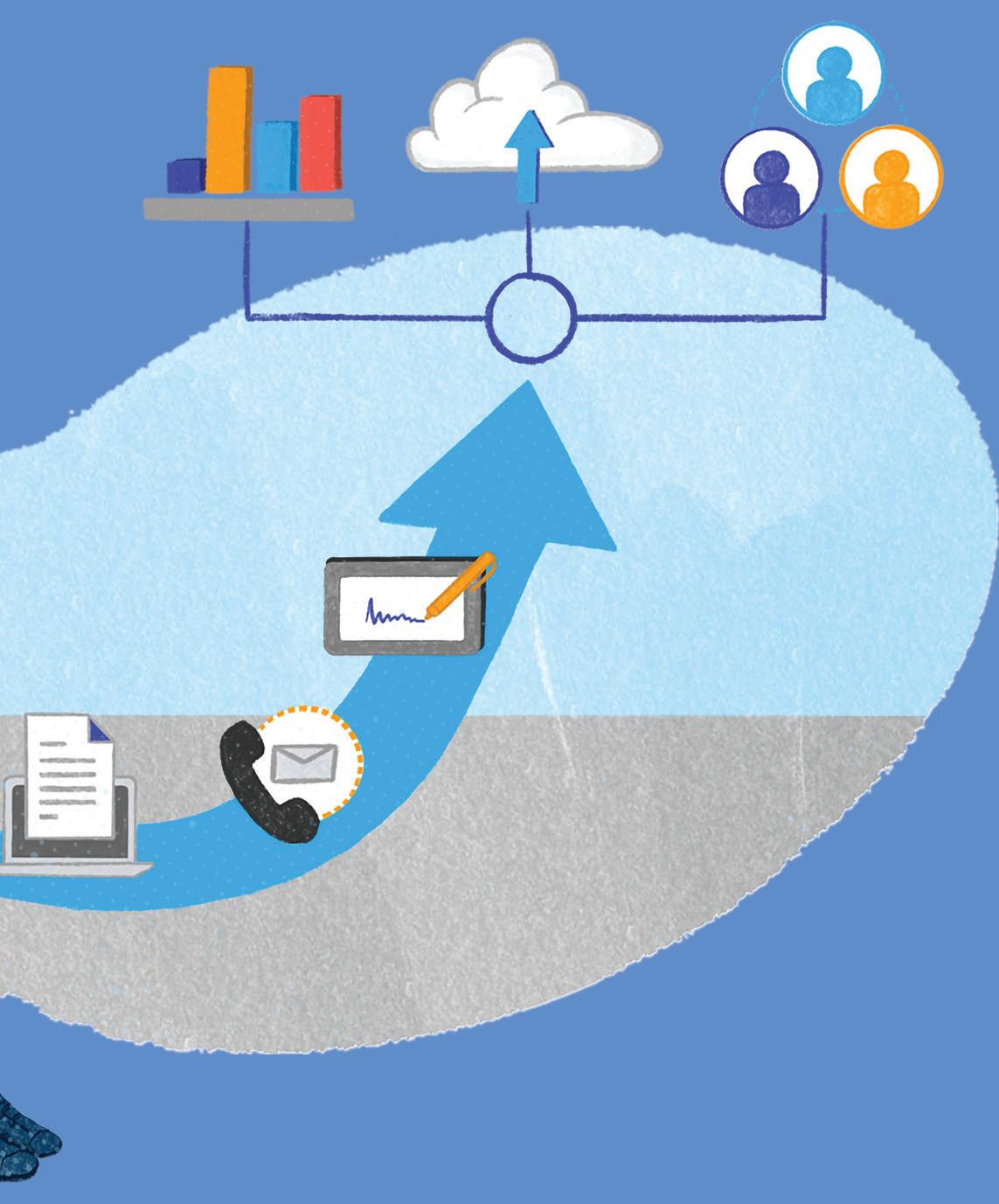

industry standards. Intelligent digital document management solutions empower finance teams to confidently prepare for audits by facilitating easy access to accurate information and ensuring compliance with data security protocols. Additionally, by establishing comprehensive audit trails and enforcing rigorous access controls, finance teams can effectively mitigate the risk of non-compliance and protect sensitive financial data. This I know first-hand from the Partners that we work with is a must in the modern-day business world.
From accounts payable, verification, approval processes and real-time data-driven decision-making, automation offers many different opportunities for greater accuracy, compliance, efficiency and strategic insight into financial operations and decision-making processes across the board of finance functions. And keep in mind, we’ve only been looking at finance! Marketing, sales, supply chain and other departments will each experience a diverse range of benefits by utilising automation tools.
But, I hear you ask… what long-term effects can this technology have on my business?
Unlocking the power of freed-up time
Simply put, with the time saved through automation, your business can redirect effort towards activities that yield higher value and contribute more directly to strategic objectives. By digitising workflows and implementing automated solutions, your business can unlock significant time savings, enabling it to channel resources towards critical endeavours such as strategic planning, in-depth analysis and innovation initiatives. This shift not only enhances operational efficiency but also fosters a culture of forward-thinking within an organisation, positioning yourself ultimately for long-term success in an increasingly competitive landscape. Automation not only impacts operational efficiency and strategic growth but also significantly enhances employee satisfaction and retention. With automation handling repetitive manual tasks, your employees can redirect their time and focus. This not only boosts productivity but also reduces the risk of burnout, contributing to higher retention rates and a more engaged workforce. This drives sustainable success and growth while fostering a positive work culture conducive to innovation and overall business excellence.
A future liberated from manual processes
Automation isn’t a scary thing. I believe it’s a tool all businesses should be leveraging to enhance productivity, drive innovation and stay competitive in today’s rapidly evolving landscape. By embracing automation, your business can prosper in a future liberated from manual tasks and instead focus on what really matters.
Want to find out more about how your business can thrive beyond manual processes? Visit Docuware.com or reach out to me on LinkedIn by searching David Malan, DocuWare. I’d love to help you on your automation journey.
europeanbusinessmagazine.com 95
Demystifying the Governance of EHS and ESG
Byline: Florian Haarhaus, International General Manager at NAVEX
It is no secret that navigating today’s highly regulated landscape requires a certain amount of strategic planning within the organisation. As we keep moving forward into an era of corporate sustainability, however, the need for such planning and coordination is going to become even more important: an indispensable capability that compliance and risk teams will need to get right.
To that end, we should clarify the swarm of risk-related acronyms –ESG, GRC, EHS, SRC, and more – buzzing around corporate offices these days. Each one has a legitimate role to play in helping companies manage risk, but compliance officers need to guide all those efforts in a cohesive manner. Otherwise, attempts to manage risk will veer into chaos.
Let’s first decipher what those acronyms mean. Then we can explore how compliance officers can manage them all (like a conductor leading an orchestra) for maximum effect.
From EHS to SRC and GRC to ESG
EHS is a specific subset of regulatory obligations related to environmental, health, and safety standards. They can include legally required environmental protection measures, sanitary standards for consumer products, workplace safety rules, and the like. SRC , or security risk category, categorises every threat as either physical threats, human threats, or cyber threats. This is a critical aspect of risk
management, that allows compliance and/or security officers to focus their security risk strategies and break down tasks.
GRC stands for governance, risk, and compliance, and the concept has floated around risk management circles for 20 years. Broadly speaking, a GRC program helps a company to comply with its regulatory obligations; manage other risks (such as cybersecurity attacks) that do not necessarily correspond to certain regulations; and govern the organisation so that emerging risks can receive prompt attention.
ESG , the buzzword of the moment, stands for environmental, social, and governance factors a company needs to manage. Some of these factors might be required by regulation, such as anti-pollution or fair labour standards; others might be voluntary, such as a commitment to using clean energy or offering employees paid time off to volunteer for good causes.
A considerable amount of overlap exists among these fields. They can be mapped into a word square:
E H S S R G R C
That is, all EHS risks are also ESG risks and GRC risks, which are considered in SRC; but not all ESG risks are GRC risks, and vice versa.
With the everchanging risk and regulatory landscape, compliance officers must be able to capture all necessary information about these overlapping priorities, so the company can both fulfil its regulatory compliance

obligations and meet its risk management goals in an efficient, reliable manner.
What strong compliance capabilities should do
The principal challenge for compliance officers is understanding the risks they have, so they can then collect the data needed to manage risks wisely.
For example, consider the risk of forced labour in the supply chain. That can be a GRC issue, since the company might be required to perform supply chain due diligence to comply with the German Supply Chain Due Diligence Act, the Norwegian Transparency
europeanbusinessmagazine.com 96

Act, the Modern Slavery Act in either the United Kingdom or Australia, and other laws. At the same time, forced labour is also an ‘S risk’ in ESG, since it can lead to bad publicity, consumer boycotts, and soured business relationships.
An effective compliance program, using the right technology, will bring those overlapping demands to light. It will map risks and regulatory compliance obligations visually, so companies can see which issues keep cropping up repeatedly. With that insight, they can determine which policies and controls serve all those interests most efficiently. For example: “We have these four different supply chain due diligence obligations; so, let’s collect the following
data from our suppliers in one single questionnaire, to assure compliance with all four rules at one stroke.”
As corporate sustainability and regulatory compliance keep converging (per the forced labour example above), a compliance system that can help navigate that convergence will become increasingly more important. Ultimately, businesses will need compliance technology that can:
• Incorporate new regulations and sustainability demands into existing compliance frameworks.
• Identify the overlap among those EHS, SRC, ESG, and GRC demands to determine which controls, policies, or procedures will satisfy multiple needs.
• Help collect and track that data in one central repository, for better reporting and a sense of the organisation’s ‘compliance posture’ at any given moment.
To be fair, those three bullet points have always been true as companies struggled first with financial reporting compliance (in the 2000s) and then privacy and security (in the 2010s). Today, the new challenge is sustainability.
The answer, however, is still the same. With clever use of GRC technology, companies will be able to identify and manage risks efficiently and at scale. This will hold true no matter what comes next.
europeanbusinessmagazine.com 97
Navigating the Intricate Network of Trade Compliance Obligations

Why FTAs?
FTAs are treaties between two or more countries designed to reduce or eliminate certain barriers to trade and investment, and to facilitate stronger trade and commercial ties between participating countries.
They also directly impact a company’s supply chain and manufacturing processes, as FTAs enable the identification of efficient sourcing alternatives of raw materials and components, as well as the evaluation of target markets. It is therefore no surprise to learn that the systematic consideration of FTAs influences a company’s decision-making process about manufacturing locations and market expansion strategies, all of which contribute to the profitability of the business and the cross-border movement of goods. A primary advantage of FTAs is the reduction or elimination of tariffs and other trade barriers. FTAs often involve the elimination or reduction of tariffs and duties on imports and exports between member countries, meaning that companies can import raw materials and components at a lower cost, reducing the overall production cost, or lower the cost of exports for finished goods, increasing the potential for market penetration and profitability. While lower production costs can lead to increased profitability for businesses, the cost advantage can also be passed on to consumers in the form of lower prices for goods and services. Although
In today’s globalised economy, businesses are constantly seeking ways to enhance profitability and gain a competitive edge. One powerful tool at their disposal is Free Trade Agreements (FTAs), which have become increasingly important in fostering international trade relationships.
there are many factors for this, competitive pressure and market demand are two key critical elements.
FTAs also enable organisations to enter new markets that would otherwise be difficult to enter due to trade barriers. This is permitted by preferential treatment and reduced duties that increase their customer base and revenue streams.
FTA Rules of Origin
FTA rules of origin determine a product’s origin within a trade agreement and dictate whether products qualify for preferential tariff treatment under FTAs. These rules vary between agreements due to differing objections and priorities of participating countries. FTA rules serve as a critical safeguard against non-members looking to exploit preferential tariffs established within the agreement.
FTA rules of origin precisely define what constitutes local production or substantial transformation within member countries and, by doing so, ensure that only goods meeting these criteria qualify for tariff benefits. This stringent verification process prevents trade deflection, where non-members reroute their products
through member nations to access reduced tariffs. Thus, FTA rules of origin not only protect the economic advantages intended for member countries, but also foster genuine trade among them to encourage the growth of mutually beneficial commerce and investment.
However, it must be noted that, knowingly or unknowingly, violating FTA rules of origin can lead to increased tariffs, penalties and damage to reputation — a critical aspect that is usually overlooked in international trade.
Maximising Benefits while Ensuring Compliance
To capitalise on reduced tariffs and barriers provided by FTAs, while ensuring compliance with rules of origin, organisations can implement several strategic decisions.
First, it is crucial to assess and optimise supply chain networks to exploit lower trade costs. For instance, relocating production facilities or sourcing materials closer to FTA partners can help businesses to take advantage of tariff reductions and logistical efficiencies, reducing costs and enhancing competitiveness.
europeanbusinessmagazine.com 98
Elena Ozyman, FTA Team Lead at Descartes explains how organisations can leverage FTAs for reduced costs, increased market access and improved competitiveness, as well as understand how to comply with FTA regulations.
However, of key importance is ensuring compliance with international trade regulations, which has become more challenging due to the growth of complex supply chains, the emergence of new markets and the implementation of strict regulatory frameworks.
Therefore, understanding the nuances of Free Trade Agreement (FTA) rules of origin is essential to ensuring businesses make informed decisions without being penalised.
Second, understand market diversification factors. Expanding into FTA covered regions offers companies a compelling opportunity to tap into new markets by tailoring market-specific strategies that align with the preferences and needs of local consumers. However, this entails thorough market research to understand cultural nuances, consumer behaviours and regulatory requirements, before companies can adapt their operations accordingly.
Third, invest in research and development (R&D) with a keen awareness of FTA implications. This involves adopting a strategic approach that tightly integrates the innovation process with sourcing and production decisions. By aligning R&D with the opportunities presented by FTAs, organisations can proactively shape product innovation to capitalise on reduced tariffs and trade barriers. This entails not only creating products that resonate with the diverse preferences of FTA-covered regions but also optimising the entire supply chain to ensure seamless integration of these innovations into production. This interconnected strategy places businesses in an ideal position to maximise the benefits of FTAs, fostering agility, cost-effectiveness, and market responsiveness.
Finally, make sure you understand FTA rules of origin. A common misconception is that FTAs have uniform origin rules. Rather, each agreement is distinct, reflecting the participating countries’ specific interests and

industries. The diversity of rules governing eligibility for preferential trade benefits, which includes factors such as country of origin, manufacturing processes, and value-added criteria, complicates international trade strategies. To navigate this complexity, organisations must understand FTA-specifics, product-specific rules, and other provisions of each FTA. It also necessitates ongoing monitoring and adaptation as FTAs may evolve and rules change.
Conclusion
FTAs play a vital role in shaping global commerce, and their rules of origin serve as a crucial framework to safeguard trade benefits and foster genuine economic cooperation. However, it is the business’ responsibility
to recognise the uniqueness of each FTA’s origin rules, stay updated with evolving regulations and tailor their compliance efforts to each product’s specific criteria.
A trusted partner can help organisations stay informed about the governing FTA and its specifics, optimising their trade strategies and ensuring compliance with the varying rules and preferences of each agreement. By following these essential steps, organisations can not only mitigate compliance risks but also leverage preferential tariff rates, contributing to the success and growth of their international trade operations in today’s interconnected and rapidly-evolving global business landscape.
Want to know more?
Download Descartes’ FTA Guide
europeanbusinessmagazine.com 99
ETHICAL AI: Preparing Your Organisation for the Future of AI
Rosemary J Thomas, Senior Technical Researcher, AI Labs Version 1
Artificial intelligence is changing the world, generating countless new opportunities for organisations and individuals. Conversely, it also poses several known ethical and safety risks, such as bias, discrimination, privacy violations, alongside its potential to negatively impact society, well-being, and nature. It is therefore fundamental that this groundbreaking technology is approached with an ethical mindset, adapting practices to make sure it is used in a responsible, trustworthy, and beneficial way.
To achieve this, first we need to understand what an ethical AI mindset is, why it needs to be central, and how we can establish ethical principles and direct behavioural changes across an organisation. We must then develop a plan to steer ethical AI from within and be prepared to take liability for the outcomes of any AI system.
What is an ethical AI mindset
An ethical AI mindset is one that acknowledges the technology’s influence on people, society, and the world, and understands its potential consequences. It is based on the perception that AI is a dominant force that can sculpt the future of humankind. An ethical AI mindset ensures AI is allied with human principles and goals, and that it is used to support the common good and the ethical development of all.
It is not only about preventing or moderating the adverse effects of AI, but also about exploiting its immense capability and prospects. This includes developing and employing AI systems
that are ethical, safe, fair, transparent, responsible, and inclusive, and that respect human values, autonomy, and diversity. It also means ensuring that AI is open, reasonably priced, and useful for everyone – especially the most susceptible and marginalised clusters in our society.
Why you need an ethical AI mindset
Functioning with an ethical AI mindset is essential1. Not only because it is the right thing to do, but also because it is expected, with research showing customers are far less likely to buy from unethical establishments. As AI evolves, the expectation for businesses to use it responsibly will continue to grow.
Adopting an ethical AI mindset can also help in adhering to current, and continuously developing, regulation and guidelines. Governing bodies around the world are establishing numerous frameworks and standards to make sure AI is used in an ethical and safe way and, by creating an ethical AI mindset, we can ensure AI systems meet these requirements, and prevent any prospective fines, penalties, or court cases.
Additionally, the right mindset will promote the development of AI systems that are more helpful, competent, and pioneering. By studying the ethical and social dimensions of AI, we can invent systems that are more aligned with the needs, choices, and

principles of our customers and stakeholders, and can provide moral solutions and enhanced user experiences.
Ethical AI as the business differentiator
Fostering an ethical AI mindset is not a matter of singular choice or accountability, it is a united, organisational undertaking. To integrate an ethical culture and steer behavioural changes across the business, we need to take a universal and methodical approach.
It is important that the entire workforce, including executives and leadership, are educated on the need for AI ethics and its use as a business differentiator2. To achieve this, consider taking a mixed approach to increase awareness across the company, using mediums such as webinars,
1 https://www.mckinsey.com/featured-insights/in-the-balance/from-principles-topractice-putting-ai-ethics-into-action
2 https://www.frontiersin.org/journals/psychology/articles/10.3389/ fpsyg.2023.1258721/full
europeanbusinessmagazine.com 100

newsletters, podcasts, blogs, or social media. For example, your company website can be used to share significant examples, case studies, best practices, and lessons learned from around the globe where AI practices have effectively been implemented. In addition, guest sessions with researchers, consultants, or even collaborations with academic research institutions can help to communicate insights and guidance on AI ethics and showcase it as a business differentiator.
It is also essential to take responsibility for the consequences of any AI system that is developed for practical applications, despite where organisations or products sits in the value chain. This will help build credibility and transparency with stakeholders, customers, and the public.
Evaluating ethics in AI
We cannot monitor or manage what we cannot review, which is why we
must establish a method of evaluating ethics in AI. There are a number of tools and systems than can be used to steer ethical AI , which can be supported by ethical AI frameworks, authority structures and the Ethics Canvas.
An ethical AI framework is a group of values and principles that acts as a handbook for your organisation’s use of AI. This can be adopted, adapted, or built to suit your organisation’s own goals and values, with the stakeholders involved in its creation. An example of this can be seen in the UK Government’s Ethical AI Framework 3 , and the Information Commissioner’s Office’s AI and data protection risk toolkit4 which covers all ethical risks in the lifecycle stages – from business requirements and
3
https://www.gov.uk/guidance/understanding-artificial-intelligence-ethics-and-safety
4 https://ico.org.uk/for-organisations/uk-gdpr-guidance-and-resources/artificial-intelligence/guidance-on-ai-and-data-protection/ ai-and-data-protection-risk-toolkit/
design to deployment and monitoring for AI systems.
An ethical AI authority structure is a group of roles, obligations and methods that make sure your ethical AI framework is followed and reviewed. You can establish an ethical AI authority structure that covers several aspects and degrees of your organisation and delegates clear obligations to each stakeholder.
The Ethics Canvas can be used in AI engagements to help build AI systems with ethics integrated into development. It helps teams identify potential ethical issues that could arise from the use of AI and develop guidelines to avoid them. It also promotes transparency by providing clear explanations of how the technology works and how decisions are made and can further increase stakeholder engagement to gather input and feedback on the ethical aspects of the AI project. This canvas helps to structure risk assessment and can serve as a communication tool to convey the organisation’s commitment to ethical AI practices.
Ethical AI implications
Any innovation process, whether it involves AI or not, can be marred a fear of failure and the desire to be successful in the first attempt. But failures should be regarded as lessons and used to improve ethical experiences in AI.
To ensure AI is being used responsibly, we need to identify what ethics means in the context of our business operations. Once this has been established, we can personalise our message to the target stakeholders, staying within our own definition of ethics and including the use of AI within our organisation’s wider purpose, mission, and vision.
In doing so, we can draw more attention towards the need for responsible use policies and an ethical approach to AI, which will be increasingly important as the capabilities of AI evolve, and its prevalence within businesses continues to grow.
101
europeanbusinessmagazine.com















































































































































































 David Malan, Sales Director, UK & Ireland, DocuWare
David Malan, Sales Director, UK & Ireland, DocuWare


































